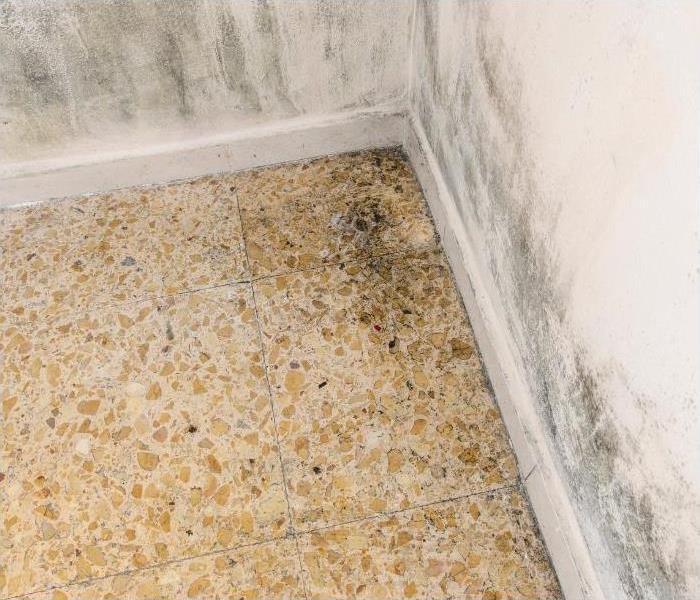Archived Blog Posts
Minimize the Risk of Fire Danger in Your Home
2/24/2022 (Permalink)
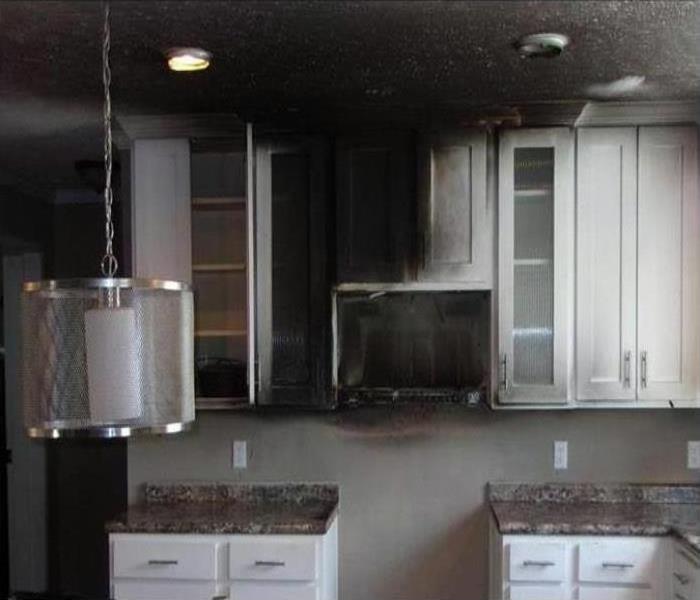 Fire damage in a home in Mount Pleasant, TN.
Fire damage in a home in Mount Pleasant, TN.
Fire is a word no one likes to think about, much less experience in his or her home in Mount Pleasant, TN. The loss of a home’s structure, contents, and harm to family members in a home fire is a devastating and traumatic experience. The good news is that risks can be minimized with careful fire preparation practices.
Your home and family are unique and so will your preparations be, but there are some basics that should be attended to in order to prevent a blaze from breaking out. Here are some of the basic items to attend to.
Basic Steps to Fire Preparation
- Make sure the furnace and water heater are in good working order and well-maintained
- Never operate space heaters or candles near curtains or other flammable materials or leave them unattended
- With your family, make a plan for escape in the event of a fire and make sure they all now how to call for help
- Use fire-safe procedures when cooking and don’t allow oil or grease near heating elements or allow to overheat
- Install an adequate number of smoke detectors throughout the home and keep working fire extinguishers at easy reach.
Involving Your Household
Fire safety is a family event. Together with household members, discuss the steps needed. Let everyone be involved in helping – get them excited about fire preparation and prevention rather than afraid of a potential home fire. Tailor your rules to each person as needed - Don’t allow a teenager to burn an open candle in their bedroom for instance. Make sure any family members who smoke do so safely, not smoking in bed and making sure all cigarettes and any matches are fully extinguished.
An emergency building restoration company in Mount Pleasant, TN, can do much to help repair and salvage your home after a fire. But with proper fire safety practices, and participation from your family, a blazing disaster is much less likely to happen in your home.
3 Steps To Take After Your Water Heater Breaks
2/10/2022 (Permalink)
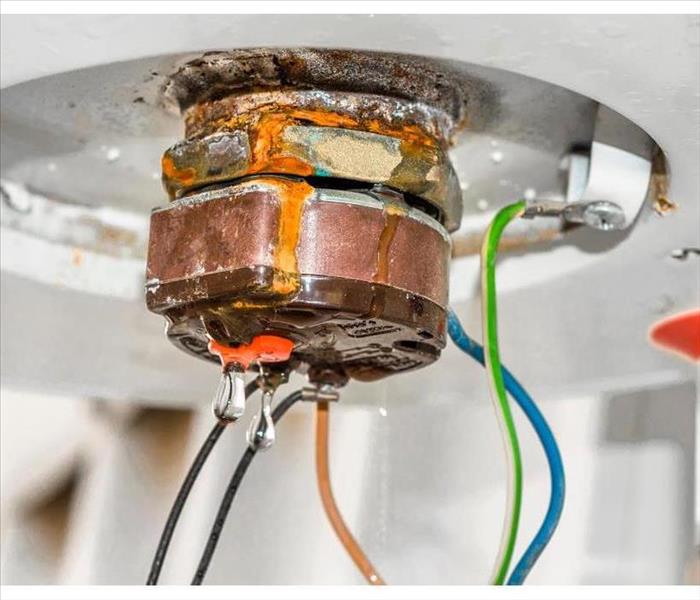 Water from your leaking water heater is classified as “category 1,” meaning it’s clean water.
Water from your leaking water heater is classified as “category 1,” meaning it’s clean water.
Steps To Deal With a Failed Water Heater
When faced with a leaking water heater, it can feel like a whirlwind of shock and confusion while you try to figure out what to do. Repairing water damage is costly, and you often have only a short amount of time to successfully protect your home and resolve the issue. Here are the first steps you need to take to deal with a failed water heater.
1. Shut Off the Main Water Supply
Shutting off the water as soon as possible ensures that no additional water floods your home. Otherwise, the water will just keep pouring in from the leaking water heater.
2. Call a Professional
If you are concerned about how much water impacted flooring and walls, it will be important to procure an expert’s help with water removal. Your local specialists in Pulaski, TN, will have the necessary insight and equipment to ensure that all water and hidden moisture from the broken water heater is safely removed, diminishing the risk of mold or rot from water damage.
3. Dry the Area
While you are waiting for your local water damage restoration professionals to arrive, you want to make sure you have no standing water ruining flooring and furniture, so do your best to dry the area thoroughly. This includes setting up industrial-sized fans, removing furniture and opening windows to encourage air flow.
4. Clean Where Necessary
Thankfully, water from your leaking water heater is classified as “category 1,” meaning it’s clean water. With category 1 floodwaters, there isn’t usually a pressing need to sanitize after a flooding situation. You’ll still want to clean and dry any affected furnishings to prevent black mold, but cleanup usually is less expensive overall.
In short, if your water heater malfunctions, shut off the water, call for backup and do what you can while you wait. By acting quickly and being prepared, you can set yourself up for a fast restoration process.
Business Management: Preparing for Disaster
2/5/2022 (Permalink)
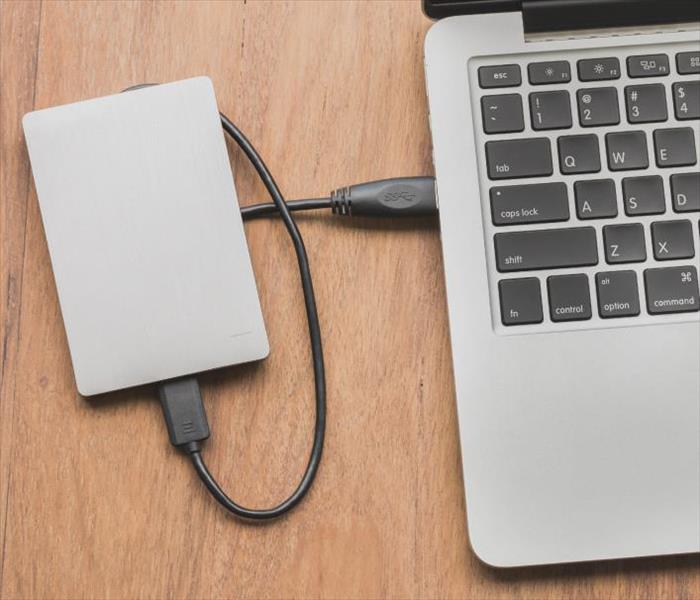 Keep back up of all data.
Keep back up of all data.
Disaster Preparedness
Disaster preparedness is an often overlooked element of business. However, knowing how you will react in an emergency has a lot to do with survival and, essentially, business preparedness. Without a definitive and well-executed plan, you potentially risk losing your business in the weeks and possibly months following a disaster. To ensure the survival of your company, make sure you at least understand the four essential elements of disaster preparation.
1. Know Your Insurance Policy
It is not enough to know that you have insurance coverage. You need to understand the extent and limitations of that policy so that you can make more informed decisions in the event of a disaster. Being intimately aware of your policy’s restrictions means that you can be better prepared for your financial obligations if an emergency should occur.
2. Contact Critical Vendors
Disaster preparedness mandates that you keep a list of all contacts pertinent to business operations. This list should have the information of all vendors critical to your services so that you can keep them in the loop. You don’t want vendors restocking your inventory at a facility that doesn’t exist anymore.
3. Keep Backups of All Data
If your building experiences a fire, you don’t want your company’s critical files turning to ash. Backing up all critical data via secure cloud services or off-site facilities is a great way to protect data from fire or water damage. There are companies called managed service providers that specialize in protecting digital information.
4. Develop a Response and Communication Plan
While a disaster restoration specialist in the Spring Hill, TN, area can help you create a response plan by assessing your business, you will need to create an effective communication plan with your managers and other critical staff. Response and mitigation are only part of the solution. As a manager, you must keep the business running even in the absence of a facility.
Disaster preparedness is a critical component of any business operation. When disaster strikes, your business cannot afford to halt altogether. Maintaining pivotal operations for your brand's survival is vital.
Tips for Salvaging Electronics After a Fire
1/26/2022 (Permalink)
 Following an electrical fire, you should unplug everything.
Following an electrical fire, you should unplug everything.
How to Recover Electronics After a Fire
An electrical fire can result in significant property damage. These fires can result in damage to the building itself or to the possessions inside, including electronics. This is a frightening prospect for business owners in Columbia, TN, who are worried about spending a lot of money to replace computers, appliances and other electronics. Fortunately, a professional fire damage remediation service can help get your electronics back up and running soon. Here are some things to keep in mind to stop you from doing more harm than good.
1. Keep Warranties
Most warranties will cover damage that occurred as a result of disasters. You should hang onto the warranties for all electronics from computers to microwaves. Most of these warranties will be good for at least one year.
2. Unplug Everything
Following an electrical fire, you should unplug everything. There are a couple of reasons why this should be done. A fire could cause additional damage to an electronic if it is still receiving power. There is also a concern that the water brought in by firefighters to subdue the fire could cause the electronics to malfunction.
3. Do Not Attempt to Turn Electronics Back On
Some electronics will still technically be fine after a fire. However, if you attempt to turn them back on without having a professional remediation expert look at them first, then they could short-circuit. Water may be present in the system. That water can be removed and the rest of the items can be salvaged, but if you turn them on when components are still wet, then you could inadvertently damage something that would have been fine without your intervention.
The best course of action immediately following an electrical fire is to simply leave electronics alone. Let a professional handle the computer cleanup. Trying to fix something without knowing what you are doing could end up costing you more.
Don’t Wait for an Insurance Adjuster To Act After a Residential Flood
1/12/2022 (Permalink)
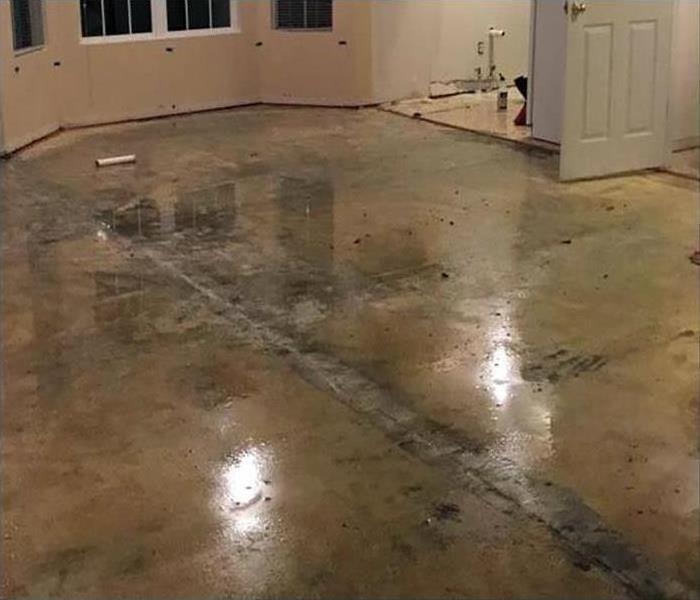 Storm damage cleanup in Lynnville, TN.
Storm damage cleanup in Lynnville, TN.
Three Reasons You Should Not Wate Time Following a Flood
No one wants to go through a home flood. Still, flood damage in Lynnville, TN, is more common than you might think. As you probably know, the hours following such an event are critical. If you wait for an adjuster from your flood insurance company before taking action, you may inadvertently allow more damage to occur. Here are three important reasons you should not waste time following a flood.
1. Water Gets Everywhere
Because it is a liquid, water can seep into parts of your home you may not think about. Even worse, sealed portions of your basement, crawl space and walls often prevent air from naturally drying moisture. If you wait for your adjuster to arrive before beginning water remediation or damage repair, the processes may be both more expensive and more invasive.
2. Mold Grows Fast
Part of the reason for having comprehensive flood insurance is to cover the cost of repairing mold damage. Like water, mold can grow in hidden parts of your home. Remediation experts have the knowledge, skill, experience and tools to quickly locate and address mold and mildew. Rather than waiting for an adjuster to inspect your home, working with a reputable service in the days following a flood is often your best bet to restore your home’s comfort, appearance and value.
3. Adjusters Are Busy
If broken pipes or backed-up plumbing caused your flood, your adjuster may respond quickly. On the other hand, if your home was part of widespread flooding, the insurance company’s representative may have a full schedule. In fact, you may wait weeks before your adjuster arrives. Remember, acting quickly is important, and waiting may cause more damage.
As a diligent homeowner, you carry flood insurance. You also likely have a duty to mitigate damage caused by rising waters. Rather than waiting until your insurance adjuster can inspect your home, begin the remediation and restoration process as soon as you can.
Removing Smoke Damage and Odor
12/31/2021 (Permalink)
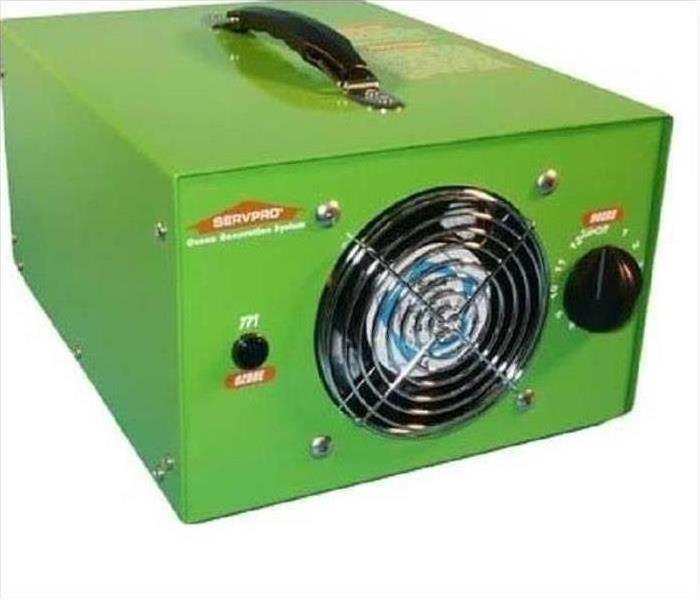 Ozone cleaning is one of the most effective methods of removing smoke odor.
Ozone cleaning is one of the most effective methods of removing smoke odor.
Removing Smoke Damage and Odor
Restoring a business after a fire doesn't just involve repairing structural damage and replacing lost items. The lingering effects of smoke odor and smoke-related damage can be an additional, unwelcome hindrance to getting your business up and running. While an inexperienced individual can successfully remove evidence of smoke from a building, contacting a professional smoke cleaning service is always advisable. Specialists are experienced in addressing individual problems that might arise and will know how to avoid further damage to your property.
1. Assessing the Damage
Because smoke interacts chemically with many substances, it is essential that you act as quickly as possible to remove smoke residue from all affected surfaces. Inevitably, some items will be beyond repair, so identifying and removing these will significantly speed up the restoration process. Certain complex objects, such as air conditioning units can be restored, but require deep cleaning that may take time and know-how to disassemble.
2. Removing Physical Residues
Manually removing smoke residues is a necessary step for removing smoke odor from surfaces or items. It is important that you understand which smoke cleaning method should be used for which surfaces. Upholstery fabrics, for example, are likely to suffer damage from wet cleaning. Porous materials, on the other hand, are most easily cleared with a wet sponge.
3. Using Proven Chemical Cleaning Methods
Ozone cleaning and thermal fogging are two of the most effective methods of removing smoke odor. When used together, these usually eliminate all evidence of smoke damage from clean interiors. A complete exposure of all rooms will ensure that the job does not need to be repeated in the future.
Your Mount Pleasant, TN fire has probably created a significant strain on your business. With the proper smoke cleaning techniques, you can get back to work. Smoke removal is covered by many insurance plans, so don't skimp on the restoration process. When in doubt, talk to a professional.
Prevent a Disaster With Proper Fire Sprinkler Maintenance
12/28/2021 (Permalink)
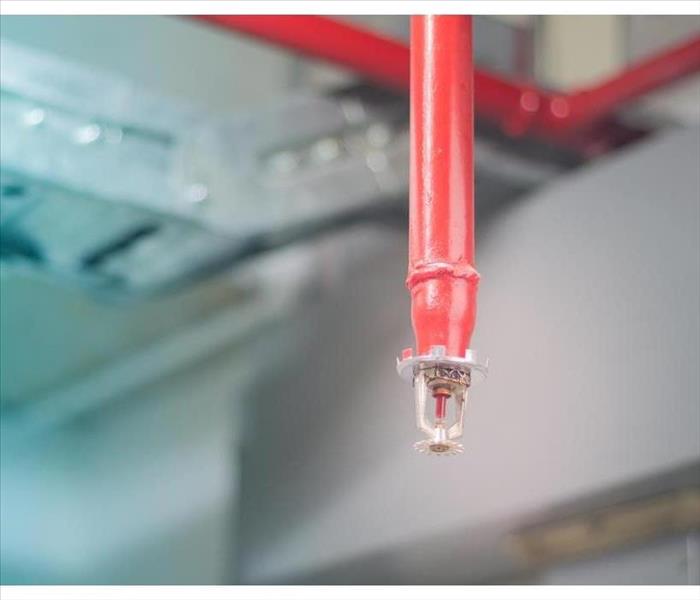 Keeping up with your fire sprinkler maintenance is just as important as fire prevention.
Keeping up with your fire sprinkler maintenance is just as important as fire prevention.
Fire Sprinkler Maintenance
Fire sprinkler maintenance is an easy thing to forget when most businesses will never experience a fire. Fire sprinklers on your Spring Hill, TN, property need to be checked regularly in order to prevent a disaster. When sprinklers fail to turn on, the fire damage can be devastating. Follow these simple steps to ensure your sprinklers work well.
1. Make Sure the Water Is Turned On
It may seem obvious, but missing this step can be devastating. Confirm the water valves leading to your sprinklers are turned on. This step needs to be performed after all maintenance jobs involving water valves.
2. Do Not Paint Over the Sprinklers
Perhaps it is tempting to paint over fire sprinklers to help them blend into the décor. However, it is important to remember they are functional, not decorative. Paint can block water flow, thus preventing them from fulfilling their purpose.
3. Do Not Block the Sprinklers
Make sure you do not block sprinklers, especially when utilizing precious storage space. Sprinklers cannot do their job well if they are obstructed.
4. Check for Corrosion or Build-up
This sprinkler maintenance step is similar to not painting over the sprinkler system. Make sure to periodically check for corrosion or buildup so the sprinklers can work optimally.
5. Make Sure the Sprinkler Pipes Don’t Freeze
Saving money by turning the heat down in an empty building may seem like a practical choice. The problem is that wet pipes can freeze in cold temperatures, preventing the sprinklers from functioning properly. Keep your building warm enough to prevent freezing pipes.
6. Do Not Hang Things From Sprinklers
While it is tempting to hang items from sprinklers, remember that sprinklers are not meant to hold any kind of weight. Hanging things from sprinklers can cause them to bend or break, and a broken sprinkler is no help if there is a fire.
Keeping up with your fire sprinkler maintenance is just as important as fire prevention. Even with proper maintenance, accidents can still happen. When they do, your emergency restoration services partner can help get you back to work again.
What To Do for a Flooded Toilet
12/23/2021 (Permalink)
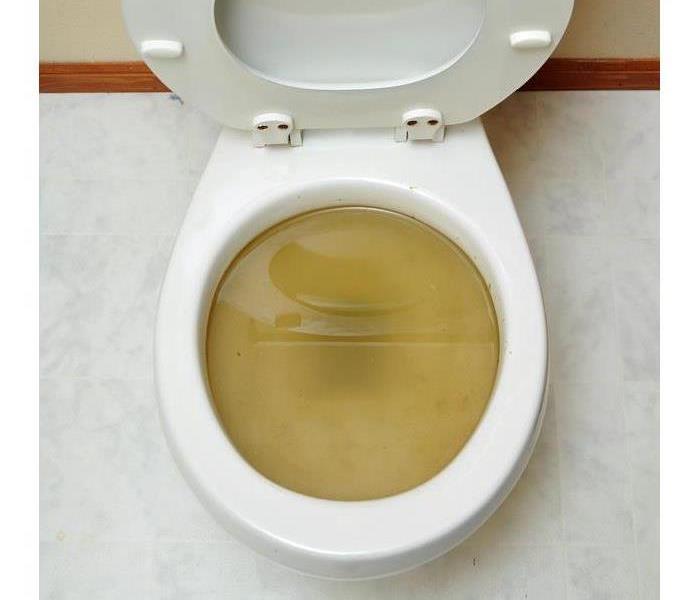 A flooded toilet can cause damage to your home in Pulaski, TN.
A flooded toilet can cause damage to your home in Pulaski, TN.
What to Do If Your Toilet Is Flooded
In busy Pulaski, TN, there are few more disruptive tasks than having to clean a toilet overflow at home. Bathroom-goers rarely plan for sewer damage when they enter the facilities, yet most will encounter a flooded toilet at some point in their lifetime. After the initial panic rests, here is what to do in the face of unexpected plumbing issues.
Cut Off the Water Supply
Regardless of where the problem is coming from or the extent of sewer damage, a solution will be difficult to find without first bringing flowing water to a halt. This can be done in one of three ways:
- Open the toilet tank and raise the floating cup. This action simulates a full tank and signals the system to stop flowing.
- Turn the toilet tap into an “off” position. The valve to do this is usually behind the toilet and below the tank.
- If all else fails, shut off the main water supply to the residence. The valve for this is normally in the basement.
Find and Fix the Problem
With water stopped and protective barriers in place, it is safe to explore the sewer damage to uncover a solution. A superficial clot can be remedied with a simple plunger or coil. Be sure to scoop excess water into a separate container before attempting to remove a clog with any tools. Plungers work to suck blockages out from the entrance of the bowl, while a coil can be inserted deeper into the toilet pipes to remove more stubborn roadblocks.
If the problem is still out of reach, it may be time to call in professionals. A water damage repair or sewage company is best equipped to handle severe or recurring cases of overflow, as this could indicate a more serious backup. Their professionals can perform a full plumbing assessment and take care to rid all mess and germs.
No matter when a flooded toilet occurs, a solution is within reach. Keep calm and follow the simple tips above to get back on dry land.
Help Prevent Fire Damage In Your Commercial Kitchen With These Tips
12/23/2021 (Permalink)
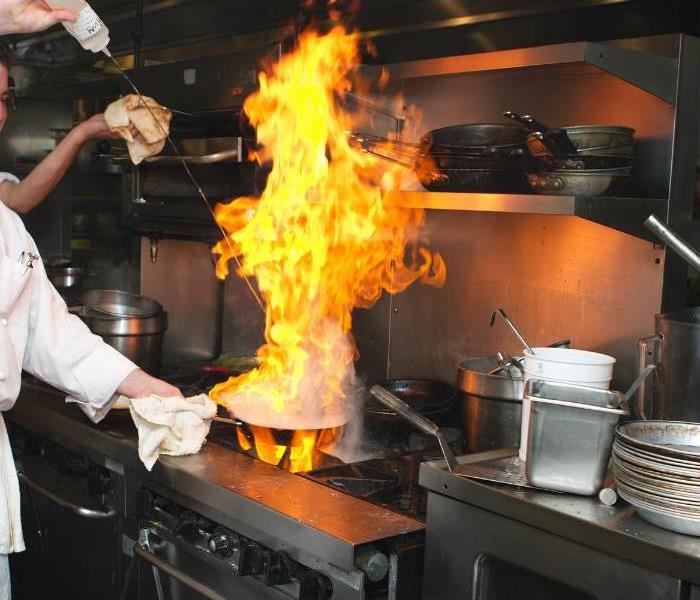 Fire in a Commercial Kitchen While Cooking
Fire in a Commercial Kitchen While Cooking
If you own a restaurant, bar or commercial kitchen in Columbia, TN or Hollywood, TN, reducing fire risk is critical to continued profitable operation. The National Fire Protection Association (NFPA) reports that fire departments responded to over 7,410 structure fires in the kitchen of restaurants and bars in 2017 alone. Most of these fires were preventable, resulting in three deaths, 110 injuries, and $165 million in property damage annually in commercial kitchens. These tips will help keep you and your staff safe while preventing shutdowns due to fire code violations.
What Are My Ducting and Air Movement Requirements to Prevent Fire?
While Chapter 7 of the NFPA 96 Standard for Ventilation Control and Fire Protection of Commercial Cooking Operations covers this extensively, here are a few key items to keep in mind.
First, commercial kitchen ducts should never pass-through firewalls, share an exhaust system with the building ventilation, or have obstructed access panels. While doing these things on a commercial kitchen remodel can save costs in the short term, the fire risk increases significantly. If disregarded, your commercial kitchen work will likely not pass inspection.
Make sure to maintain a minimum clearance of 18 inches between combustible materials and the kitchen ducts. This standard is based on Section 4.2 of the NFPA 96, however is one of the easiest to disregard once the kitchen is operational. Ducts can build up high levels of radiant heat that can ignite combustible materials like boxes, cups, plates, utensils, or other kitchen materials.
If you would like additional information on the types of combustible and non-combustible materials that should and shouldn't be kept near the duct, consult Chapter 3 of the NFPA.
What Are My Commercial Kitchen Fire Extinguisher Requirements?
"The NFPA 96 requires automated fire suppression equipment for all grease removal devices, hood exhaust plenums, and exhaust duct systems in a commercial kitchen, as well as any cooking equipment that produces grease-laden vapors." - Koorsen Fire & Security
The NFPA 96 requires use of class K fire extinguishers in conjunction with automatic fire extinguishing systems. These extinguishers also require installed placards stating their extinguisher class. However, in the case of a commercial kitchen fire, it's critical to activate the automatic fire extinguisher system before using portable-type extinguishers. This is because high-efficiency cooking appliances in many modern commercial kitchens are capable of achieving high temperatures that can raise the vegetable oils to intensely high temperatures. When oil ignites at these high temperatures, it can already be so hot that a portable extinguisher is not enough to stop the flames.
Another standard that you should familiarize yourself with is the UL 300 standard.
According to this article by Insureon, a kitchen’s cooking equipment must meet these UL 300 requirements:
- Fire-extinguishing nozzles in the hood, ducts, and above each cooking appliance
- An automatic fuel shut-off capabilities for both gas and electric power sources
- A manual fuel shut-off pull for all power sources
- A wet-chemical fire-extinguishing system that meets UL 300 criteria (one of which is undergoing semiannual checkups by a certified professional)
If you need immediate assistance after a fire, our teams are available 24/7/365. With our promise of being Faster to Any Size Disaster, you can count on SERVPRO of Maury/Giles Counties to be there when it counts. Call us today at (931) 388-4248 for rapid assistance.
SERVPRO of Maury & Giles County is Your Premier Local Restoration Team
12/20/2021 (Permalink)
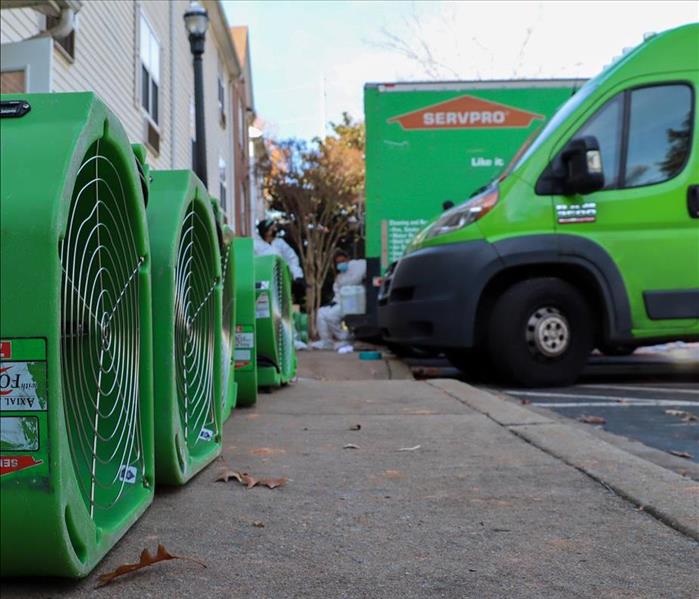 SERVPRO of Maury & Giles Team Hard at Work
SERVPRO of Maury & Giles Team Hard at Work
Here at SERVPRO of Maury & Giles Counties we pride ourselves on getting and keeping quality, qualified team members that can be trusted with large loss jobs on the smallest scale to large-territory catastrophic loss in Waco, TN, Elkton, TN and more. Maintaining an average of 150 personnel over three divisions, and multiple states – here are the strategic ways that we maintain the talent that you need, when you need it so that we can always be….Here to Help.
Restoration Team Onboarding
One of the things that makes SERVPRO of Maury & Giles Counties an industry leader in commercial large loss restoration, starts with our extensive onboarding program. Every new employee goes through onboarding which includes the history of SERVPRO (did you know we have been around since 1967?) Our family-grounded roots, on-the-job training (OJT) with other divisions, from when you first call about property damage, until we walk the final job with you and make sure that you are happy, and all of the logistics that go on in between.
Quality Property Damage Repair Training
All our restoration professionals attend, complete, and pass IICRC training – the science behind drying. We also have in-house training bays, where new technicians can learn the proper way to test and remove drywall, learn how our equipment operates, and practice restoration skills before they are moved into live property damage events.
Continued Restoration Certifications
SERVPRO Disaster Recovery is a career path for our industry professionals, as our certified experts continue with training throughout their SERVPRO careers. Here is a sampling of some of the many certifications that we offer to our staff to ensure that you have the highest level of adept professionals, restoring your business quickly and safely so that you can get back to doing, what you do best.
WRT – Water Damage Restoration Technicians
AMRT – Applied Microbial Remediation Technicians
ASD – Applied Structural Drying
CDS – Commercial Drying Specialist
FSRT – Fire and Smoke Restoration Technician
ICRA – Infectious Control Risk Assessment
Our experts are trained in advanced restoration technology and techniques.
Property Restoration Team Coaching
We tend to attract lifetime learners because that is what we are! With every day and every job being completely different (from the pigeon that caught a building on fire with a lit cigarette – True Story! to the bride on her wedding day, who hung her wedding gown on a sprinkler head on the 17th floor of her hotel – TRUE STORY!), we must stay on our toes!
Our technicians are coached daily in safety meetings (before entering your property) along with weekly, scheduled coaching sessions. We want our guys and gals to have the confidence and expertise to handle any mold, water, or fire damage situation, no matter how unique, so they are empowered to do whatever it takes to keep your business doors open, if possible, in the event of a disaster.
Commercial Restoration Management Expertise
Our management team is one of the best in the industry, don’t take our word for it either! Our employee reviews and quarterly SWOTs give us this information on an ongoing basis. Don’t be surprised if you see a Director, President, or CEO walking your affected area with one of our skilled Project Managers. Our management team’s willingness to get in the trenches with our crews is one of the many things that make us exceptional and set us apart.
Family Work Environment
While we may be a large-scale $40M Disaster Recovery Team uniquely qualified to handle any size loss, our strong beliefs and value systems are built on our grass-roots family environment. And we care for our customers with that same “family” heart.
Growth Opportunities for Restoration Professionals
Because we hold the lifetime learner in such high regard, there are growth opportunities available to every SERVPRO employee! Our current President and Vice President started with a SERVPRO in their teenage years as water technicians. We understand our industry unlike any other, we created the blueprint, and we have been recreating it ever since.
Here to Help for All of Your Property Damage Needs
Our team members have been built, like a machine with a heart to respond fast, to care, to do the right thing, and do it with excellence.
We are proud when our team is called to respond to one of your bad days. Because personally, we know you are in the best hands in the industry, and it is about to get better.
If you or someone you know wants to start an amazing career OR if you simply want to know more about protecting your facility from a disaster, contact me via email.
Heather Featherstone – Director of Sales and Marketing
7-year SERVPRO Lifetime Learner
Heather.Featherstone@here2help.com
The Main Stages of Fire Restoration
12/1/2021 (Permalink)
 Fire damage in Columbia, TN.
Fire damage in Columbia, TN.
The Main Stages of Fire Restoration
The intense heat of a blaze scorches walls, leaving behind charred remnants of your home in Columbia, TN. The pictures are damaged. Curtains appear ruined. Holes and blackness encompass the entire building. The ash and soot can be hard to face, but, in time, fire restoration can clear it away, getting you back to a better place. The process takes time, so be prepared. Understand the measures taken to ensure your property gets back to the normal you desire.
1. Assess and Protect
The smoke damage could cause issues to your home. Therefore, before patching and washing take place, a remediation team usually arrives to survey the premises, determining the extent of the trouble. Allow the professionals to review the following areas:
- Exposure to elements
- Structural integrity
- Security complications
- Electrical hazards
- Soot damage
- Water saturation
Some of these problems are not visibly evident. After investigating, the crew spends time securing the premises, preventing additional environmental exposures as well as safeguarding the property. This allows for time until the full mitigation begins.
2. Scrub and Clean
The fire restoration company starts by drying everything up. The hoses used to quench the flames flooded wall and floors. Left alone, this could produce mold. Therefore, it's important to air out the space. Dehumidifiers pull up the excess moisture. Then, the workers focus on content cleaning and sanitizing. Some items may need removal, depending on the amount of contamination, so the staff may take out portions of carpeting or the drywall. Using high tech equipment, they can then wash the grey residue, attempting to salvage personal assets.
3. Rebuild and Rest
With damage cleaning underway, the employees tackle construction projects. This includes activities such as mending holes and repainting. They may also replace discarded or ruined goods.
Over time, what seemed lost looks a lot more familiar. The fire restoration experts evaluate the destruction, prepare for rehabilitation, and reconstruct.
Why Does Mold Happen? Here are a Few Reasons
11/22/2021 (Permalink)
The key to mold control in Pulaski, TN is moisture control. Understanding how to control mold in your commercial building can help employees feel more comfortable in their work environment while preventing expensive repairs from mold and water damage. It's important to perform routine maintenance so you can pinpoint potential water entry issues and properly address them early before they have the chance to become a critical issue. This article will provide you with helpful knowledge necessary to understand why mold can happen in your commercial building in the first place.
Understanding Mold-Causing Condensation
Mold is everywhere and can't be completely eliminated. However, it requires moisture to thrive and spread. Knowing what can cause that condensation will help you pinpoint problem spots and solve them before they can become serious issues.
Condensation forms when warm air encounters a colder surface. Cold surfaces naturally occur with large temperature differences between the inside and the outside of a building. This naturally occurring event where water vapor moves through building materials from moist to dry air is called Diffusion.
Capillary Action, where small openings or pores in building materials allow water to wick upwards into the building, can be another source of water entry. This can be seen in materials like drywall, wood flooring, plywood, and other water-sensitive building materials.
Stack Effect is where moist air rises from a crawlspace or basement into the building's living spaces.
Another source of condensation or water damage can be forceful winds. When the wind combines with driving rain, water can seep into a commercial building or home through cracks and crevices that are normally unseen.
Proper ventilation, building design & maintenance, and a well-functioning AC system help prevent that condensation from becoming a mold-causing issue.
Common Sources of Moisture and Water Damage
The most common place you'll see condensation is on windows, especially if they are foggy or have water spots. Window condensation happens when cool outside air encounters warm indoor air near the window.
Air conditioning ducts are notorious for collecting moisture that then causes mold to grow inside them. The best thing to do to prevent AC issues is to establish a routine maintenance schedule to ensure proper functioning HVAC systems.
Vinyl Wallpaper can also often harbor mold behind it because of diffusion. If installed on outer walls that are more exposed to temperature differences, this issue is more likely to occur.
Condensation on cool metal surfaces such as copper pipes can be another common source of moisture and mold.
Failing building vapor barriers can be more serious moisture and mold-causing issues. When building foundations or walls are installed, usually vapor barriers such as 6mil plastic sheeting, house wrap, or primer paint are also installed to create waterproofing separation between the inside and outside of the building. If too many holes, ruptures, cracks, or damage occur to these vapor barriers, moisture entry is much more likely to occur.
While there are many potential causes for moisture and water damage to a home, getting rid of and preventing mold isn't just an aesthetic matter. That's why SERVPRO of Maury & Giles Counties uses advanced protocols to quickly locate, identify and remediate mold infestations in your home.
Call us today at (931) 388-4248 for rapid 24-hour assistance.
What are the Types of Fire? Understanding Smoke & Soot
11/12/2021 (Permalink)
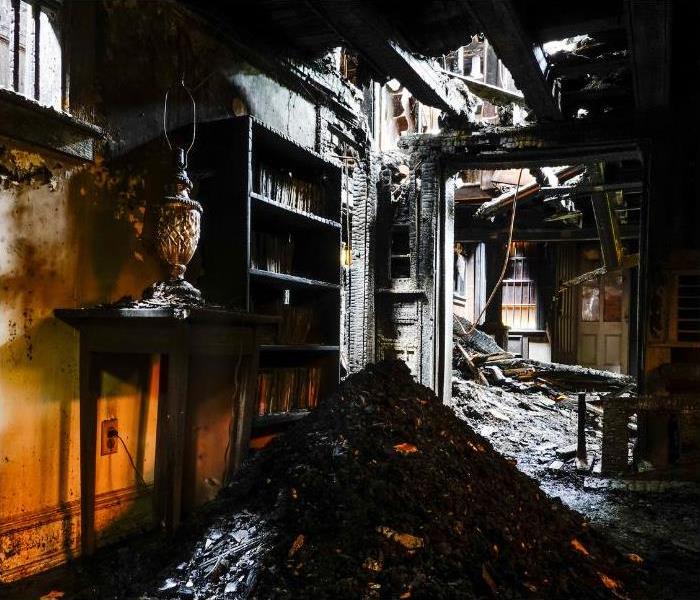 Fire Damaged Home
Fire Damaged Home
How does fire damage your home in Pulaski or Columbia? Depending on what kind of materials burn, the short-term and long-term effects of fire can change significantly. After a fire with incomplete combustion, soot is often left over. To get your home back to normal after a fire, you need to remove the soot from surfaces, especially from non-heat resistant surfaces, such as walls and windows, but also from other areas that have been contaminated by smoke or soot.
Knowing what kinds of soot are left over from a fire will help you clean more effectively. This is because protein residues, natural substance residues, and synthetic residues behave and are cleaned differently from each other. Understanding which type is present before a fire restoration, will help shed light on the cleaning process to follow.
The Science Behind Smoke & Soot
Smoke and soot particles occur when there is incomplete combustion in a fire. Combustion is a process where fuel, oxygen, and heat combine to rapidly oxidize substances. That oxidization process leaves soot particles. When you burn propane from a gas tank, there is usually enough oxygen around the fire to produce a perfectly clean burn with almost no soot residue. However, if you reduce the amount of oxygen available, more and more soot is left over due to this incomplete combustion. Besides soot particles, volatile organic compounds in the form of gasses are often left over, many of which have been shown to be carcinogenic.
Natural Substance Soot & Smoke
Natural Substance Residues are usually left over when paper or wood is burned. This kind of residue tends to be grey to black and has a dry, powder-like texture. This type of residue, when pure, tends to be quick to clean with vacuums and a combination of wet and dry cleaning techniques. These are usually the easiest kinds of soot residues to clean when compared to the other 2 main types of soot particles after a fire.
Synthetic Soot & Smoke
This kind of soot residue, sometimes described as oily soot or oily smoke, produces a thick, heavy black substance that tends to smear when touched. In some cases, it can even appear almost like a black spider web. When left undisturbed on a surface, it can sometimes be vacuumed away, but if touched, it will tend to smudge and become more difficult to clean. Plastics, and synthetic materials are the usual culprits for this kind of soot residue.
Protein Soot & Smoke
Protein residue occurs when meat, fish, beans, or other protein-containing substances are overcooked or burned. This kind of soot appears yellow to brown, and feels greasy and sticky. Water-based cleaning solutions work well with this kind of soot as long as the surface it is on can be wet cleaned.
How Do You Clean After a Fire?
Smoke and soot can cause secondary damage to materials when left there for long, and improper cleaning methods can cause more damage to affected materials. This is why when any fire has affected your home or property, it is usually best to call in professionals like SERVPRO of Maury / Giles to make sure your property is restored back "Like it never even happened."
Call us today at (931) 388-4248 for all of your fire restoration and fire cleaning needs.
How To Choose a Smoke Detector
11/10/2021 (Permalink)
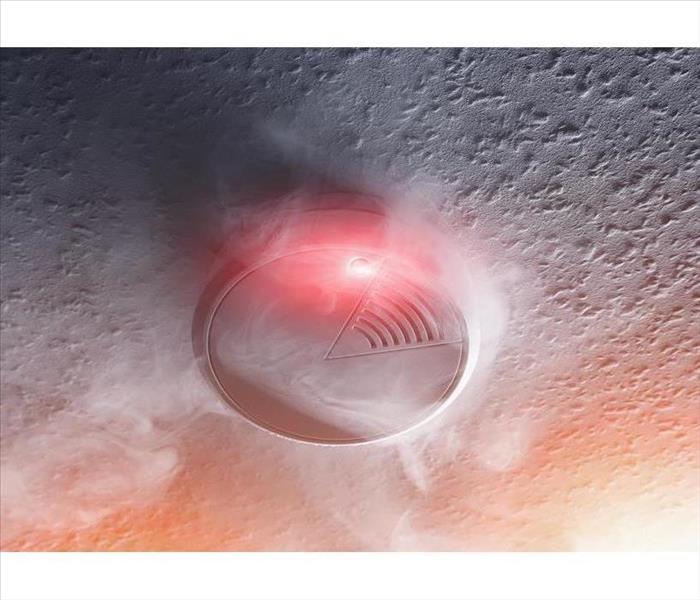 It is important to use the right smoke alarm for your residence.
It is important to use the right smoke alarm for your residence.
There are many types of smoke detectors. This guide will help you select the best smoke alarm for a residence in Lynnville, TN.
Decide On Detection Technology
Various types of alarms rely on different detection methods.
• Ionization generates an electric current that gets disrupted by smoke particles. These alarms are best for detecting small particles from quick-igniting fires.
• Photoelectric detectors contain a strobe light. Large particles from slow, smoldering fires diffract the light. Use this type of detector in the kitchen to prevent false alarms while cooking.
• Dual-sensor models rely on ionization and photoelectric components
• Air-sampling models circulate air through pipes and contain a sensitive sensor to detect smoke
• Combination alarms monitor smoke and carbon monoxide
You can also choose between standard and smart alarms that connect to Wi-Fi to send push notifications to smartphones in the event of an alarm.
Pick a Power Source
A smoke alarm is only effective when a power source is available. Detectors can draw power from
• Replaceable batteries
• 10-year long-life lithium batteries
• Hardwired electricity
Switch out replaceable batteries once or twice a year. Some building codes require that detectors be hardwired.
Provide Complete Protection
Install standard fire alarms in every bedroom, outside of every sleeping area, and on each floor of a home – including the basement. Smart alarms may detect the presence of smoke in a larger area. You can also hardwire alarms together or use a smart listening device to detect the sound of any smoke detector and send a notification.
Maintain Fire Safety
Test each detector once a month. Switch out replaceable batteries every six months or at least once a year. You can also clean detector vents with compressed air while a unit is disconnected.
It is important to use the right smoke alarm for your residence in Lynnville, TN. If your home sustains damage, hire fire mitigation and restoration specialists.
How To Choose Flood Coverage for Your Business
11/10/2021 (Permalink)
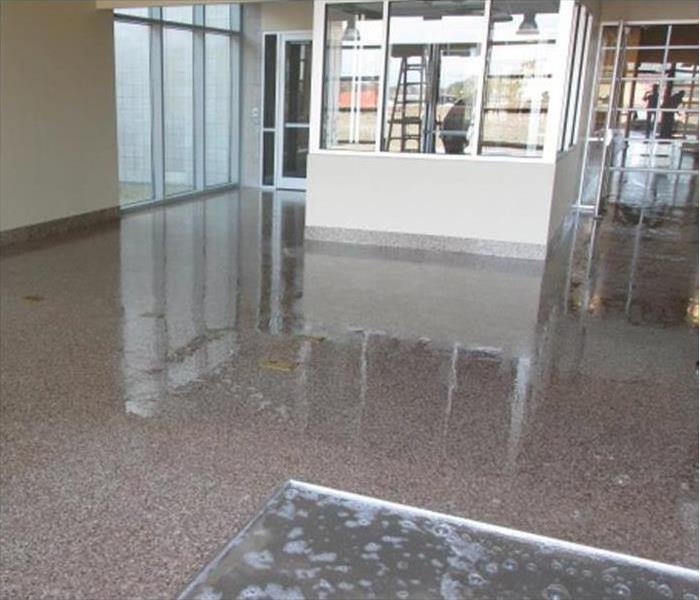 Stormwater in a Columbia, TN business.
Stormwater in a Columbia, TN business.
Flood Insurance For Your Business
The National Flood Insurance Program offers both building property and personal property flood coverage for businesses. If your business is located in an area prone to flooding, chances are that you are required to have some type of flood policy. Commercial insurance policies that are specifically designed to cover single-peril events provide protection that your general property insurance does not.
What It Covers
The main differences between building property and personal property flood insurance are the relative mobility and permanence of the damaged item or material. Items that are part of the structure or are hooked up to it in some way are usually covered under the building property policy:
- Building and its foundation
- HVAC system
- Plumbing and electrical systems
- Fire sprinkler system
- Installed design features such as carpeting or paneling
- Machinery that is a permanent part of the structure, such as a walk-in freezer
- Any apparatus attached to the outside of the building
Commercial insurance coverage for your personal property during a flood includes most items inside the structure. Furniture, appliances, rugs, inventory and equipment are typically covered under an NFIP policy through FEMA.
What It Doesn't Cover
Flood coverage is usually limited to a single event, the structure and the items within that structure. Secondary damage such as mold, which must be mitigated by mold remediation experts, is not covered under your company's flood policy. If the sewer backs up into your building, your commercial flood coverage does not pay for its cleanup, even if it was indirectly caused by flooding. Anything outside the building is not covered, and neither are the costs of keeping your business going. It's a good idea to talk to your insurance agent about adding policies that cover what the flood policies don't to your portfolio.
When your business in Columbia, TN, floods due to a storm or natural disaster, you will be glad you have a policy with the NFIP. These commercial insurance policies are designed to help make your business whole again.
Remember the 3 S’s After a Fire
10/28/2021 (Permalink)
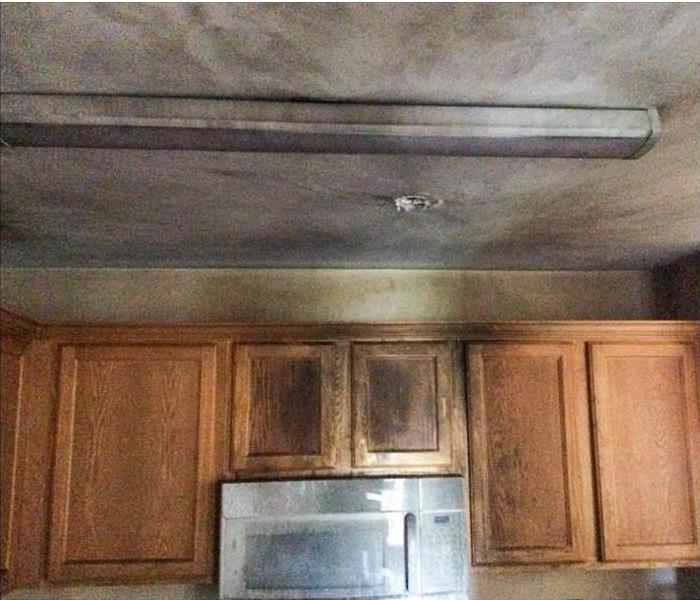 Smoke and soot damage in Mount Pleasant, TN.
Smoke and soot damage in Mount Pleasant, TN.
Fire Safety Tips
Experiencing a fire in your home can be distressing, to say the least. The healing process involves your mind, body, spirit – and your finances. Through fire restoration, it is possible to salvage some of your belongings and treasures. Consider guiding your actions by these three S’s—safety, swiftness and smarts.
1. Safety is always first. Upon entering your impaired residence, be aware of unsafe floors, walls and ceilings weakened by fire or water. Do not touch damaged items. Leave smoke cleaning to the experts. Check the gas. If there is any suspected leak, use a wrench to turn off the gas meter. Avoid any wires that look unsafe, and unplug all appliances. Discard any food that has been exposed to smoke.
2. Swift action after a fire is often imperative. Contact your fire insurance company and review your policy. Detail your home’s damage through written documents and photographs. Contact a reputable and expert business that handles fire restoration in Mount Pleasant, TN, as soon as possible to increase your chances of salvaging any items.
3. When it comes to emergencies, it is especially important to keep your smarts. This means that you ensure you are dealing with knowledgeable, trustworthy and professional people every step of the way, from reporting your damage to smoke cleaning and restoring your home. While your dwelling is uninhabitable, report it to police so they can help patrol the area if possible. Cover any broken windows or outside walls exposing the interior. Smarts also includes taking care of yourself. There are many nonprofit organizations and churches in Mount Pleasant, TN, that offer counseling, food and clothing to individuals who have been through similar tragedies.
By remembering to be safe, swift and smart in handling the fire restoration of your home, your mind, body and spirit may be stronger. The steps above can help you take the right action to return to your residence as soon as possible.
Get Your Home Mold Problem Under Control
10/28/2021 (Permalink)
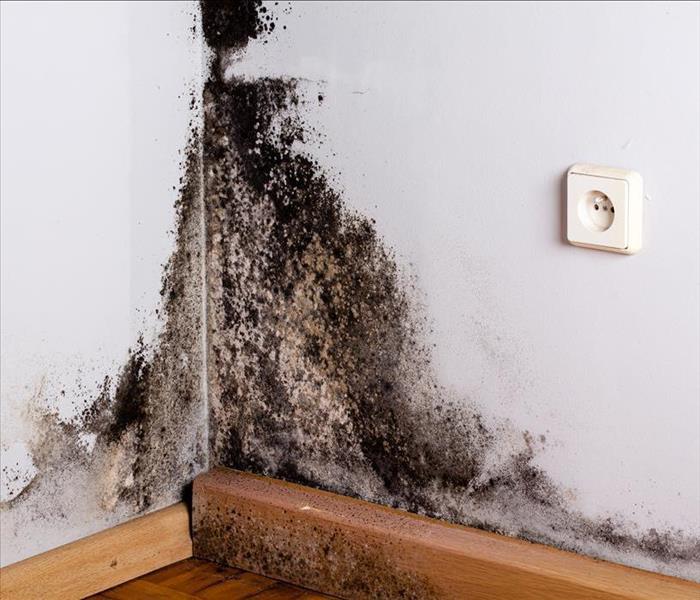 Black mold damage in Lynnville, TN.
Black mold damage in Lynnville, TN.
Prevent Mold Growth In Your Home
Many think of mold as an outdoor problem, but in truth, there’s no such thing as a mold-free home. There’s only a home free of the conditions required to allow mold spores in the air to flourish and grow. That’s why you can take precautions to keep your Lynnville, TN, home from turning into a breeding ground for black mold.
Prevention First
You don’t want to have a mold problem and then figure out how to fix it. It’s better to never have a mold problem at all through dedicated mold prevention. Water damage is one of the major culprits in mold growth; if you have mold, odds are you have a leak or have recently suffered flood damage. Here are a few ways to check for water damage that can lead to mold.
• Watch for dark spots on walls and ceilings. Dark spots are usually water damage caused by leaking roofs and windows, sometimes by damaged or leaking pipes. Don’t forget to check for out-of-the-way places, such as under sinks.
• Listen for dripping pipes and inspect periodically. As mentioned, damaged and leaking pipes can create an environment ripe for mold growth.
• Eliminate standing water. You might not think much of getting out of the shower and leaving a dripping mess, but that water can seep under your bathroom floor tiles and start mold breeding underneath the linoleum. Look for other sources of standing water, such as splashed dishwater or leaks beneath appliances.
• Control humidity. Your bathroom fan is a great way to get rid of mold-causing steam and condensation; your stove should also have a fan for the same reason. If your environment is extremely humid, invest in a dehumidifier.
Remediation Next
When mold prevention isn’t enough, you need remediation next. Mold remediation involves professionals assessing the extent of your mold problem and taking steps to eliminate as much as possible from your environment. Mold remediation specialists can also offer advice on further prevention after a cleanup.
If You Rent, Who Is Liable for Fire Damage?
10/28/2021 (Permalink)
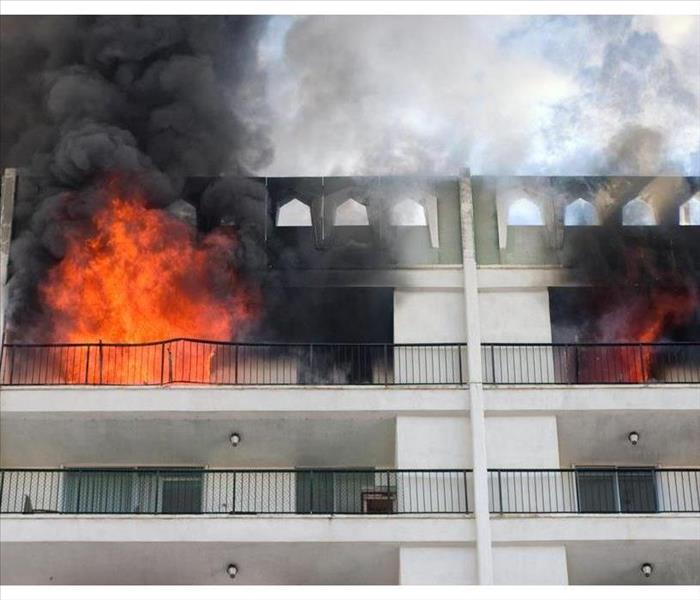 Apartment fire in Columbia, TN.
Apartment fire in Columbia, TN.
Who Is Liable for Fire Damage If You Rent?
When tenants occupy a rental property in Columbia, TN and that property is subsequently damaged by an apartment fire, it can be confusing to work out who’s liable for any damages and items lost in the fire. The tenants don’t own the building but they do still pay to occupy it, so if there’s a fire, who’s responsible for covering the damage?
Understanding Building Liability vs. Content Liability
The difference is determined by who actually owns the property that’s been damaged in an apartment fire. The proprietor owns the building and thus is liable for any structural damage to the building – that means damage to the walls, roofing, fixtures, pipes, and so forth. The tenant owns the contents of their apartment and is liable for those items. Items that tenants may be liable for include:
• Electronics such as televisions, stereos, and DVD players
• Clothing
• Furniture
• Personally owned kitchen appliances
• Art and other decorations
• Books
• Pet care items
• Vehicles or bicycles damaged during the fire
• Personal belongings with or without sentimental value
There may be some confusion regarding appliances, as some appliances will be owned by the tenant and some by the property owner. For example, a refrigerator or stove that was installed before a tenant moved in belongs to the property owner, and thus the owner is liable for any fire damage. However, a coffee maker or toaster likely belongs to the tenant, and the tenant is liable. Determination is made purely on who covered the cost of purchase/ownership.
So What Happens After the Fire?
After the fire, damages are usually assessed by both damage remediation companies and insurance companies. Building owners should have adequate insurance to cover any damage to their properties in the event of an apartment fire. Many tenants do not invest in renter’s insurance, but renter’s insurance usually covers the cost of replacing any destroyed or fire-damaged items that tenants are liable for.
Avoiding Sprinkler Floods: Why Sprinkler Inspections Matter to Your Business
9/26/2021 (Permalink)
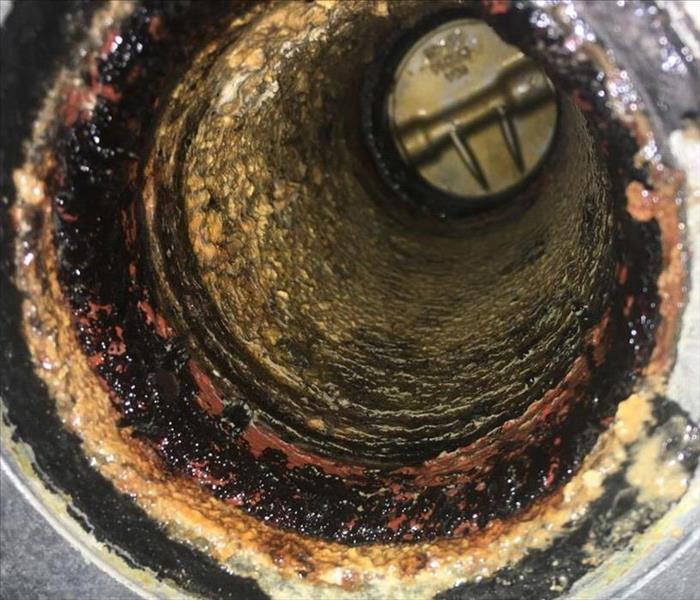 Irrigation maintenance is vital to the functionality of your sprinkler system.
Irrigation maintenance is vital to the functionality of your sprinkler system.
Sprinkler flooding can cost a business thousands, and if it happens to your business, the best option may be to look in the local Pulaski, TN, area for restoration specialists. However, you may be able to prevent the hassle by performing routine irrigation maintenance and avoiding the following irrigation pitfalls:
1. Avoid Broken or Misaligned Heads
One common cause of sprinkler flooding is a broken sprinkler head; however, the head does not have to be entirely wrecked to cause damage, it can merely be misaligned. Sprinklers end up broken and misaligned in any number of ways, lawnmowers being the most common, but one way to avoid this damage is to install sprinklers on a swing pipe so that they are suspended in the soil.
2. Avoid Costs of Leaky Seals
Another common cause of flooding occurs because of leaky seals. Wiper seals are not made to last forever, and after years of exposure to debris and possible collisions with lawn equipment, these seals wear away or fail. Left unchecked by irregular Irrigation maintenance, these seals can continue to drip costing businesses possibly thousands in wasted water.
3. Avoid Costs of Damaged Pipes
In addition to leaky seals, businesses should be aware of the potential costs from damaged pipes. As pipes are located underground, business owners should inspect the property for any pooling of water or unusual divots because these can be signs of leaks and damage in the lines. If not addressed, this can also cost the business thousands in water alone.
4. Avoid Clogs
While the costs associated with leaks may not be concern enough for businesses to begin biannual inspections of their irrigation systems, they shouldn’t underestimate the risks related to simple clogs. Left unchecked, a clog or blockage in the line can create a buildup of water pressure, possibly resulting in burst pipes and even complete system failure.
Irrigation maintenance is vital to the functionality of your sprinkler system because routine maintenance helps you avoid the common issues above while potentially saving you thousands in costly repairs later.
Understanding the Basics of Mold
9/14/2021 (Permalink)
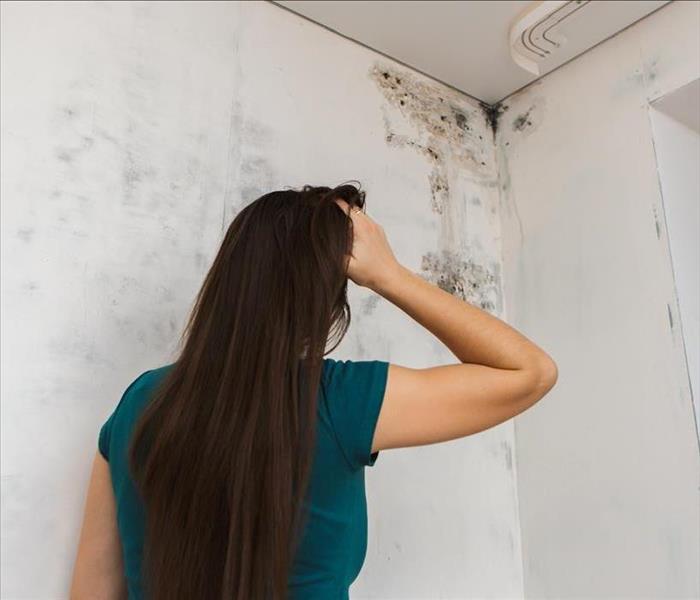 When you understand what causes black mold to grow, it is easier to prevent it.
When you understand what causes black mold to grow, it is easier to prevent it.
If you notice a dark, fuzzy substance growing in the corner of your living room, you likely have a black mold problem. Mold is a fungus that grows anywhere there is organic matter and water to feed it. When you own a home in Lynnville, TN, it is important to understand the basics of mold and how to get rid of it if you find it in your house.
The Mold Growth Trifecta
Anywhere there is a moisture problem, there is the possibility of mold growth. Mold needs three things to really thrive:
• A little extra moisture
• An organic surface to attach to and feed on
• A warm environment, roughly between 78 and 85 degrees
Mold is present everywhere. Patches of mold can form without a warm climate, but it won't multiply as rapidly. The closer the environment comes to matching mold's ideal home, the harder it is to keep black mold under control.
Your Mold Prevention Plan
While mitigation experts can perform mold cleanup, the best plan is prevention. The first strategy is robbing mold of one or more of its preferred environmental factors. Keeping your home cooler decreases humidity. The less humid your home is, the less likely it is to develop a mold problem. Even if you see a mold problem forming, a suddenly cooler, drier atmosphere can slow its growth. Another way to slow down the growth of mold is to keep the surfaces of your home clean. Mold attaches easily to dust, grease and other types of grime. Knowing prevention measures can be helpful if it takes a couple of days for the technicians to arrive to fix the problem or if their process gets delayed in the middle of remediation.
When you understand what causes black mold to grow, it is easier to prevent it. By controlling moisture, dirt, and temperature, you are less likely to see mold growing in your home.
How To Make a Strong Water Damage Insurance Claim
8/23/2021 (Permalink)
 Water damage to a kitchen floor.
Water damage to a kitchen floor.
How to File a Successful Water Damage Insurance Claim
No matter the reason, water damage can be a costly problem for homeowners. While an insurance claim may not be the first thing on your mind while in the middle of a disaster in Lynnville, TN, there are steps you may want to take before you clean up the flood water to make sure you can make a solid insurance demand.
1. Insurance - If you have renter’s insurance or homeowner’s coverage, you need to determine if the damages are covered. Flooding due to factors completely out of your control are typically included. Flooding that results from a pipe burst when pipes are poorly maintained is generally not covered under an insurance policy. Therefore, present your claim with your best evidence.
2. Pictures - Photos of the affected area can be a solid statement to your insurance company. Taking pictures while the water is still standing, and then again once the water is removed, can help your insurance adjuster assess the incident. Calling in a restoration team to document the cleanup procedure can also help solidify your insurance claim.
3. Inventory - Once you have contacted the insurance company, and the restoration team has finished its cleanup, it is time to take an inventory of your personal property damage. When noting items, it is important to include the make, model, and function of each article. If you have time, list the replacement cost or value of each piece as well.
4. Settlement - When the adjuster visits the flood site, make sure you are there to answer any questions about the incident. After the insurance company offers a settlement, they often give you half the money in advance of the repairs. When you can show the repairs are completed, the other half of the money will typically be paid out.
Water damage can be costly in Lynnville, TN, and an insurance claim can take time. By being proactive, you can help make sure your claim is a strong one.v
How To Eliminate Mold Odor
8/23/2021 (Permalink)
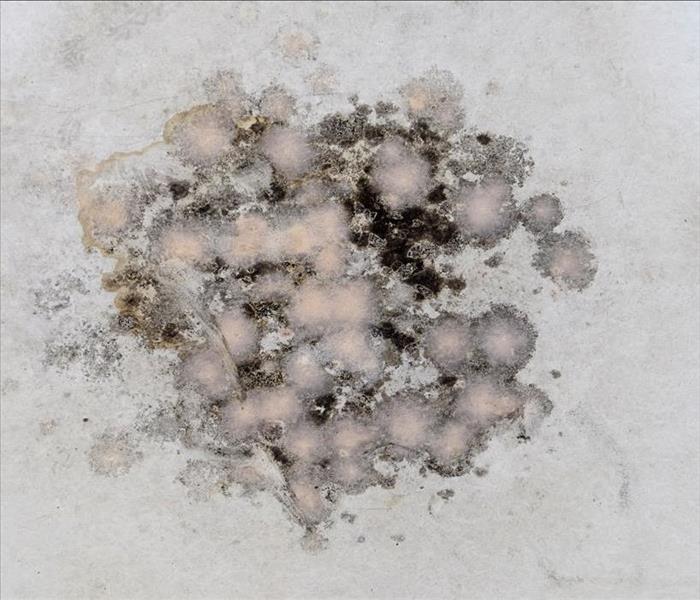 Mold damage in a Columbia, TN home.
Mold damage in a Columbia, TN home.
How to Get Rid of Mold Odors
While many people think of mold as having a musty odor, the truth is mold can release a wide variety of unpleasant odors, depending on the type mycotoxin it releases. If you notice a strange smell you can’t seem to get rid of, you may be dealing with mold.
What Causes the Smell?
Mold releases small molecules called mycotoxin that cause bad smells. Different species of mold have different odors. Some of the most common mold odors smell like:
- Cat urine
- Car exhaust
- Grease
- Earthy
- Musty
- Old cheese
If you smell mold in your home, it means you have a mold problem, even if you can’t see it. You’ll need to eliminate the mold in your house in order to get rid of the smell.
Get Rid of the Source
Perform a visual inspection of the room or area where the smell is strongest. Check in the back of closets, behind furniture, and under carpets. If you can’t locate any mold, you may need to call in mold remediation specialists in Columbia, TN, to help. They will know how to locate moist areas in your home and check inside walls to locate the mold.
Killing mold is not enough to get rid of odors. It must be removed completely, either by scrubbing it off building materials with a biocide or by removing affected materials and replacing them.
Prevent Reoccurrence
If you notice the odor returns, chances are good the mold has also returned. It’s critical to discover the cause of excess moisture in your home and eliminate it to prevent mold regrowth. Check for leaks and broken water pipes to discover where the moisture is coming from. Your mold remediation specialist in Columbia, TN, can help you do this.
You can also install a high-efficiency particulate air filter, or HEPA air filtration device, to help speed the process of musty odor elimination. These air filters are designed to remove very small molecules from the air, including mycotoxin. Just remember that an air filter can’t solve your mold problem. You still have to eliminate the mold to eliminate the odor.
Don’t Dish Up Mold in Your Restaurant
7/26/2021 (Permalink)
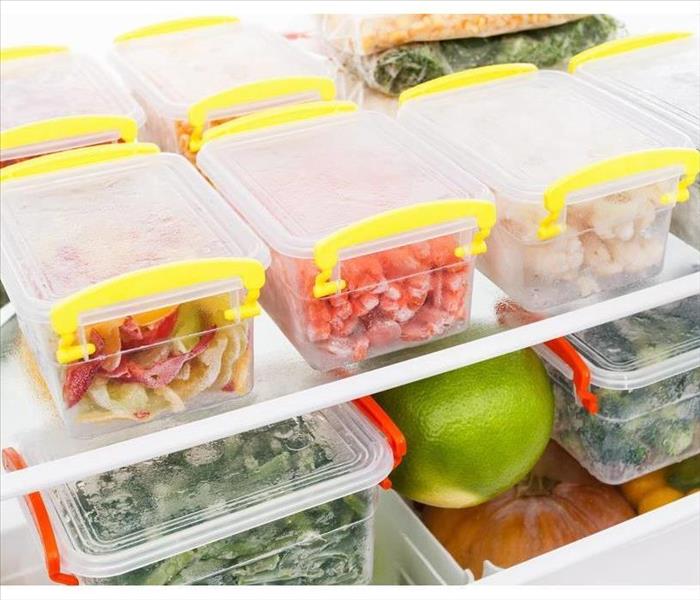 Store food properly.
Store food properly.
Mold Is Not Something You Want To Serve at Your Restaurant
Customers enjoy coming to your restaurant in Pulaski, TN because they value your delicious, high-quality, fresh food. So how can you keep it all fresh and avoid mold growth in the kitchen? Make sure you don’t dish up something unexpected by taking a few precautions.
1. Store Food Properly
When appropriately stored, food can remain fresh and mold-free for three to four days, allowing you to use as much of your inventory as possible. Store canned items in new, clean, covered containers and cover fresh foods with plastic wrap to keep moisture in. Keep all foods refrigerated at the proper temperature, 40 degrees or below, to prevent mold growth. You can also decrease high humidity issues in your refrigerator by not packing in too much food and allowing proper air circulation.
2. Ventilate Appliances Correctly
Steam and warm air are the perfect environments for growing mold, and of course, that is the definition of a fast-paced restaurant kitchen. It is important to make sure that moisture-creating appliances are vented outside and that you have a high-functioning HVAC system to help circulate outside air into your work area. Maintain your HVAC system and check drip pans regularly for cracks in the bottom or overflowing liquid, as that can lead to damage and unnecessary repairs.
3. Address Leaks Quickly
Regularly checking appliances allows you to catch any leaks quickly. However, if you find that you didn’t catch the water damage in time, there are professional remediation specialists who can prevent further damage and control existing issues. Addressing the problem in a timely manner can keep costs down.
Your highest priority is to serve the best food Pulaski, TN, has to offer, and these steps can help make certain that you can do that every day. Storing your food carefully, ventilating appliances correctly and quickly fixing any leaks can prevent mold growth and help keep your kitchen healthy and efficient.
4 Leading Causes of Home Fires
7/8/2021 (Permalink)
 Candles look and smell nice, but they are also a fire hazard.
Candles look and smell nice, but they are also a fire hazard.
Common Fire Causes
According to the NFPA, firefighters respond to a home fire every 24 seconds somewhere within the country. That’s an alarming statistic considering that most house fires spread uncontrollably, leaving a wake of destruction. While you can never be truly prepared for such a disaster, there are things you could do to prevent it.
Common fire causes in Pulaski, TN includes:
- Unattended kitchen appliances
- Heating
- Careless smoking in bedrooms
- Candles
1. Cooking Equipment
Kitchen fires account for 48% of all home fire incidents in the nation. That comes as no surprise as most open flames and heating elements live in this room. Usually, the fire starts when you walk out or get distracted, then the food overcooks until it catches fire. This flame spreads to any flammable items nearby and results in a nasty flare.
2. Heating
Most people are cautious in the kitchen, but they sometimes fail to do proper care and maintenance on heating. These devices need inspection at least once a year to make sure they are in good condition. Also, keep all portable heaters at a safe distance from any flammable items such as curtains, books and furniture.
3. Smoking in Bedroom
Smoking is the last thing you should do in a bedroom. A cigarette butt that is not properly put off could stay alit for a couple of hours. That poses a grave danger considering that it’s the same room you keep all your flammable stuff such as beddings, clothes and mattresses.
4.Candles
Candles look and smell nice, but they are also a fire hazard. If the open flame comes into contact with the table cloth or topples over when no one is looking, you might be in for an expensive fire cleaning project. It is better to use flameless candles if you have kids and pets in the house.
A home fire can incur thousands of dollars in fire damage, even when you manage to put it out before it spreads further. That’s why you need to know where it starts and take the necessary precautions.
What Sort of Noises Come From a Water Heating Unit?
6/28/2021 (Permalink)
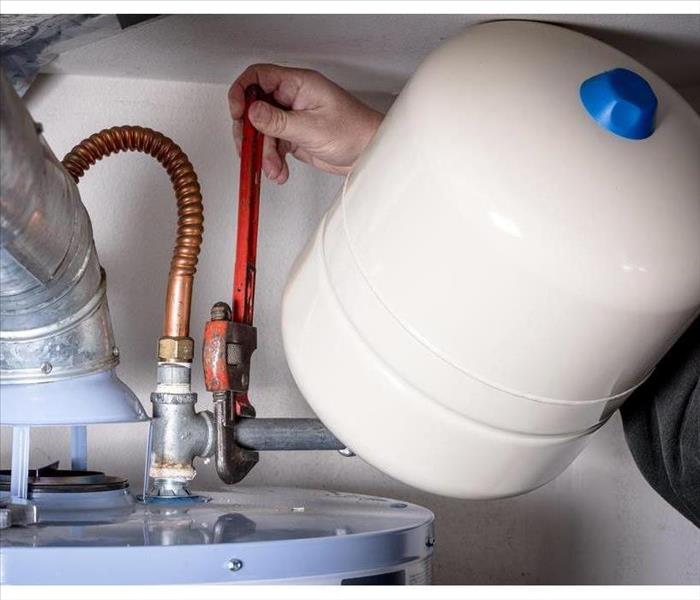 Schedule regular maintenance to your water heater.
Schedule regular maintenance to your water heater.
Is It Normal For Water Heater To Make Noise?
Houses can be full of a lot of strange noises. When you hear creaks and groans, you may wonder if the sounds are from your Columbia, TN, home settling, or larger issues with piping. Even your water heater can start to make some unseemly noises.
• Screeching: Have you been hearing a sound reminiscent of a scream? This could be a sign that a valve in your heater is not opened all the way. As the water flows through the smaller-than-normal opening, it creates a screeching sound.
• Humming: A loose heating element can start to vibrate as the water heats up around it. This problem can be addressed by tightening the element.
• Tapping: This noise is often harmless when it comes from your water heater. As the liquid inside starts to cool down, it may cause a tapping noise.
• Rumbling: Sediment buildup is common in older units. If you hear a rumbling, it could be a sign that some buildup is being stirred around in the unit. As the chunks hit the sides and heating elements, it causes a rumbling.
• Crackling: Sediment can also lead to a popping or crackling sound. When the buildup is caked onto the heating element, water may get trapped beneath the residue. As the water warms up, it is forced back through the residue with a loud popping noise. A regular water heater flush can help you avoid this noise.
• Knocking: Knocking in your pipes is usually associated with a change in water pressure. If a faucet is quickly turned off, the pipes may shake from the sudden change. As they shake, they may hit the walls in your home and cause you to hear a knocking sound.
Some noises that come from your water heater could be a sign of a problem. Because you want your heater to continue working for years to come, it may be beneficial for you to schedule a regular inspection with a residential water maintenance team.
Preparing Your Business To Operate Even After Adverse Weather Events
6/28/2021 (Permalink)
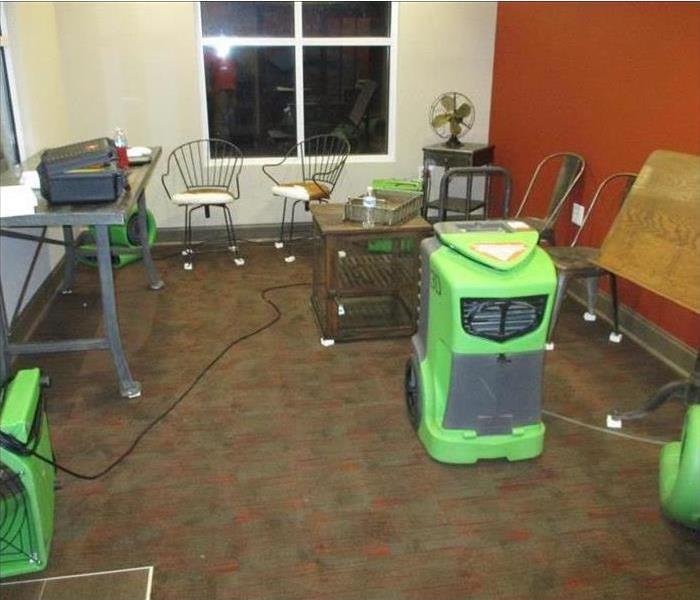 The drying process in a Spring Hill, TN office.
The drying process in a Spring Hill, TN office.
Prepare Your Business From Natural Disasters With The Following Four Steps
A storm can be especially disruptive to normal business operations. One way to stay functional in the face of natural disasters is to develop a continuity plan before trouble ever strikes. By doing so, you can prevent surprise weather from cutting off operations for the foreseeable future. With these four steps, you can be prepared for whatever nature throws at your business.
1. Prepare a Plan for Major Events
You should plan for any potential disaster that could hit your business at its current location. These can include but are not limited to hurricanes, flooding, blizzards, ice storms, or tornadoes. Whatever historically happens in the region should be countered with a plan.
If possible, a team of employees should be assigned duties for enacting the procedures. Emergency suppliers are worth arranging with for disaster mitigation. This is also a good time to make and safely store a copy of the building’s insurance policy. Any computer data should be consistently and securely backed up off-site or in a cloud service.
2. Create Checklists
Once a procedure is worked out, checklists are ideal so everything can be easily recalled. These are worthwhile to review and check off several days before a forecasted natural disaster. All employees should be informed of where these checklists are and required to review them occasionally throughout the year.
3. Practice the Procedure
In areas where dangerous weather can strike with little notice, preparedness drills are recommended. This ensures the continuity plan is fully functional and no important part is missing if the time comes to follow the actual procedure.
4. Establish Communication and Alternate Work Locations
All essential employees can be asked to provide an emergency contact number to arrange work. The business location could become devastated by storm damage or be undergoing restoration by an expert storm damage cleanup team. This alternative location can be working from home or another designated commercial property.
Preparation is vital to protecting your business in Spring Hill, TN, from many days of lost revenue and catastrophic loss. With a continuity plan, you can be ready for the worst and more than prepared for most other storms.
Does My Business Need Commercial Flood Insurance?
6/14/2021 (Permalink)
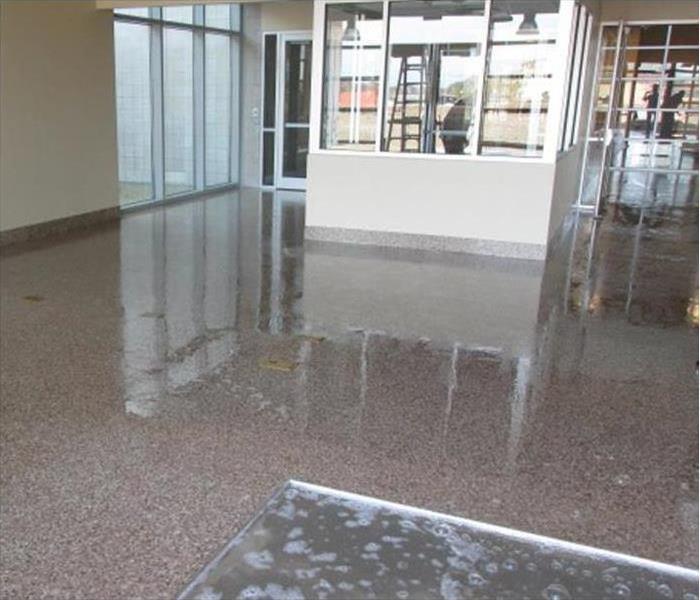 Stormwater inside a commercial building in Lynnville, TN.
Stormwater inside a commercial building in Lynnville, TN.
When business owners purchase a commercial insurance policy for their property in Lynnville, TN, they sometimes think they are covered in the event of a flood. However, most policies do not include flood insurance, and they must purchase coverage separately.
Am I Required To Purchase Flood Coverage?
Two factors determine whether you need coverage for floods. First, if your commercial property is in an area that is high-risk and prone to floods, and second, if you are paying a mortgage from a federally insured or regulated lender, you will need to have a commercial insurance policy for floods.
What Does Flood Coverage Include?
An insurance policy for flooding covers flood damage repair to your property and its contents in the event of a flood. It includes losses from:
- Prolonged or heavy rain
- Overflowing bodies of water such as streams or rivers
- Blocked storm drains
- Storm surge
- Melting snow
Water covering at least two acres or affects a minimum of two properties is defined as a flood for coverage purposes.
What Does Flood Coverage Exclude?
The property outside of your building, such as landscaping and septic systems, is not covered by insurance for flooding. Your vehicles are not covered by a flood policy, although you can purchase coverage in your business vehicle policy's comprehensive section.
Business interruption insurance is also a different type of coverage not included in a flood policy, as is the loss of use of an insured property.
How Can I Obtain Flood Coverage?
The National Flood Insurance Program, a program managed by FEMA, offers insurance for flooding through a network of insurance professionals and NFIP Direct. Your policy goes into effect after a 30-day waiting period, so it's essential to plan for coverage.
While flood insurance involves a separate policy, you can purchase it for your Lynnville, TN, property to ensure you are prepared if your property experiences a flood.
Mold Prevention in Homes Begins With Preventing Water Incursions
6/14/2021 (Permalink)
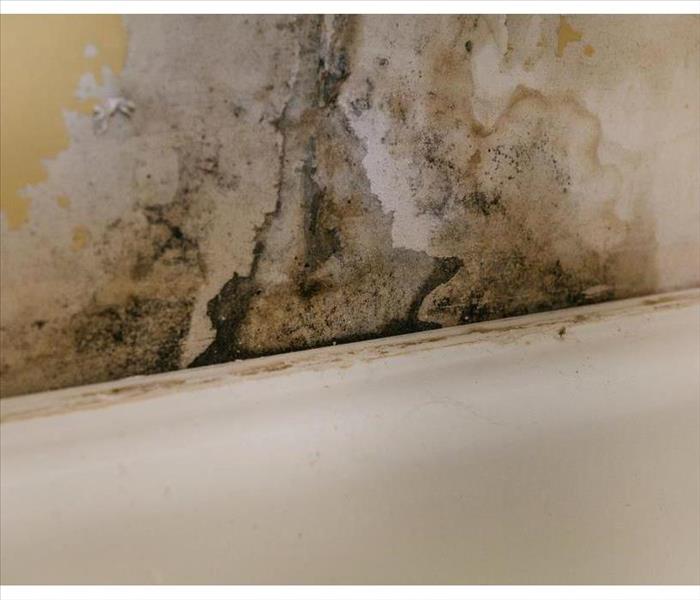 Mold damage
Mold damage
Mold Prevention In Homes
Black mold in your home almost always indicates an abnormal condition. It’s caused by excess moisture, and the only effective method of mold prevention is to stop water from entering your building envelope. Homeowners should get an annual inspection that will locate hidden water incursions before they can cause mold to grow.
Identifying the Cause of Dampness
Your building envelope is designed to control airflow and seal out water. Indoor construction material can’t handle excess moisture, and a hidden leak can cause significant unseen damage.
Indoor water leaks are usually caused by three problems:
- Roof leaks
- Water supply leaks
- Sewer leaks
In some cases, outdoor drainage may also be an issue, especially if landscaping is poorly planned. Water that seeps in can cause erosion under your foundation and, if it gets inside, cause mold growth.
Controlling Humidity for Mold Prevention
If an area of your home stays above 50% humidity for significant periods of time, you may get mold growth. Mold also needs a source of nutrients, such as cellulose, which is found in wood, fiberboard and gypsum. Wood studs and drywall that are continuously exposed to high humidity are likely to grow mold.
Knowing the Symptoms
Black mold has a distinctive musty odor. Simple mildew, such as you might find on bathroom tiles, generally has little odor. If an area of your home frequently smells moldy, it’s probably time for an inspection from a local mold remediation expert.
Fixing the Cause
The restoration experts also need to locate the cause of the mold growth. They’ll fix the leak and repair the water damage as part of the mold cleanup process. They can also inspect to find other hidden problems while they’re there.
Roofs are a frequent cause of black mold. Eventually, all roofs leak, and that needs to be addressed immediately upon discovery. You should also clean your gutters every year since water backs up and could eventually find a way inside.
Mold prevention always starts with controlling humidity, keeping a tight building envelope, and watching for signs of a leak. If you prevent water incursions, you’ve effectively stopped the problem at its roots.
Our Staff Explains The Vital Steps We Take To Restore Your Fire Damaged Home In Columbia
6/4/2021 (Permalink)
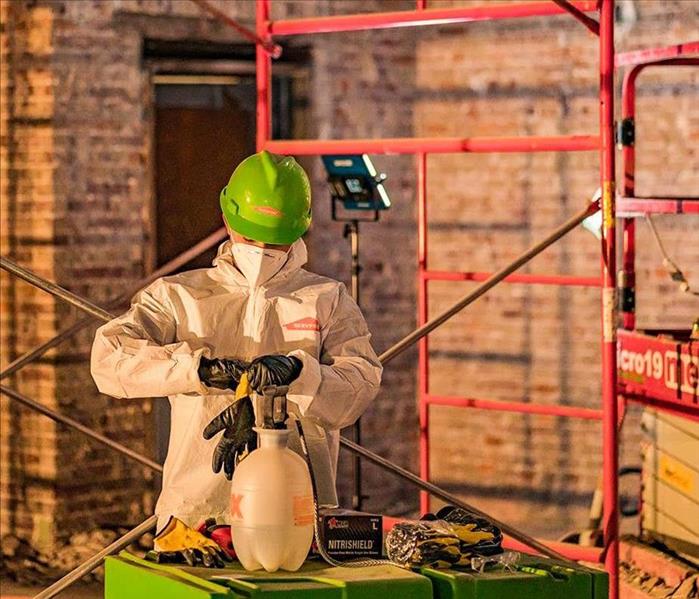 We can help with any sized fire damage!
We can help with any sized fire damage!
Important Steps When Restoring Fire Damage In Columbia, TN
A fire can start from any point in a home including the kitchen, living room or even a crawlspace like an attic. Putting the fire out in time helps save the property, but it still leaves a considerable burden of cleaning up the debris from partly burnt materials and smoke residues. We offer professional restoration service that lifts this burden from the homeowner.
Separating items after fire damage in Columbia, TN is a crucial step in the early stages. From a casual look at items covered in soot, dirt, and grime after the incident, you might think of throwing everything out. However, proper cleaning helps save most of the items. Even items scorched by flames can be saved through advanced restorative cleaning steps. Our SERVPRO technicians separate damaged items into salvageable, unsalvageable categories. In case of a move-out, we use electronic CCIS, Content Claim Inventory Service, which further classifies items based on their location in the house. Such classification improves the outcome because we can easily tell which items require more effort based on how the fire affected the room they were.
Certain sections in a structure like light fixtures, cabinets, attics, and walls require special attention. Even if the wall surface is not damaged, it does not mean everything else in the wall cavity is intact. Smoke may filter-in leaving the insulation compromised or full of smoke odor. Our SERVPRO technicians may replace the top 3 to 4 inches of the insulation to address these problems. Cleaning light fixtures such as chandeliers can be challenging because of the decorative trim. For light to moderate residues, we opt for hand cleaning. We also use other approaches such as low-pressure steam cleaning or submerging in an ultrasonic machine.
If there is damage in an attic, restoration can be a bit challenging. Most of the surfaces involved are porous while the wood may have irregular shapes which make it harder to remove residues. The limited space compounds the situation further. Having a sufficient workforce helps our SERVPRO teams to deal with these problems quickly.
Whichever part of your property is affected by fire in Columbia, Spring Hill, and Pulaski, SERVPRO of Maury / Giles Counties can help restore it. You can reach us at (931) 388-4248 any time.
What Coverage Is Included in Commercial Property Insurance?
4/19/2021 (Permalink)
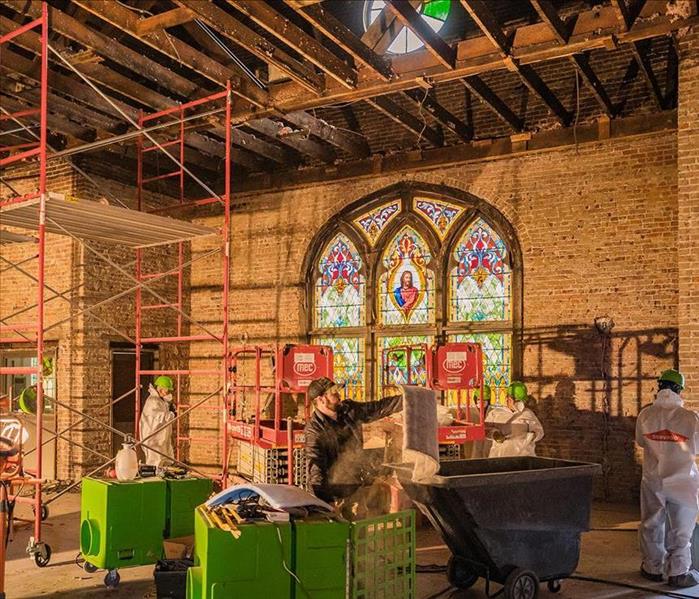 Make sure your building is insured.
Make sure your building is insured.
As a business owner, you know how important commercial insurance is for your property in Mount Pleasant, TN. Without adequate coverage, you could be responsible for paying for the extensive damages after a fire.
What Should Be Included in a Commercial Property Insurance Plan?
Buildings – All buildings owned by the business must be covered. For example, if you own one main building but also have a small warehouse at a different location, that second building must be included in the insurance plan. Even small storage units should be identified. Get coverage for the premises around the building as well. This includes outside furniture and other fixtures, landscaping and fencing.
Manufacturing Equipment – The equipment used in manufacturing, assembling and processing must be identified in the insurance package.
Office Equipment – Computers, printers, furniture, phones and other office equipment should be covered in your commercial insurance plan.
Inventory – If you house finished goods at the premises, this should be mentioned in the insurance package.
What Important Situations Do Insurance Companies Consider?
The location of your building is important to your insurance agent. If there is a fire department nearby and fire hydrants close to the property, this may reduce your premiums. The type of construction used in your building is also a key factor. Fire-resistant materials used in the flooring, insulation and walls keep costs down.
Every business should invest in a well-designed fire alarm and sprinkler system. Fire sprinklers are activated by the heat below, so only those sprinklers in the direct vicinity are turned on during a fire. By comparison, a fire department hose is very powerful and can cause a lot of damage from water. If you are in need of restoration after water or fire damage, contact a fire restoration service as soon as possible.
Talk with your insurance agent to ensure that your commercial insurance plan is able to fully protect you after a devastating fire.
What Fire Extinguisher Is Best for My Home?
3/30/2021 (Permalink)
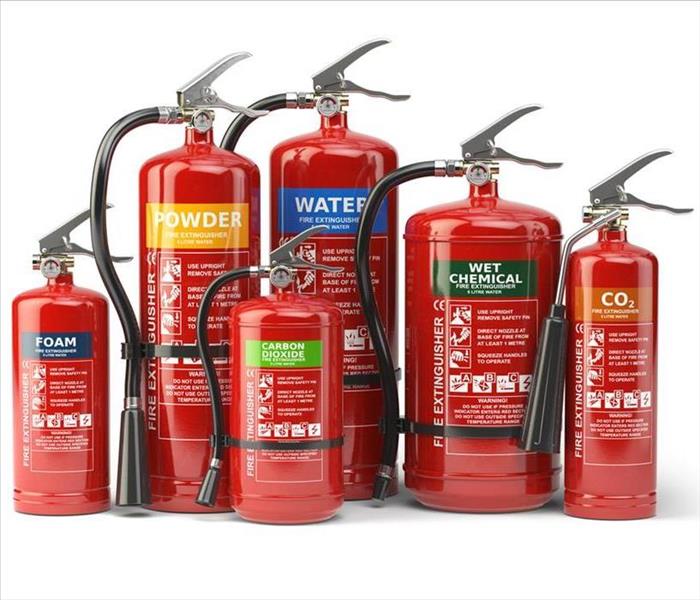 Avoid a home fire by learning how to use a fire extinguisher.
Avoid a home fire by learning how to use a fire extinguisher.
Keeping a fire extinguisher in your Spring Hill, TN, home can save you and your property from a small fire. If you're wondering which kind to choose, here is some information about different types of extinguishers.
Extinguisher Classes
Each class of extinguisher fights a different type of fire:
Class A: Wood, paper and trash
Class B: Grease, oil-based liquids and gasoline
Class C: Electrical equipment
Class D: Flammable metals
Class K: Animal and vegetable oils used in cooking
Household extinguishers are rated A, B or C. On the label, the numbers that precede the letters give the rating of the extinguisher's effectiveness against that type of fire. An extinguisher with a 4-B rating, for example, is more effective against a grease fire than one rated 2-B. Higher effectiveness usually means a higher-priced extinguisher. There is no number designation for Class C.
Extinguisher Sizes
You can choose your extinguisher size based on where you will use it. A 5-pound extinguisher is suited for a typical home fire and is easy to pick up and use. A 10-pound fire extinguisher is a good choice for the garage, where a fire may grow before you see it. You can also find stove-top extinguishers that mount above the range.
Best Extinguisher Locations
Safety experts recommend you keep an extinguisher on each floor of your home for maximum fire preparedness. The kitchen is an ideal place because of the enhanced risk of fire in that room. Keep the extinguisher where household members can reach it quickly and easily. The best location is near an exit if the fire gets out of control and you must evacuate.
If you've experienced a home fire and have been through the process of fire restoration, you know that prevention is the best policy. If you have not had a home fire, you can take steps to avoid one by learning to use your fire extinguisher and equipping your home with the correct sizes and types.
4 Ways To Prevent Damage and Prepare for a Winter Storm
3/30/2021 (Permalink)
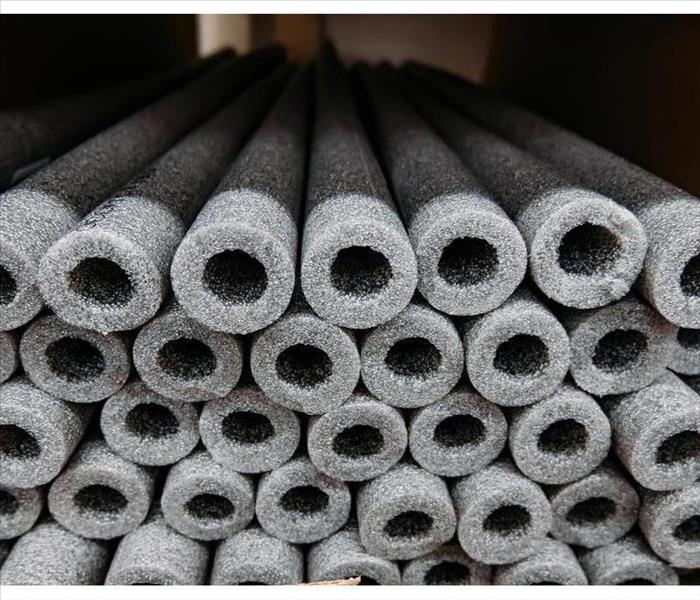 Insulate your building.
Insulate your building.
Ways To Prepare Your Business For Winter Weather
A winter storm can be beautiful, but it can also be a nightmare for your business if you are unprepared for it in Pulaski, TN. The heavy snow, wind and ice that accompanies the storm can cause severe damage and costly repairs. When these disasters happen, call your insurance company and a storm damage restoration service immediately to file a claim and begin repairs. While you cannot prevent a storm from coming your way, there are several steps you can take to prevent some of the damage from happening and mitigate loss. Here are a few ways to prepare your business for winter weather.
1. Insulate Your Building
Make sure your building is properly insulated. If temperatures drop below freezing, your pipes could freeze and burst, causing flood and water damage. Routinely inspect your building’s heating system to ensure it is working properly and keep the temperature above 55°F to avoid a pipe break.
2. Perform Regular Maintenance
Keep a regular maintenance schedule to make sure windows, doorways and the outside of your building are in good condition. Over time, building materials can wear down, allowing cracks and gaps to form which can reduce the structural integrity and insulation of your building and make it more susceptible to storm damage and flooding. In addition, you should routinely inspect your roof. Replace any broken shingles and make sure shingles are intact and firmly nailed down to prevent roof leaks and wind damage.
3. Stock Emergency Supplies
Create an emergency winter weather kit that includes snow shovels, ice-melting salt and a first aid kit in case a winter storm comes through unexpectedly. Keep non-perishable food items available in case you are stuck in your building overnight and cannot go home.
4. Watch Local Weather
During the winter months, stay on top of the local weather forecast. Start preparing early if a snowstorm is heading your way, and make sure your staff is adequately prepared.
A winter storm can cause severe damage if you do not take it seriously. Performing routine maintenance on your building and keeping an eye on the weather can greatly reduce damage and keep your business safe.
4 Steps To Take After Water Damage
3/9/2021 (Permalink)
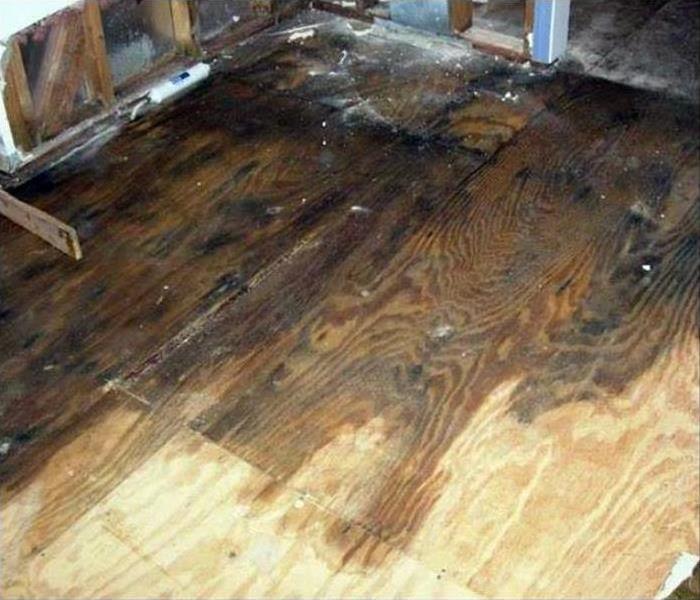 Water damage in Columbia, TN.
Water damage in Columbia, TN.
Take The Following Steps As Soon As Possible
The moments after bursting pipes have caused damage to a home are often filled with uncertainty. Individuals sometimes struggle with what steps to take to protect their property and to minimize expenses. As a general rule, it can help to concentrate on the most serious aspects of the crisis, and then to move on from there. After everyone in the home is safe, the following steps should be taken as soon as possible.
1. Stop the Flow of Water. To reduce water damage, it is important to find the nearest shut-off valve to stop the flow of water coming into the home. Once this is accomplished, the owner or renter of the property can move on to the next step.
2. Call in Restoration Professionals. The sooner a local water restoration team from Columbia, TN, can arrive, the quicker the cleanup process can begin. Trained professionals will arrive quickly with the expertise and equipment needed to remove standing water and take other critical actions. Whether bursting pipes or some other malfunction created the problem, certified technicians will follow a proven process of restoration.
3. Contact the Insurance Company. It is important for residents to know where they stand after significant property damage. A call to the insurance agent can provide important coverage information as well as how to file a claim. Costs to fix broken pipe and replace damaged items are often part of a person's homeowners or renters insurance policy. It makes sense at this time to document any repairs or expenses caused by leaking water.
4. Coordinate With the Cleanup Crew. A professional water cleanup crew will often be able to help with insurance claims by providing proper documentation. This takes some of the uncertainty out of dealing with complicated paperwork.
A professional SERVPRO franchise is always Here to Help. This is true when it comes to dealing with bursting pipes or the efficient handling of an insurance claim.
Advantages of SERVPRO's Electronic Claims and Commitment To Quality
2/19/2021 (Permalink)
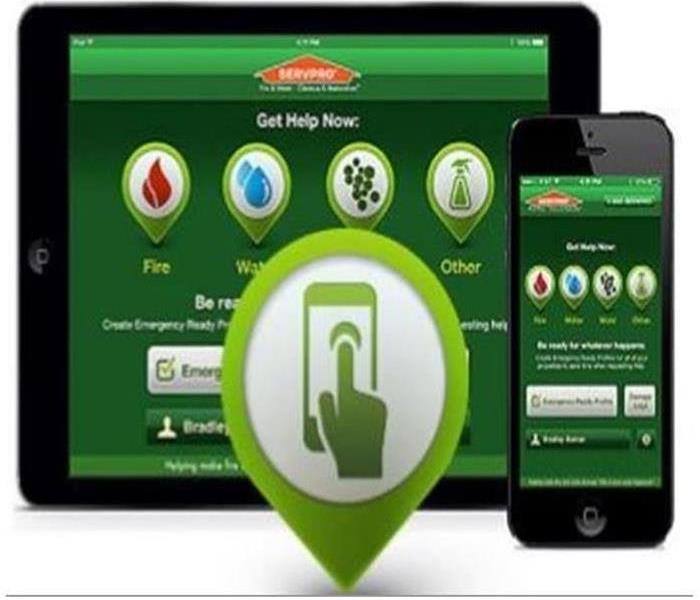 SERVPRO’s electronic customer files are troves of essential data.
SERVPRO’s electronic customer files are troves of essential data.
Advantages of SERVPRO's Electronic Claims and Commitment To Quality
If your office suffers structural damage from a storm, fire, or another disaster, filing an insurance claim should be less stressful than executing repairs. Choose SERVPRO for a team of masterful rebuilding experts that can return your place of business in Lynnville, TN, back to normal. Besides their overall commitment to quality, these rebuilding geniuses possess a simple filing infrastructure that makes working with them as pleasurable as possible.
Quality Compliance
As one of the most trusted names in repair, SERVPRO is devoted to providing a professional experience from start to finish. You can expect:
- Safe and effective rebuilding and cleaning techniques
- Background checks on staff
- Properly registered and maintained vehicles
- Excellent insurance
Besides providing dependable service, their sophisticated electronic filing system makes processing any insurance claim a snap.
Electronic Claims
SERVPRO’s Electronic Claims Information System offers multiple advantages. Most critically, a breakdown of assignments is always available for viewing. New assignments, pending jobs, and completed tasks are easily identifiable, providing an instant-read on how repairs are progressing.
Cleaning and construction recommendations are broken down into digestible chunks. Estimates are provided for each item. This is extremely useful when figuring your total cost. Having this figure early on may assist with speeding up your insurance claim. Customer files can also be mailed in printed form. Alternatively, they can be emailed as an Excel spreadsheet.
SERVPRO’s electronic customer files are troves of essential data. Included is the initiating report, photographic evidence of damage and every piece of related paperwork. Having every scrap of information in one location is a strong advantage when dealing with an insurance agent. The quicker you can provide whatever data is requested, the faster your claim may be pushed through.
With everything involved in getting your office up and running after a calamity, filing an insurance claim should be easy. Let SERVPRO’s information gathering abilities make the ordeal as smooth as possible.
5 Types of Leaks That Are Causing Your Water Bill To Spike
2/11/2021 (Permalink)
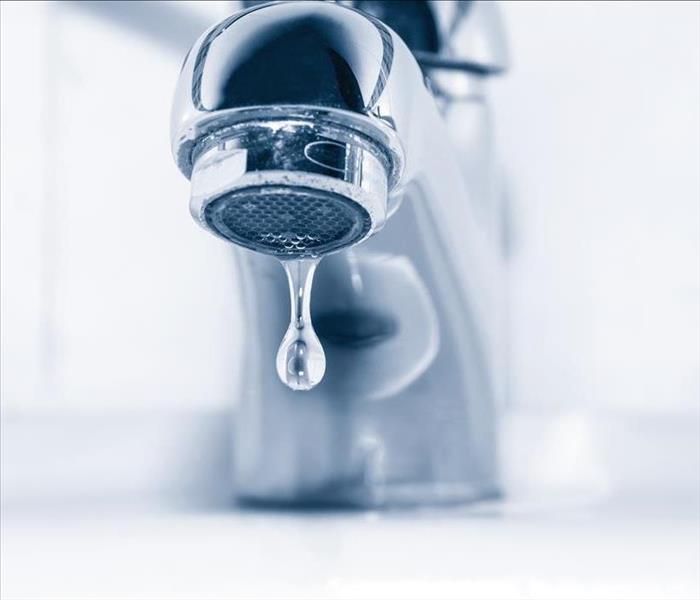 A leaky faucet can cost you a lot of money.
A leaky faucet can cost you a lot of money.
Five Ways A Water Leak Can Be Causing A Spike In Your Water Bill
You've noticed that your water bill, which is usually pretty stable, has suddenly spiked and keeps climbing. You haven’t hired a ton of new employees, and you haven't done anything different with the irrigation schedule, so what gives?
1. Outdated Fixtures
If you bought an older building and didn't replace the toilets or faucets, one of these could be the problem. Older fixtures are less efficient and usually mean older pipes, so a sudden climb in your water bill could mean that the pipes are blocked or that there is a water leak.
2. Problematic Irrigation
An irrigation system is a time-saver, but it can be costly when it breaks. Check for a pipe break or a faucet head that is cracked. If your system is buried, look for unusually soggy patches of ground.
3. Running Toilets
A running toilet can waste thousands of gallons of water and drive your bill sky high. It's easy to check to see if a toilet is running and is often a pretty easy fix. However, if you have a running toilet that is outdated and the hardware store fix didn't make a difference, you may benefit from calling a water damage specialist to investigate whether a pipe break or a leak is contributing to the problem.
4. Leaky Faucets
Similar to running toilets, a leaky faucet can cost you a lot of money. Even little drips add up and often continue to get worse until the actual faucet is fixed.
5. Cracked Lateral Line
The costliest possibility is that there is a cracked lateral line (the line that feeds water into your business). That means the water is leaking out before it gets to you. If you're suspicious that this is the problem, contact a professional for an assessment.
A water leak from a pipe, a running toilet, or a cracked irrigation line can drive up your water bills. When you have unexplained water costs, investigate promptly to save your business money and resources.
4 Ways to Prevent Mold Growth in Humid Conditions
2/2/2021 (Permalink)
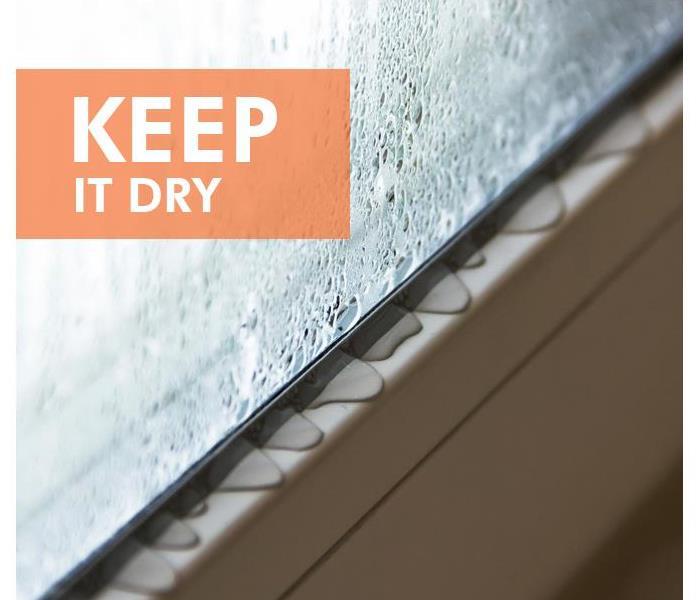 Regularly wipe away moisture to keep mold from growing around the window sill.
Regularly wipe away moisture to keep mold from growing around the window sill.
Preventative Measures That May Help You Avoid Needing Mold Clean Up Services
Property owners in Mount Pleasant, TN, know that high humidity is a given. They also know that mold loves the excess moisture it produces. While it can be a challenge to prevent its growth, taking a few preventive measures may help you avoid needing mold clean up services by a mold remediation and restoration specialist
1. Maintain Optimal Temperatures
Going from hot, smoldering days to cool evenings makes it difficult to avoid mold damage. Maintaining an ideal temperature is an easy way to avoid that. When the thermometer rises, ensure the air conditioner is set to 70 degrees. It is also vital to keep indoor humidity levels below 60%. Consider running a dehumidifier on days when the A/C has a tough time keeping up. If the humidity levels outside are lower, letting some fresh air helps enhance airflow and ventilate the property.
2. Check for Condensation
While you may be focused on the high humidity outdoors, there is a good chance there are appliances or fixtures that are prone to condensation, such as windows, pipes, walls and HVAC systems. Ensuring they are properly insulated is necessary to minimize any moisture buildup. It is also important to regularly inspect appliances for leaks.
3. Minimize Moisture Coming Inside
Maintaining a dry indoor environment means staying on top of minimizing outdoor precipitation from making its way in. Regularly inspect gutters and downspouts for debris or damage to ensure the system is draining properly. To minimize a basement getting a slow leak, verify that the grading is sloping away from the property.
4. Consider Using Mold-Resistant Materials
If the battle seems to be ongoing, it may be time to reinforce the property with newer materials. There are various mold- or water-resistant products available. From primers to wallboards and drywall, replacing porous materials may be an upfront investment, but they may provide much-needed peace of mind.
Knowing that high humidity is a constant, taking a few measures to guard against can go a long way.
Reasons To Avoid Driving on Flooded Roads
1/15/2021 (Permalink)
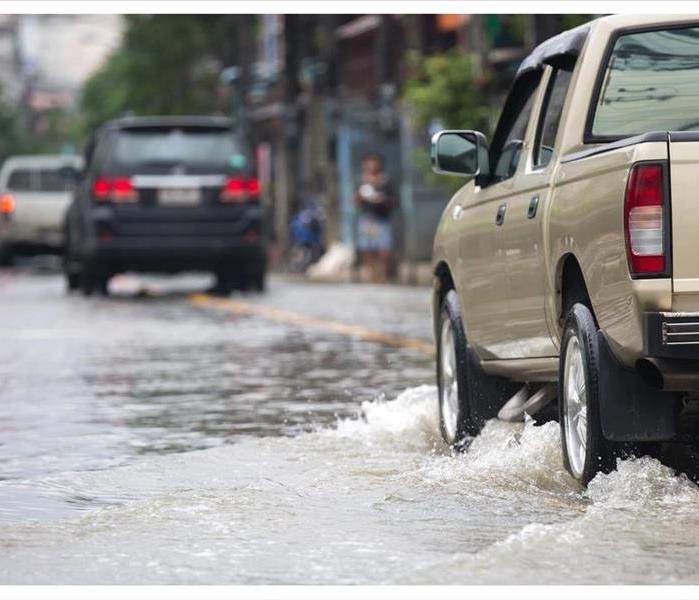 A simple flooded street can cause severe damage to your vehicle
A simple flooded street can cause severe damage to your vehicle
Reasons To Avoid Driving on Flooded Roads
Heavy storms and hurricanes are known for bringing damage and destruction along their path. In addition to strong wind and rain, flooding is also a serious concern when these storms hit in Pulaski, TN. A flooded street may seem harmless, but there are many reasons you should avoid driving through flooded areas.
Flooding and driving are a bad combination and can lead to:
- Losing control of your vehicle
- Your vehicle getting washed away or overturned
- Injury to you or your passengers
- Engine or electrical system damage
Looks Can Be Deceiving
Flooded roads are often more dangerous than they appear. Just 12 inches of rushing water is enough to wash a small car away, and 2 feet of water can sweep away larger vehicles such as a van or truck. Water can be deeper than it looks, hiding debris and downed wires that can pose a serious threat to both your vehicle and those inside it.
Stay Off the Roads
If a hurricane or major storm is moving through your area, it is always best to stay inside and wait until the storm has passed, rather than attempt to drive through a flooded street. If water is seeping into your home, call a storm cleanup and restoration service for assistance. They will remove water from your home and can help with repairs.
Evacuate if Necessary
If you need to evacuate for any reason, you should exercise extreme caution. Steer clear of areas with rushing or standing water and look up alternate routes in case your normal route is blocked off. Pack a bag with food, water, and clothing if you are unable to return home for a few days. In addition, it is always a good idea to research flood travel tips if flooding is common in your area.
A simple flooded street can cause severe damage to your vehicle and can put you and others around you at risk. Driving during a hurricane or heavy storm should be avoided whenever possible to ensure your safety and the safety of others.
Does a Leaking Toilet Always Require Replacement?
12/28/2020 (Permalink)
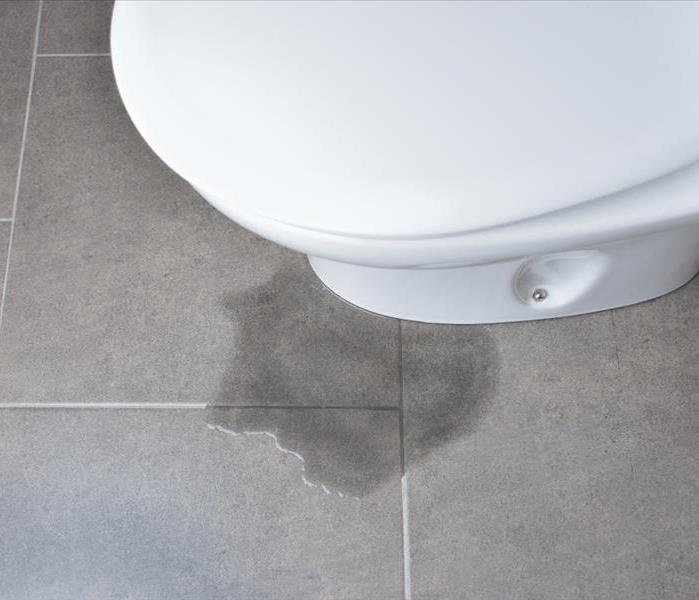 Does a leaking toilet require replacement?
Does a leaking toilet require replacement?
Does a Leaking Toilet Always Require Replacement?
When a chronically leaking toilet becomes a problem in your home in Columbia, TN, you may need a new fixture. If your toilet leaks uncontrollably, you risk the spread of bacteria and mold throughout your home. It is critical to take action to minimize the damage from a flood:
- Turn off the water supply
- Begin water extraction
- Sanitize your space
Sometimes a minor repair of an old toilet can address a leak and prevent damage.
Base Ring Replacement
A toilet's porcelain base hides the floor hole through which the waste pipe runs. A wax ring around the hole prevents water from overflowing as it passes through the pipe. The porcelain base can loosen and press against the ring, tearing the wax and causing a leak when the toilet flushes. Sometimes, the wax naturally deteriorates over time. Replacing this critical part by first removing the entire unit from its foundation might extend your fixture's life.
Tank Flapper Replacement
The toilet flapper opens upon flushing to facilitate water movement through the pipe connecting the tank and the bowl. After each flush, the flapper seals the opening that leads the water into the bowl. The flapper can wear out and provide an insufficient seal causing a leaking toilet. A new part may be enough to solve the problem.
Loose Bolts Tightening
The bolts that fix your toilet to the floor can loosen over time and cause water to leak from beneath the porcelain base. Tightening the bolts with a wrench involves removing the plastic caps that cover them. Bolts that do not tighten usually have corrosion and require replacement.
When a slowly leaking toilet leaves you wondering if you need a new fixture, consider that you might solve the problem with a minor toilet repair. A flooding toilet that contaminates your home may require the services of a professional cleaning and restoration company.
How Can You Be Certain Your Commercial Fire Sprinklers Are Ready?
12/28/2020 (Permalink)
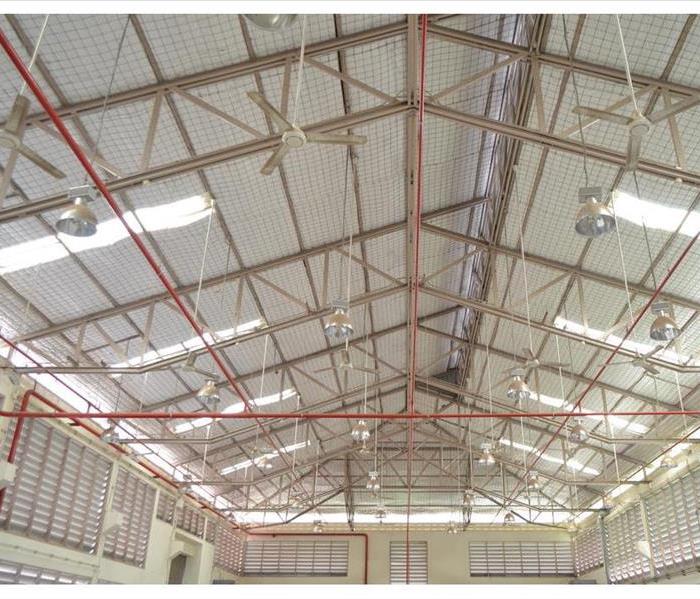 A fire sprinkler is the most effective means of protecting life and property in buildings
A fire sprinkler is the most effective means of protecting life and property in buildings
A fire sprinkler is the most effective means of protecting life and property in buildings. They’re so effective, one study in Texas found they literally eliminated deaths from commercial fires when properly maintained.
But what does it mean to maintain them? It can be a little confusing. Fortunately, the National Fire Protection Association has an easy-to-understand rulebook for this, called NFPA 25.
What Is NFPA 25?
NFPA 25 is the internationally recognized standard for fire sprinkler maintenance and testing. It lays out fire protection system requirements and details for the following mandatory sprinkler system inspections:
- A simple weekly one
- An in-depth monthly one
- A quarterly inspection and test
- A yearly inspection and test
- A 5-year complete system inspection
Can I Do My Own Inspections?
Generally, you can do weekly inspections in-house. However, all other inspections require certification in fire suppression system maintenance and repair. Columbia, TN, has strict rules about who can perform inspections. The sprinkler system not only protects the business, but it also protects surrounding structures and the lives of everyone inside. Plus, it reduces insurance claims, so it’s crucial that they be independently tested.
What’s Involved in Each Inspection?
The weekly inspection that you can perform just looks for anything obvious that’s wrong, such as items stacked too close to sprinkler heads or leaks in the system. You can find a simple list here.
The monthly fire sprinkler inspection inspects gauges, alarm valves and all the piping to ensure nothing looks out of place. The quarterly one involves some basic pressure switch tests, a thorough inspection of the risers, and a review of the required system documentation.
The annual and 5-year inspections cover the entire system and spare parts you’re required to carry. The 5-year one will also test the pressure of your system and the accuracy of the gauges.
The good news is that, when well-maintained, your sprinkler system will unlikely ever have an accidental discharge. The bad news is that if it does, you’ll have a fire sprinkler cleanup to deal with. This is covered by insurance, so have restoration professionals inspect the damage and begin the cleanup process.
3 Tips for Dealing With Mold in Ducts
12/8/2020 (Permalink)
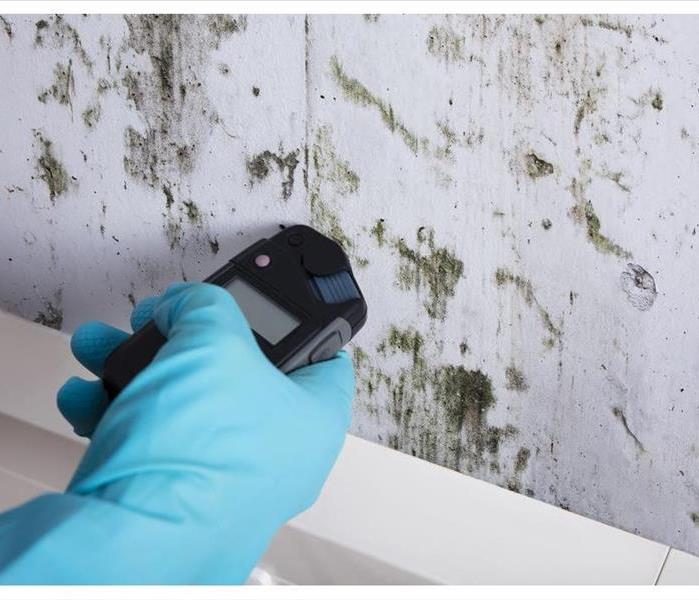 Mold testing in Columbia, TN
Mold testing in Columbia, TN
Here Are Some Tips For Handling It
Mold is everywhere, including the very air you breathe, and impossible to completely wipe out. It may be found in all homes, though it is not always present to the extent where people can see it. It thrives in dark, moist areas and begins growing in wet spots within two days. One area black mold and other mold species can grow where their spread is less noticeable is air ducts. If you have found it in ducts in your home in Columbia, TN, here are some tips for handling it.
1. Have a Mold Test Performed
Sometimes dust and grime can look a lot like black mold. To determine if there is actually mold in your home, you should consult a certified industrial hygienist. At home DIY tests are questionable and not the best option due to many reasons:
- They give useless results
- They are often not certified
- They often do not use control samples
- They are rated as "not recommended" by
- Consumer Reports
- They are actually spoken against by legitimate organizations of the mold industry
2. Hire a Professional Service
Once actual mold has been identified in your ducts, you should hire a professional cleanup and restoration service to clean ducts. Though mold cannot be removed completely, professionals know how to produce the best results.
3. Take Certain Steps
You need to turn off the HVAC unit attached to the ducts as soon as you suspect the presence of mold. Having it running might cause the fungus to spread to other parts of your home. You should also figure out the material your ducts are composed of. The type of material affects how effective remediation can be as well as how high your bill will come out to be. Materials like insulated fiberglass actually cannot be thoroughly cleaned and may require replacement instead.
Black mold and other mold in your home is a pain to deal with. Acquiring professional help considerably eases the process.
The 3 Most Common Water Issues in Commercial Buildings
12/8/2020 (Permalink)
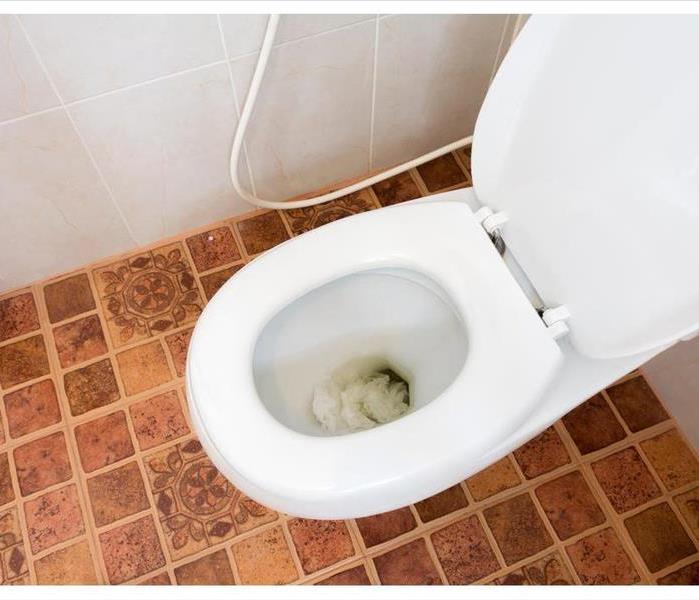 Toilet clogs are a common water issue found in a commercial building
Toilet clogs are a common water issue found in a commercial building
The 3 Most Common Water Issues in Commercial Buildings
Owning a commercial building in Columbia, TN can be an excellent way to generate income. If you maintain your building well, it can last for generations – even becoming a landmark. However, poor maintenance often leads to many problems, such as leaking pipes.
This can cause quite a few issues. Some are more or less inconveniences; others can be disastrous for a building. The three most common water issues found in commercial buildings in this region are:
- Toilet clogs
- Pinhole leaks
- Foundation cracking
Clogged Toilets Can Cause Damage
Some toilets, especially older ones, tend to cause more clogs than others. If the toilet backup doesn’t spill outside the bowl, it’s just a nuisance. However, once septic water does escape the bowl, it can easily get into absorbent construction materials.
If the water is septic, it can cause disease if not properly disinfected. If it’s relatively clean, it can severely damage drywall and floorboards. Some tenants are better than others at protecting your building, so if you have frequent complaints about a toilet, it’s to your advantage to fix it quickly.
Pinhole Leaks Are A Building’s Worst Enemy
Leaking pipes are eventually going to happen. All plumbing will eventually fail. Copper pipes gradually corrode, while PVC gets brittle as it ages. Unfortunately, plumbing is part of the invisible infrastructure, so leaks may go undetected.
A pinhole leak is quite common. It may be a slow drip or a steady stream – and it can go undetected for a very long time. This eats away at exposed materials, attracts wood-boring insects and can even cause huge black mold colonies. You need a top restoration company to fix the leak and inspect for hidden damage in this situation.
Foundation Cracking Can Be Caused by a Pipe Break
Once excess water from leaking pipes starts getting into the soil around a building, it will undermine it over time. If it happens under the foundation or its footings, it’ll lead to excess stress, often causing cracks. Repairing the damage can be costly if it’s not found quickly.
3 Tips for Preventing a Potentially Catastrophic Dryer Fire
12/8/2020 (Permalink)
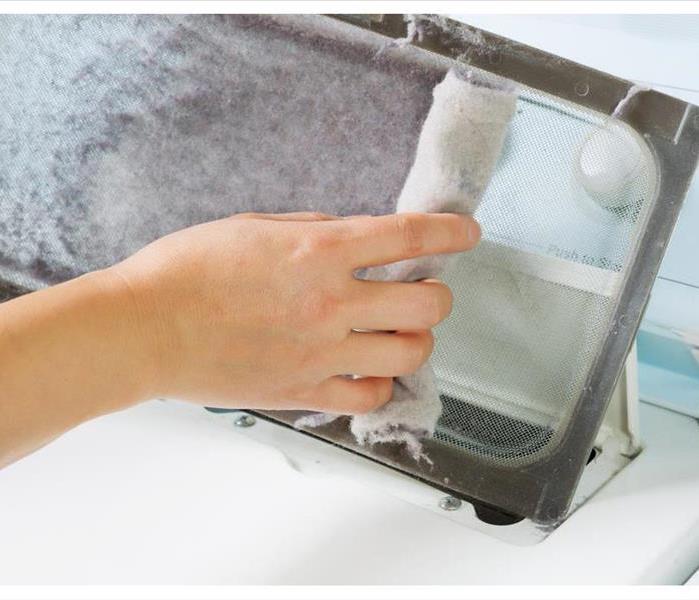 Lint fire is the most common type of dryer fire
Lint fire is the most common type of dryer fire
Ways To Avoid A Lint Fire
Did you know that lint, that gray substance that comes off your clothing in dryers, carries the potential to start fires? According to The Spruce, over 20,000 fires each year may be attributed to it. Lint fire is the most common type of dryer fire. Lint is actually a combustible material. There are ways to avoid a lint catastrophe that may cause fire damage you may require a professional cleanup and restoration company from Columbia, TN, to help repair.
1. Remove Lint Regularly
Cleaning the lint filter/trap each time you put in a load is an important step. Clogged screens are dangerous fire hazards. Another important and often neglected activity that can help prevent a lint fire is cleaning out the dryer's exhaust vent. Buildups of dirt, dust and lint in these areas are also risks. Follow these steps for cleaning out the vent:
- Disconnect the dryer
- Use a brush and cloth to clean away dirt and lint from the area where the exhaust connects to the dryer
- Clean the connecting hose/pipe
- Clean the exterior vent
- Reconnect the dryer
2. Keep Other Combustibles Away
Materials like cleansers that are also flammable should be stored away from the dryer. Sweeping out dust from beneath and around the dryer is also a good precaution.
3. Pay Attention to Signs of Problems
The state of your clothing after drying may indicate an obstruction like a plugged up vent. Two signs that you need to check the exhaust vent and the duct connecting to it for excess lint or dust are clothes that are too cold and clothes that are too hot after being removed from the dryer. A burning odor is another warning sign.
It is important to keep your dryer's lint trap and exhaust vent clean of lint and dirt, as well as not ignoring signs of issues and removing anything that might contribute to sparking a fire away from the dryer itself. These actions can help prevent a possibly devastating lint fire.
3 Flood Prevention System To Check Before You Leave for Vacation
11/24/2020 (Permalink)
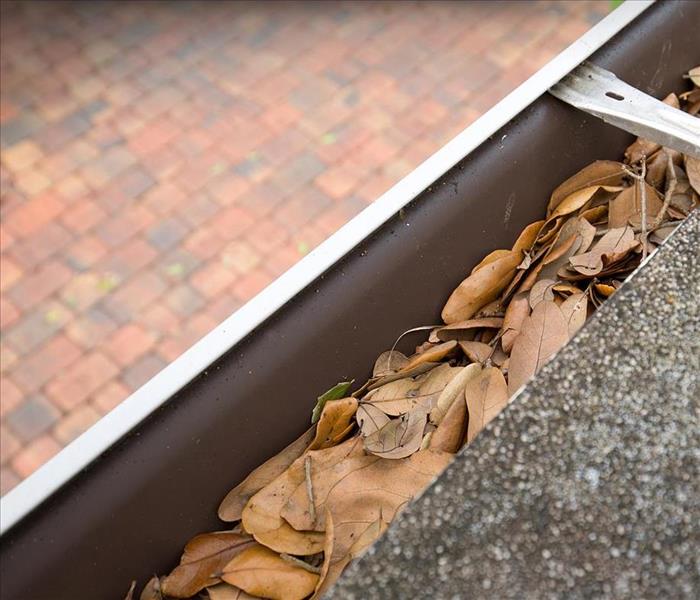 Always clean your gutters
Always clean your gutters
3 Flood Prevention System To Check Before You Leave for Vacation
Leaving your Columbia, TN, home for a vacation is always an exciting venture, but it can be important to make a checklist of actions you can take to protect your home while you are away. Preventing water damage can be especially essential, as emergency water pipe repair is often costly. Before you leave for your trip, there are a few flood prevention systems in your home you may want to have inspected to ensure it is well protected while you are gone.
1. Gutters
Your home’s gutters channel rainwater and melted snow from your roof and away from your property. When they are clogged with dead leaves and other debris, the water may overflow close to your home’s foundation and eventually seep into your basement. This could result in a flooded basement during especially powerful storms, so having the gutters inspected and cleaned before you leave for vacation could help defend your home from water damage.
2. Plumbing
A broken pipe in your kitchen or bathroom could cause major flooding, especially if it happens soon after you leave. Inspecting leaky sinks for the source of the drip and checking valves and elbow joints for signs of wear or damage can prevent this problem, as well as expensive water pipe repair bills.
3. Sump Pump
Your home’s sump pump is designed to collect and eject standing water from the basement in case of a flood, so ensuring it is in good working order before you leave can help protect your home from serious water damage. Call in a flood mitigation and restoration service to clean and inspect the pump may give you peace of mind during your absence. Ask your flood technicians about installing a backup power source for your pump in case of a blackout caused by electrical storms.
Returning from vacation to find your home flooded can taint any fond memories of your trip. However, you can avoid the need for water pipe repair and other services for your Columbia, TN, home by having flood support systems inspected before you leave.
Common Questions About Black Mold
11/24/2020 (Permalink)
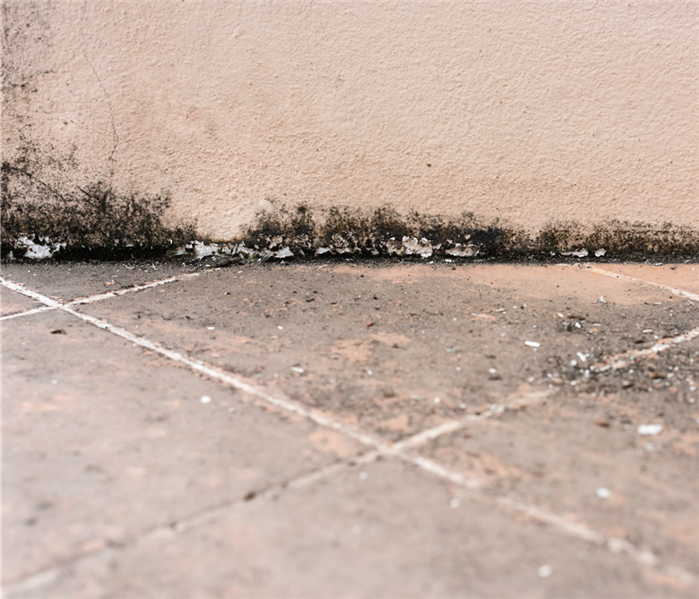 Black mold
Black mold
Read On To Have Your Most Common Questions Answered
If your home in Spring Hill, TN is experiencing unwanted fungal growth, black mold is most likely the culprit. If you're unsure which type of mold you're dealing with, then it's a good idea to have a professional mold inspection conducted, even if it only serves to confirm your suspicions. In the meantime, read on to have your most common questions answered.
1. What Does Black Mold Look Like?
Much like the name implies, this fungus appears black or dark green in color. When you find it, it looks like a dark stain spreading across the surface of the affected area. In some cases, it may even have a fuzzy or a slimy texture.
2. Where Does it Typically Grow?
This specific variety of mold needs water in order to thrive. As such, you can typically find it growing in areas of your home that come into contact with a lot of water, such as your kitchen, bathroom, basement, laundry room and garage. It's not uncommon to discover it growing in areas that have recently suffered from water damage as well.
3. How Do You Get Mold?
House mold is a result of excessive moisture. This can come in the form of especially high indoor humidity levels, excessive amounts of condensation or simply neglecting to clean spills and puddles for too long. Mold growth is also a form of secondary damage after a flood. If your home has recently suffered any type of water damage, then you should have a professional mold inspection conducted.
4. How Can You Get Rid of Mold?
The good news is that you should be able to solve the majority of mold problems by yourself, provided they haven't gone unnoticed for too long. You can use commercial mold cleaners to do the job, or create your own non-toxic cleaner using equal parts white vinegar and water.
Always make sure to call for a professional mold inspection if you're unsure of the situation. Likewise, you should contact mold remediation experts if you find that your home's mold issue is too large for you to handle by yourself.
Understanding Commercial Insurance Coverage
11/11/2020 (Permalink)
 Commercial insurance is a vital necessity for any business, no matter how big or small
Commercial insurance is a vital necessity for any business, no matter how big or small
It Is Important To Understand The Basics Of Coverage
Focusing on all aspects of your Pulaski, TN, business means there is a lot on your plate. A portion of that should also be considering the what-ifs. If something unexpected happens, such as a fire or storm damage, commercial insurance may provide peace of mind that your business will be restored back to normal as quickly as possible. While every policy may be different, it is important to understand the basics of coverage.
Standard Coverage
In general, property insurance often covers more than a homeowner's policy since there is much more happening on the property to keep the business going. In most cases, it will help pay for damage to the building, equipment, tools, inventory, furniture and personal property. That often includes costs associated hiring a fire damage and water restoration professional. Scenarios that will likely be covered include:
- Damage to computers or equipment from an accidental fire.
- The building is struck by lightning.
- The property is burglarized or vandalized.
It is important to understand that this type of coverage is not all-encompassing. It typically does not cover situations such as an employee injury, a cyberattack or breach, or vehicles used by the business. In those cases, having additional commercial auto and liability insurance will provide the extra peace of mind but at an added cost.
Cost Factors
Commercial insurance is available with an array of options and add-ons that may be beneficial depending on the type of business. Any add-ons will increase the price, but that may be necessary if located in or near a floodplain. Standard insurance does not cover flooding, so additional flood coverage will be necessary. Other facts that will impact cost include the location of the business, coverage limits, deductible selected and value of the covered property.
Commercial insurance is a vital necessity for any business, no matter how big or small. Being prepared for the unexpected can help minimize downtime and get operations back to normal faster.
Why You Need Water Damage Coverage for Your Business
11/11/2020 (Permalink)
 If your business is covered, you can recover from that loss quickly and easily
If your business is covered, you can recover from that loss quickly and easily
Are You Covered?
Broken pipes, inclement weather and flooding can lead to thousands of dollars in water damage for your business. You are even endangered if your town has an unusually high tide coupled with a normal storm. Rivers overflow their banks, and the slightest upset in the weather can be catastrophic. Fortunately, you can protect yourself in the event of a flood with water or flood damage coverage.
It Covers Broken Pipes
A pipe break can, particularly one at night, can be devastating. It can go undetected for days or weeks until it creates foundation problems, drywall or plaster issues and dangerous mold and mildew. This mold and mildew may cause other unforeseen issues and costly settlements if it is left to grow. A single broken pipe can expose you to flood conditions, necessary water cleanup and future damages. Water and flood damage coverage can help you hire a remediation company in Mount Pleasant, TN to help mitigate these damages.
It Covers Floods
Floods are usually a product of weather. Unfortunately, the weather can be extremely unpredictable at best. Even a small amount of water inside your business can cause foundation damage and damage to your electrical system and electronics. This is to say nothing of the damage to your inventory, carpet and furniture. When your business floods due to rivers rising, hurricanes or other factors, flood coverage can help you replace your inventory, equipment and building with a minimum amount of downtime.
It Covers Your Downtime
When you own a business, downtime can cause serious financial problems. Until you have a chance to repair and rebuild, you cannot operate. Companies without comprehensive flood insurance find themselves rebuilding on their own. Those with it are back on their feet relatively quickly.
A water damage policy protects your business from the cost of damages and leaks in your commercial building. If your business is covered, you can recover from that loss quickly and easily.
4 Roof Maintenance Tips for Cleaning Gutters
11/11/2020 (Permalink)
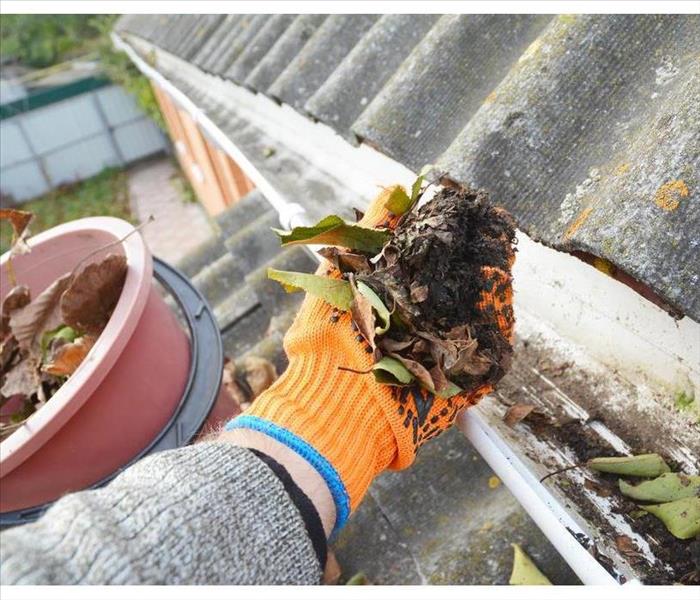 Remove debris from your gutter
Remove debris from your gutter
In some communities, public officials warn residents to clean their gutters, downspouts, and storm drains when rainstorms approach. When these are full of debris, there's a much higher probability of community flooding and reduced water quality. This part of roof maintenance is also vital to the well-being of your roof because it reduces the chance of a roof leak, rain, and wind damage.
Understand How Storm and Roof Gutters Work
If a buildup of debris has clogged the roof gutter, it prevents melting snow from running away from the edge of the building and is likely to cause a roof leak that damages the roof and connecting walls. Clear gutters remove and direct most of the water that reaches your building away from attics, walls, and crawlspaces. The cleaner you keep this path, the better water stays away from your foundation and building structure.
Perform Regular Inspections
The frequency of inspections is affected by the number of trees, shrubs, and insects surrounding your Lynnville, TN, property. You may want to begin by performing inspections each time the weather changes. Look for damage along the path of the gutters, along the downspout, and in the drain.
Clear Debris From Open Gutters
Much of the time, debris is removed by hand from the gutters by a person standing on a ladder. Depending on the size of your business and your budget, it may be wise to consider hiring a professional with specialized tools for this task.
Don't Neglect the Downspouts
Some property owners clean their gutters but neglect their downspouts. This can lead to a buildup of dirt, plants, insect matter, and sometimes mold. Use a mask to avoid unpleasant smells and specialized tools to avoid damaging these pipes from the inside.
Avoid a roof leak and services from your local property damage professionals while also protecting your standing in the Lynnville, TN, community by keeping your gutters, spouts, and drains clean. If you aren't sure you can do the maintenance yourself, contact a professional.
Flooding Cleanup Requires Safety Precautions
10/20/2020 (Permalink)
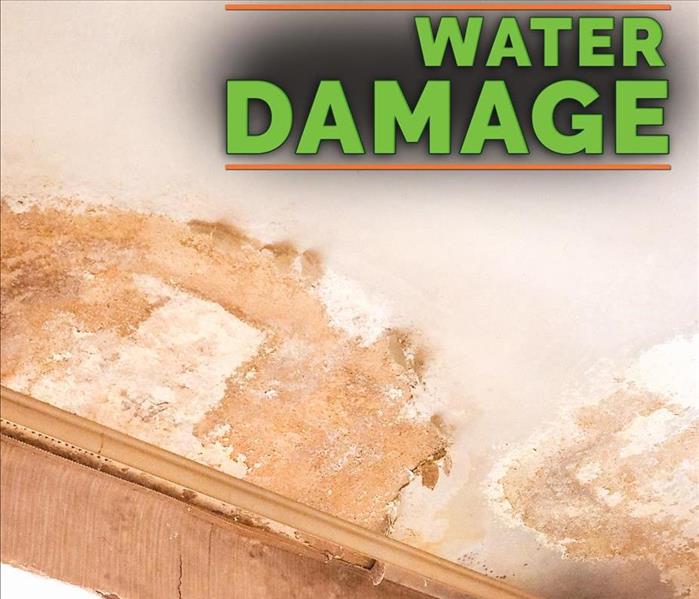 There are three categories of water damage
There are three categories of water damage
Although any type of flooding in your Spring Hill, TN, home can be overwhelming to deal with, not all flood damage is the same. Before diving in and tackling the mess, it’s important to understand the type of waters that have infiltrated your home to develop the best plan of action.
Water Categories
There are three classifications of water damage:
Clean Water – This type is considered safe and typically comes from a pipe burst, melting snow, rainwater, toilet holding tanks or another clean source that is free of potentially harmful debris or microorganisms.
Grey Water – This is water generated from showers, appliances and sinks that don’t contain fecal matter but my have potentially harmful contaminants if ingested.
Black Water – When natural flooding occurs or a sewer backup happens, it falls into this category. It is water that is ripe with fecal matter, bacteria, chemicals and other particulates that pose potential safety hazards.
Added Safety Measures
Once you know the type of water you are dealing with, you can determine the best way to get the cleanup process. If it is the third category, you will need much more than just a bucket and towels. Depending on the severity of the damage, the following PPE may be needed to start sorting through belongings:
- Watertight, electrically insulated boots
- Waterproof, heavy-duty work gloves
- Safety goggles and protective head cover
- Long pants and long-sleeves shirts or disposable suit
Since black water has contaminants, many of your belongings may not be salvageable. Even if items, such as furniture or drapes, seem to have minimal damage, water wicking up walls and absorbing into carpeting can quickly spread. To ensure more items are saved and the cleanup is done right, rely on the expertise of water damage and restoration specialists. They will have the know-how and tools to get the job done safely and the right way.
Instead of adding to the overwhelming situation by taking on the cleanup yourself, count on a professional that is Faster to Any Size Disaster.
How To Stop Noisy Pipes in Your Home
10/14/2020 (Permalink)
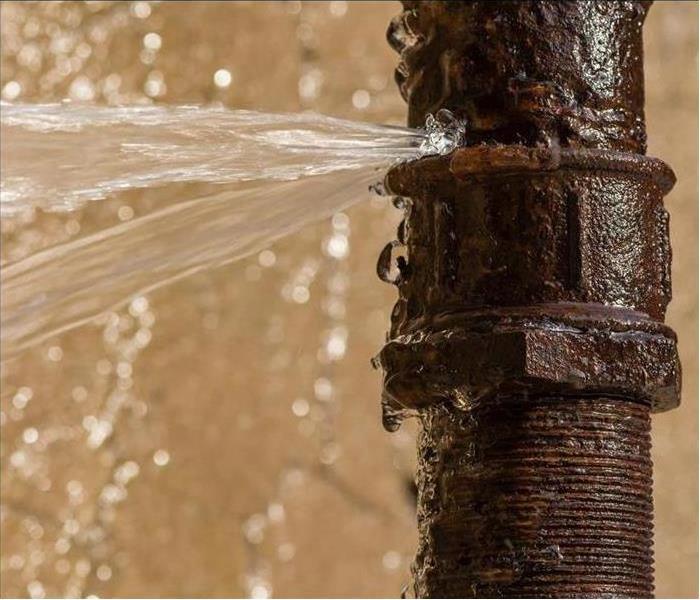 If a pipe does burst, however, you can contact restoration and cleanup specialists
If a pipe does burst, however, you can contact restoration and cleanup specialists
Common Causes of Noisy Pipes
Do you hear a squeal or bang coming from behind your walls? Then you may have an issue with your pipes. If you ignore the problem, you could end up with a major pipe break. Below are some common causes of noisy pipes and tips for addressing them.
Water Hammer
Water hammer is a banging or chattering sound that occurs when the flow of the fluid suddenly stops inside your pipes. The water's momentum causes it to bang against the inside of the fittings and the side of the pipes. Over time, this could lead to a pipe burst.
If you continuously hear this hammering sound, try inspecting all of your pipes. The flowing and stopping water may cause the elbow fittings or T-fittings to vibrate and bang against your wooden walls. You may be able to solve this problem and prevent a pipe break by putting a rubber pad between the wood and the pipe. Otherwise, you can install one of the following types of air chambers:
- Vertical pipe
- Globe- or ball-shaped chamber
- Spiral coil of copper tubing
Whistling
Whistling is the other common pipe noise. This is a sign that water is quickly flowing through an obstruction in the pipes. Usually, this indicates a problem with the washer or brass screw within a faucet or valve.
To figure out which faucet is causing the issue, turn all of them off and run each one individually. Once you find out from where the noise is coming, you can replace the screw and washer for that faucet.
Your toilet could also be the source of a whistling noise. If this is the case, you probably just need to repair or replace the ballcock valve.
By following the above steps, you can reduce the chances of a pipe break flooding your Columbia, TN, home. If a pipe does burst, however, you can contact restoration and cleanup specialists. They do not just fix a broken pipe. They also dry your belongings and mitigate future damage.
Uncovering the Truth About Mold
9/30/2020 (Permalink)
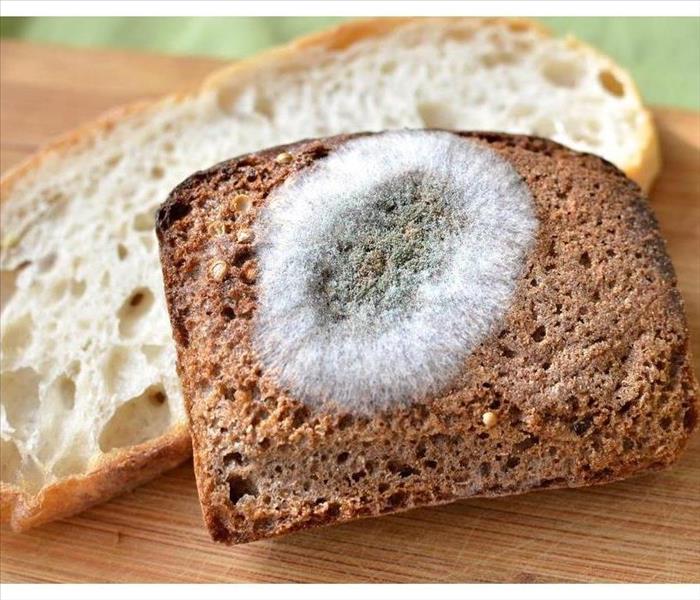 Bread mold is common
Bread mold is common
Facts On Mold
As soon as you see that patch of grey fuzz, you know your sandwich is ruined. Bread mold is easy to recognize, but aside from what it looks like, what do you know about it? Here are the facts on mold and how to get rid of it.
It Is a Fungus
Even though it might resemble moss, mold is a fungus, not a plant. Unlike plants, mold comes from spores that are in the air, and it gets energy from sources other than sunlight to grow. Fungus growth happens in places that have:
- Water
- Nutrients
- Oxygen
- Warm Temperatures
The foods we eat contain the water and nourishment fungi need. Fruits, grains and vegetables all feed mold spores and help them grow quickly.
How It Spreads and Where It Lurks
Mold is not only spread through the air but by contact, too. Spores land on food that is picked up and placed elsewhere, helping mold get into every nook and cranny. Bread mold is common because cabinets are warm and provide the perfect atmosphere for spores to settle and grow. The same can be said for your refrigerator if not kept cold enough. Exposed foods that have been left in the appliance for too long can cause fridge mold.
How to Clean It Out
Sometimes getting rid of mold is as simple as sealing ruined food in a plastic bag and putting it into a lidded trashcan. Other times, you might need to take everything out of your refrigerator and wipe it down with a baking soda and distilled vinegar mixture. Still, there are mold infestations that get out of control and spread to other parts of your home. These require the help of mold remediation specialists.
Whether you have bread mold, fridge mold or out-of-control mold, understanding how it spreads and knowing who to call in Lynnville, TN, will help you scrub out the problem.
Top 5 Leading Causes of Home Fires
9/18/2020 (Permalink)
 The majority of candle fires occur when household objects are too close to the flame
The majority of candle fires occur when household objects are too close to the flame
5 Leading Causes of Home Fires
Fire is extremely dangerous and can quickly consume your home if you're not careful. According to the National Fire Protection Association (NFPA), a fire department must respond to a home fire somewhere in the United States approximately every 24 seconds. Avoid letting your home in Mount Pleasant, TN, become part of that statistic by studying the top five causes of residential fires.
1. Cooking Fires
A kitchen fire is most likely to break out when you leave your oven or stove unattended. It's important to remember that these appliances create open flames and must be monitored carefully. Home cooking fires cause approximately $1 billion in property damages, 4,320 fire injuries, and 550 deaths each year.
2. Candle Fires
Candles may seem completely safe, which makes it easy for people to forget that they still host open flames. The majority of candle fires occur when household objects, such as curtains and other types of furniture, are kept too close to the flame.
3. Smoking
Smoking is one of the most heinous culprits when it comes to home fire causes and deaths, accounting for about 23% of all residential fire deaths. This often occurs while someone is carelessly smoking indoors and their cigarette or cigar catches on nearby combustible objects.
4. Fireworks
Unsurprisingly, residential fires caused by fireworks peak around holidays, such as the 4th of July. These typically occur when fireworks are set off too close to home structures, or when hot debris from the explosion falls into dry brush.
5. Lightning
Lightning fires are most common during storm season and account for approximately $451 million in property damage every year. Lightning fires often tend to be larger and more dangerous than ones caused by humans.
These are only five of the leading home fire causes in the United States. There are countless other ways a fire could break out in your home, so it's important to stay vigilant and take the proper precautions. Contact fire remediation experts for more information, or if you need fire cleaning assistance following an incident.
We Help You Get Back To Business In Columbia
9/18/2020 (Permalink)
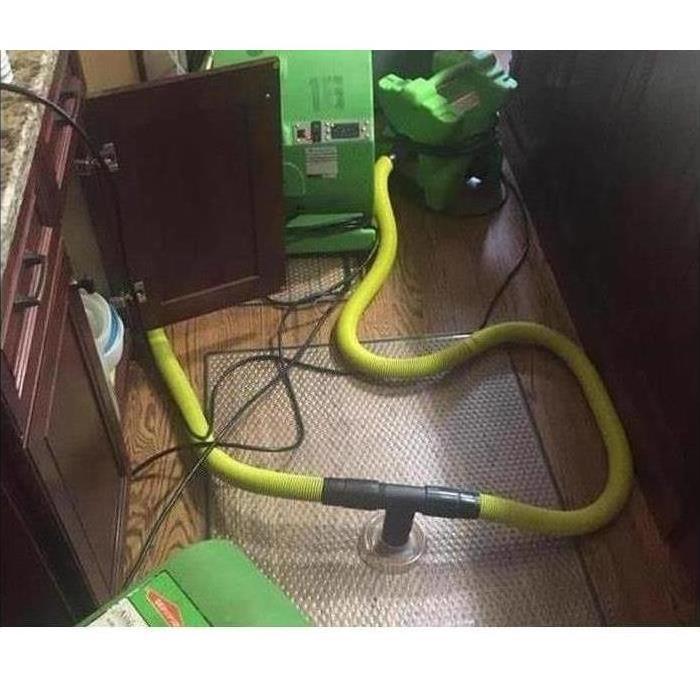 We have the equipment that can detect water that has seeped into the cracks in the floor of your business and act fast with our services.
We have the equipment that can detect water that has seeped into the cracks in the floor of your business and act fast with our services.
Overview of Commercial Water Removal for Columbia Service Industries
Commercial water damage can halt your business until it is mitigated. Besides the visible effect on the building structure, there are also safety issues and the possibility of secondary damage such as mold if the moisture is not removed as quickly as possible.
When SERVPRO performs commercial water removal in Columbia businesses, extraction is something we spend extra time doing because every bit of moisture removed beforehand, lessens the drying time and speeds the restoration process along. We know this is especially crucial for commercial properties involved in the retail and hospitality sector as they rely on foot traffic for a good portion of their revenue.
For water removal in a small area, we have portable extractors. Large scale water spills are no match for our truck-mounted pumps that can pull thousands of gallons of water in short order. In properties that have carpeting, we have weighted and stand-on extractor units that use weight to push water out of the padding and assist the carpet in drying. Each of these extraction methods helps in reducing water loss.
The other part of water removal occurs during the drying phase of restoration. Moisture lifted by the air movers during drying is disposed of using different types of dehumidifiers. Desiccant dehumidifiers are an effective way to remove excess moisture. A wheel coated with a substance such as a silica gel attracts the water vapor, and as it collects, the weight turns the wheel, and the water drops off into a disposal port, and the process begins again.
Our SERVPRO technicians have a goal of getting your commercial property back to the business of serving customers as quickly as possible. We communicate with you every step of the way to ensure you know what our technicians are doing throughout the restoration process.
The World's Long Struggle Against Flooding
9/9/2020 (Permalink)
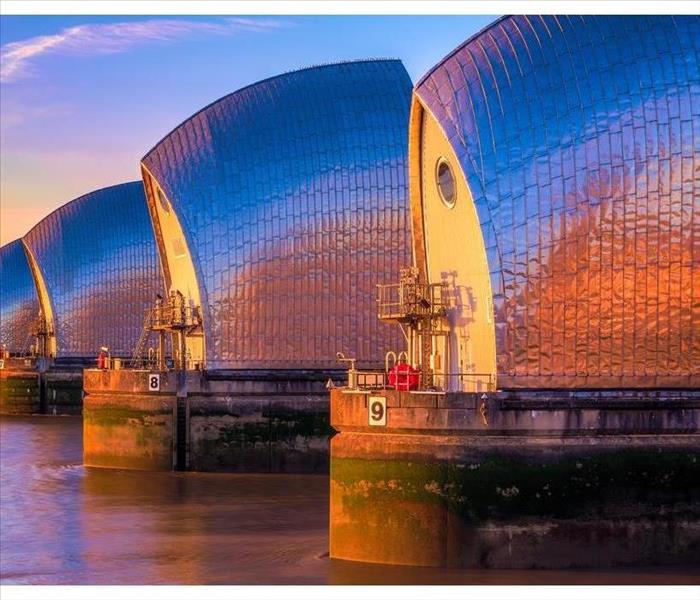 The Thames Barrier in England
The Thames Barrier in England
For eons, people have struggled against the sometimes overwhelming power of floods and high water. It is a particularly vexing problem, as damaging now as it was centuries ago. When waters rise, it is difficult to keep them from inundating lands, properties, homes, and cities. In just the past twenty years, the U.S. has seen major floods in Louisiana (Hurricane Katrina in 2005), the East (2006), Colorado (2013), and Missouri (2015). All of these events resulted in massive damage to properties both residential and commercial. Powerful countermeasures have been developed throughout the world in the hopes of holding the seas, oceans, and rivers back.
Major Flood Prevention Projects
Countries that build communities in low-lying areas often are most at risk. These are the regions that have constructed some of the most enormous engineering projects to hold back high water. The Netherlands has a number of such barriers, including the Maeslant Storm Surge Barrier, the Hagenstein Weir, and the Oosterscheldekering. Other large projects include the following:
- The Watergates in Japan
- The Thames Barrier in England
- The MOSE in Venice, Italy
These high-tech solutions are often what is needed to stop flooding on a large scale. They use barriers, hydraulic pumps, and moving gates to battle the powerful forces of water.
Serious Restoration Procedures
When a flood hits your company in Pulaski, TN, it is crucial to take quick action. A local storm mitigation company can arrive Faster to Any Size Disaster and begin the remediation process at once. A team of technicians will use specialized equipment such as vacuums and fans to remove water and dry out walls and carpeting. The workers will replace heavily-damaged areas of your building and restore items that can be cleaned and saved. They are trained in a variety of techniques designed to restore your company back to its original condition. They know that high water can cause a lot of damage to a commercial building, especially if a cleanup is delayed.
Commercial Insurance Coverage for Mold Damage
8/19/2020 (Permalink)
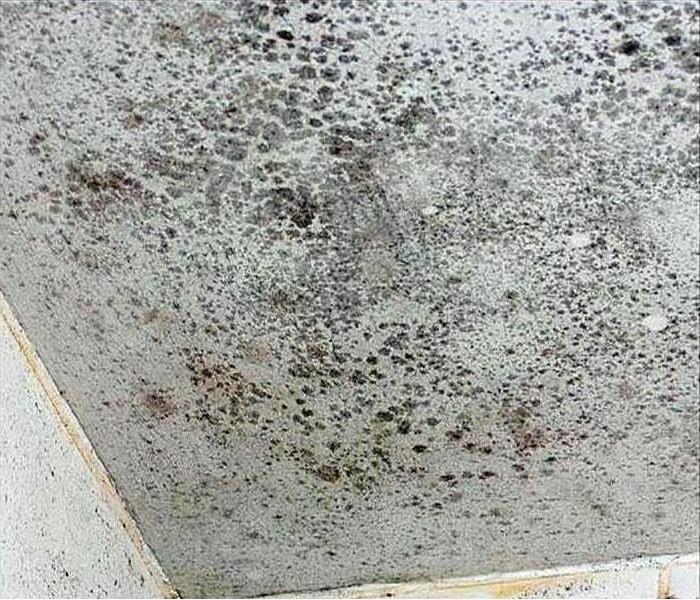 Commercial mold remediation in Columbia, TN
Commercial mold remediation in Columbia, TN
Most commercial insurance policies provide limited coverage for mold damage. While the standard ISO form includes a broad fungus exclusion, your mold claim may be covered if it falls under one of the three exceptions to the fungus exclusion.
Fungus Exclusion Exceptions
The fungus exclusion in the standard commercial form eliminates coverage for loss or damage caused by the presence, growth, proliferation, or spread of the fungus, wet or dry rot, or bacteria. However, limited coverage is provided if one of the three exclusions applies:
- The mold damage resulted because of fire or lightning damage to the property
- A covered cause of loss results from the presence of mold
- The mold occurs because of a covered cause of loss other than fire or lightning
When Limited Fungus Coverage Applies
If mold damage results from a covered cause of loss other than fire or lightning, such as water from a burst pipe, your commercial insurance policy may provide limited fungus coverage. This coverage applies only if you took reasonable actions to prevent mold from occurring, such as employing professional water remediation services to remove standing water from your property.
What Limited Fungus Coverage Covers
If your mold insurance company determines that limited fungus coverage applies to your loss, this coverage should pay for the cost of removing the mold and repairing or replacing property damaged by the mold. This coverage also applies to the cost to remove any property, such as drywall, necessitated by the need to access areas with mold growth. Most policies also cover the cost of a professional mold test in Columbia, TN, performed to ensure no mold remains after cleanup and repair.
Not all commercial insurance policies are written on the standard ISO form, so it is advisable to consult with your insurance professional to determine which mold coverages apply to your policy. It may be possible to have your policy modified to provide additional coverages.
5 Water Damage Tips for Your Commercial Property
8/19/2020 (Permalink)
 Wet carpet in a commercial building
Wet carpet in a commercial building
Five Tips For Handling A Water Emergency
Water damage from natural disasters or other events can quickly turn your business upside-down. Your business suffers financially from damage and lost productivity. While no one likes to think about these types of events, damage can be minimized if individuals know how to handle the situation. Here are five tips for handling a water emergency.
1. Assess the Situation
Whether your Spring Hill, TN, business was hit by a hurricane or broken pipes, the first step is to ensure that all individuals are safe. Electrical and slip hazards are common during any type of water event. Before you or any individual attempts to manage a water problem, ensure that it’s safe to stay in the building.
2. Remove Excess Water
Once you’ve determined it’s safe to stay inside, the next step is to remove excess water by mopping or using a wet-dry vacuum. Do not use a regular household vacuum to extract the water. You can also try to remove water from wood furniture, desks, and other non-electrical items.
3. Remove Wet Rugs and Furniture
The third tip for water cleanup involves removing rugs and furniture. Cushions, rugs, chairs, lamps, artwork, and loose items on the floor should be removed to help minimize water damage. If the furniture cannot be removed from the building, place blocks between the legs of the furniture and the floor.
4. Don’t Use Electronics and Appliances
Computers, tablets, copy machines, televisions and any other electronics should not be used during a water emergency. Make sure all individuals know that it’s unsafe to handle electronics in standing water.
5. Don’t Leave Wet Items in Place
Rugs, books, and colored items are especially damaging during a water event. If possible, remove all wet items off the floor in order to minimize water damage and potential mold.
One of the best things you can do during a water emergency is to contact a water restoration company. They can help with water cleanup and restore your business in a safe and timely manner.
Best Practices for Cleaning After a Flood
8/7/2020 (Permalink)
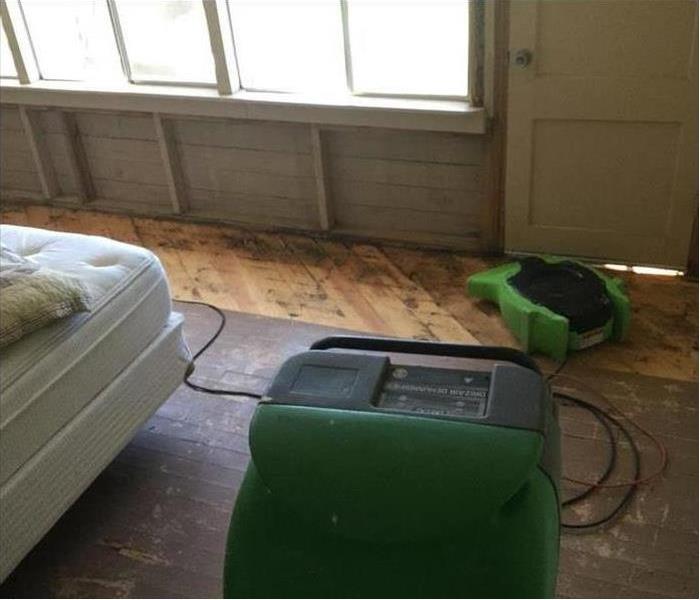 Storm cleanup in Lynnville, TN
Storm cleanup in Lynnville, TN
The myriad effects of a flood are not pretty. Whether you experience a powerful storm surge or the rising of a nearby body of water, a flood can leave mud, contaminated water and debris in various parts of your home. It can soak carpeting and upholstery and personal belongings and coat them with a stubborn layer of filth. The cleaning requirements after a flood are very specific and go beyond normal cleaning. A professional flood mitigation franchise in Lynnville, TN, understands the need for quality standards when cleaning flood waters. All elements and materials in a home are subject to damage.
Affected Areas of the Home
In addition to the normal suspects, a home faces damage in many areas after a flood. These unexpected areas include the following items, systems, and places:
- Electrical components
- Heating and cooling systems and ducts
- Appliances
- Drywall
- Insulation
- Mattresses
Due to the nature of a flood, special cleaning requirements such as a tear-out may be called for. This involves the cutting out of portions of drywall and insulation and replacing them with new materials. A powerful yet safe flood disinfectant will need to be used on any surfaces that the floodwaters came in contact with. Technicians will take their cue from leaders in the cleaning and restoration industry that establish high standards.
Additional Problems To Address
To get a house flood clean, trained technicians use the latest technology to locate high humidity and areas of mold growth. Some personal belongings and other household items will need to be thrown out. Odors often linger until the house is spotless. Tiny organisms can survive long after an area looks clean, so experienced technicians always follow the latest cleaning requirements. The use of approved antifungal and antimicrobial ensure bacteria and viruses are wiped out. Cleaning the damage and filth caused by a flood requires knowledge and special equipment.
Eliminate the Mold From Your Washing Machine
7/29/2020 (Permalink)
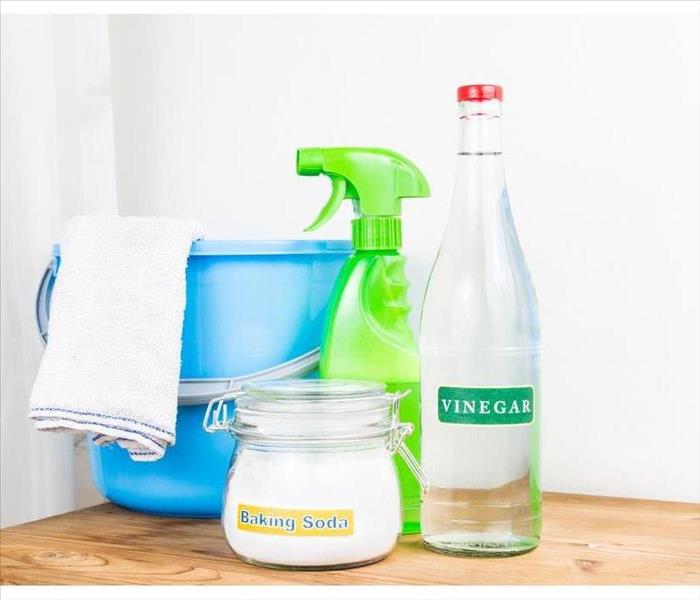 Baking soda and vinegar clean safely and effectively
Baking soda and vinegar clean safely and effectively
Because soap is frequently added to your washing machine, you may think it's the cleanest appliance in your home in Mount Pleasant, TN. Unfortunately, the warm and humid environment provides the perfect conditions for mold to grow.
Front-loading Machines Invite Mold
A front-loading washer is highly efficient. Because its drum rotates from an axis that is horizontal, it requires much less water to operate than a top-loading machine. Problems can occur, however, when improper detergents are used in the machine. Because less water is used, the machine can't properly rinse away all of the soap found in traditional softeners and detergents. The drum gets coated with a filmy layer of soap. When you factor in the heat and dampness inside the washer, it compounds the problem. A front-loading washing machine also comes equipped with a rubber gasket in the door to prevent leaking, which is an invitation for soap scum to build up.
If you own a front-loading machine, always purchase high efficiency detergent (marked with the "he" symbol), and stop using fabric softeners. Even if you use the correct soaps, mold can still grow to some extent, so it's important to clean the machine routinely.
Proper Ingredients Clean Safely and Effectively
The best cleaning ingredients don't contain harsh chemicals.
Baking soda - A quarter of a cup works well. Mix this with the same amount of water and add to the machine's detergent dispenser.
White vinegar - Pour 2 cups of vinegar into the drum of the unit.
Run the machine on the normal cycle with high heat, but without dirty laundry. Once the cycle is complete, clean any residue with a rough kitchen sponge that has been soaked in equal parts of vinegar and water. You should follow this routine about once a month if you detect a mold smell. If mold persists, call a mold remediation specialist right away.
Keep your washing machine free of mold and odors by following these simple steps.
How to Care for Waterlogged Items
6/15/2020 (Permalink)
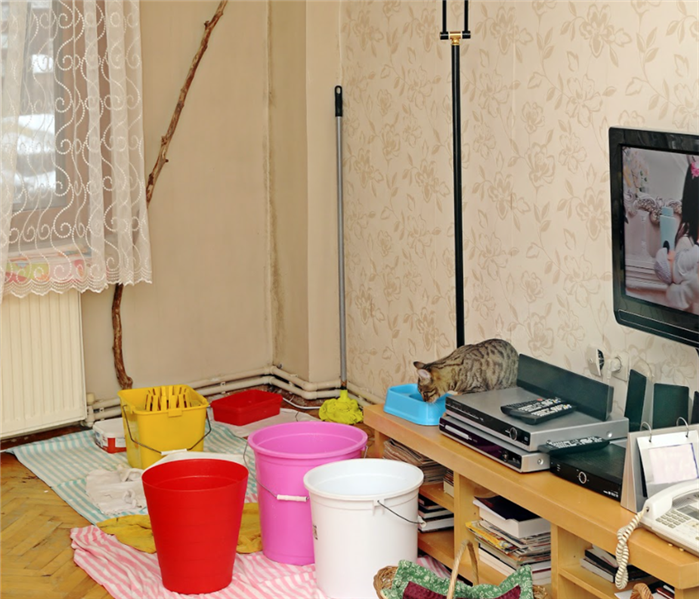 Water leaking from ceiling in a home
Water leaking from ceiling in a home
How to Care for Waterlogged Items
Is there a way for owners in Spring Hill, TN, to assist in salvaging their favorite belonging even after those items have been drenched? Is a towel enough, or do they need to do more? Residents can feel rest assured that aid is possible, especially when working with content cleaning specialists such as SERVPRO; these crews have the knowledge and high tech equipment to only sanitize but save valuables. If you want to protect your assets, consider the following three steps.
1. Find Ways Reduce Moisture
Begin with using dry cleaning methods. If the electricity has been cleared as functioning, run fans, and the air conditioner. Furthermore, dehumidifiers can also help extract humidity from walls and flooring. Next, carefully take out rugs, furniture, and fixtures. Place them in open aired areas, preferably where the sun exposure can help. If they cannot be taken from the space, then place foil squares underneath, preventing staining on the floor. In addition, use care when picking up paintings and other papers. If they begin to fall apart, place them in a plastic container, with the lid off, and set them aside. In fact, you may wish to speak with a company like SERVPRO that specializes in cleaning services. Their high tech equipment may be able rescue some of your more delicate possessions.
2. Rinse Materials
Water in home furnishings and fixtures needs attention. Anything that is still covered with the contaminated water should be washed off with clean fluid. Using a hose or a wet rag, carefully wipe away any debris or grime.
3. Disinfect Items and Structures
Look around the broken pipe or flood entrance. Notice if anything has small discolorations which are indicators of fungus growth. If you suspect any trouble, apply a commercial disinfectant spray, working to reduce the infestation.
Don't allow water in-home possessions to sit as it could make it harder to recover them. Instead, concentrate on extricating water and sanitizing.
3 Tips for Dealing With Crawl Space Water
6/2/2020 (Permalink)
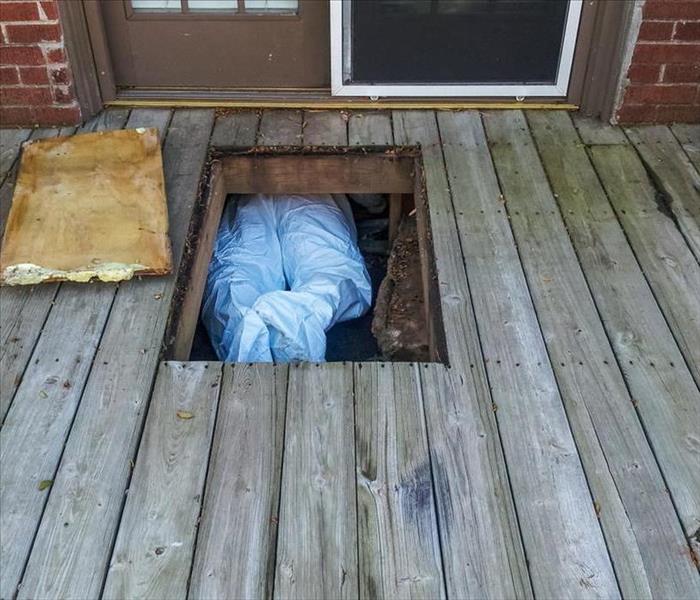 When you have a wet crawl space it’s best to conduct a cleanup as quickly as possible
When you have a wet crawl space it’s best to conduct a cleanup as quickly as possible
Here Are Three Tips That Might Help
If your Lynnville, TN, home has a wet crawl space you may be worried about water damage from the flooding. One of the best ways to deal with this is to clean up the space as quickly as possible. Here are three tips that may help.
1. Call a Professional
One of the first steps to follow with any water problems is to contact a water damage restoration service. These professionals have the tools and training needed to remove the water from your crawlspace, clean the area, and make any necessary repairs. Many restoration professionals also have the ability to work with your insurance in case a claim needs to be documented.
2. Remove the Water
A wet crawl space can experience a number of additional problems such as mold or the warping of wood, so it’s important to remove any excess water from space as quickly as possible. A restoration service will often have pumps or water-rated vacuum to pull large amounts of water out of the area. You can also make use of absorbent rags. Once the water is gone the area can then be dried.
3. Dry the Space
It's important after the floodwater is removed to thoroughly dry the area. If Possible a dehumidifier can be used to help pull moisture from the air. After the area is dry it will be easier to make any necessary repairs and set up mitigation measures against future flooding. Drying the space can help prevent possible problems like mold or warped wood as well.
When you have a wet crawl space it’s best to conduct a cleanup as quickly as possible. A restoration service should be able to help. Start by removing the water and thoroughly drying the area. After these repairs can begin and mitigation steps against future problems can be made. If you have any questions a professional can help.
Call Our Certified Technicians To Handle Your Columbia Fire Damage Restoration
5/21/2020 (Permalink)
Your Columbia Home Smells like Smoke Thanks to Fire Damage!
Most homeowners experience accidents in their home at some point or another. These disruptions of daily life are usually the result of smaller things, like a grease fire that starts in the kitchen and suddenly there are flames to put out and a need to call the fire department. Regardless of its source, the smoke and fire damage resulting from that small event can leave you at a loss when returning your home to normal.
When your home in Columbia falls victim to fire damage, it is best to reach out to an expert team such as SERVPRO. Our technicians are IICRC-certified and receive continuous instruction on the latest techniques and equipment available for the restoration of homes such as yours. Most importantly, our team is available 24/7 to respond to your call and begin the time-sensitive task of removing any remains of the fire, including the subsequent damage firefighting agents may have caused.
Based on our training and field experience, our SERVPRO team can observe the path of the smoke and soot to assess each surface and determine the best cleaning agent for it. Most importantly, our team can determine where the foul smoke smell resides and work accordingly to eliminate it from your home. If your air vents and ducts are spreading the smell throughout your home, we can install specialized filters and air purifying equipment to improve the air quality and return it to normal.
Many times, homeowners attempt to restore their furniture and belongings themselves using store-bought solutions. Although these can be helpful for some things, you also risk worsening the damage if it is not the right solution for the surface you are treating. A professional team such as SERVPRO can make an educated decision for each affected area to optimize its cleaning efforts and minimize your damages.
Even if a fire to your home appears to be of little consequence, reach out to SERVPRO of Maury/Giles Counties at (931) 388-4248 and let us leave your home “Like it never even happened.”
Click here to discover what your parks can offer you.
Should I Replace My Polybutylene Pipes?
5/14/2020 (Permalink)
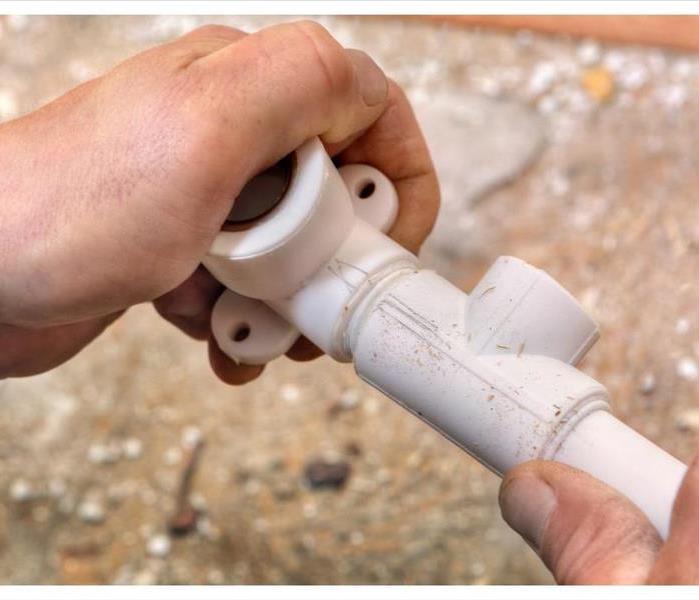 From around 1970 until the 1990s, polybutylene pipes were installed in millions of commercial buildings
From around 1970 until the 1990s, polybutylene pipes were installed in millions of commercial buildings
If your building in Pulaski, TN is more than 20 years old, you need to have the plumbing inspected. From around 1970 until the 1990s, polybutylene pipes were installed in millions of commercial buildings. This type of plumbing was fairly inexpensive and installation was quick and easy, so it was an attractive choice for many business owners. Unfortunately, these pipes have proven to be inadequate and new plumbing must be installed.
What Are the Problems With Poly Pipes?
Water treatments, including anti-bacterial and chlorine, negatively react with the polybutylene, causing the pipes to become brittle and crack over time. Because the deterioration takes place inside the pipes, it is hard to detect until a serious problem occurs. The resulting water damage is much more expensive than the cost of replacing the pipes.
Other situations that have contributed to the poor quality of the pipes over the years include:
- Inadequate plumbing installation
- Equipment used during installation wasn’t calibrated correctly
- Pipe fittings degenerate quickly
The poor condition of the pipes not only increases the risk of flooding, but it also affects the quality of the water that flows through the pipes. This can pose a health risk to your employees. For these reasons, the building codes in the United States and Canada don’t recognize these pipes any longer. It may be nearly impossible for insurance to cover water damage caused by faulty pipes as well.
How Can You Tell if You Have Poly Pipes?
If your building was constructed in the 1970s through the 1990s, chances are high that you have these inadequate pipes. You should call a professional to inspect the plumbing as soon as possible. He or she will be able to give you the best advice to remedy the situation.
Installing new plumbing may seem too expensive, but the price of not replacing the polybutylene pipes will eventually be much more costly.
4 Things You Can Do To Handle Mold Damage
5/14/2020 (Permalink)
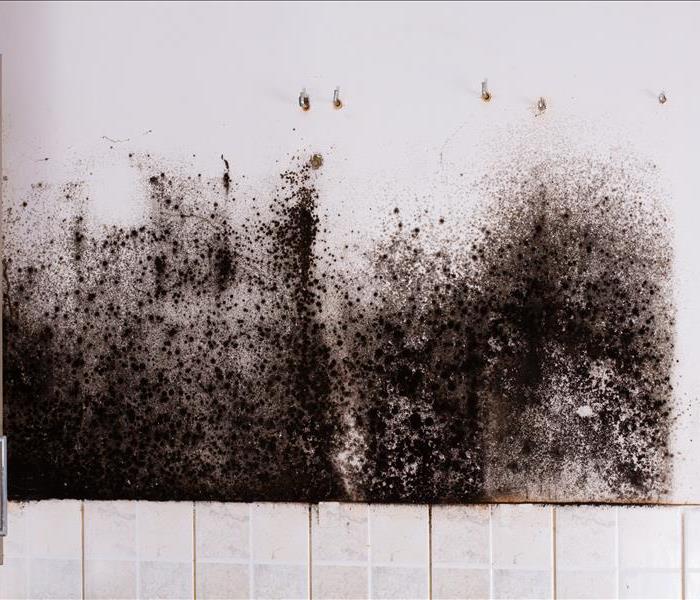 Yes, you may have black mold, but you can get rid of it
Yes, you may have black mold, but you can get rid of it
Four Tips To Keep In Mind
You really thought it wouldn't happen. How could black mold really have bred in your establishment? As a business owner in Mount Pleasant, TN, you have taken great pride in maintaining a safe and secure building. Sometimes, though, despite the best efforts problems form. Fungus is one of those unfortunate and, often, unexpected things. If you're facing this travesty, here are four tips to keep in mind.
1. Disconnect Water Sources
Liquids act as a catalyst for spore development; therefore, during your mold cleanup, you should shut off the water flowing into the area. This essentially cuts off the food supply, reducing reproduction and the possibility for further destruction. This includes turning off the valves to sinks, showers, and toilets. If you can't pinpoint a section, then turn off the mainline. Then, work with a plumber to repair any leaks, breaks, or overflows.
2. Establish a Boundary
Your focus should be containment. Avoid spreading black mold to other rooms of the establishment. Thus, you want to prevent people from entering into space. Put up signs and, if possible, cut off the air supply and entrance to the zone. Microbes travel through the air, so the vent circulation can allow travel. Turning off the unit may make it hot, but it mitigates the reproduction.
3. Dry the Area
Reduce the amount of fluid, wiping up any puddles or dampness. Then, bring in dehumidifiers to run for days, soaking up the excess humidity. In addition, add absorbent products into corners or smaller surfaces, drawing out as much as possible.
4. Remove Heavily Affected Materials
It's tempting to spray on chemical cleaners, hoping that your trouble will go away. However, the moisture problem allowed fungus to dip deep into porous items. Your walls and carpeting could be much worse than you imagine. You'll want to have a water restoration company inspect the zone, determining the extent of contamination. With that information, you can then begin removing polluted belongings.
Yes, you may have black mold, but you can get rid of it. Prevent additional moisture from accumulating, and then gut the impacted matter.
4 Ways To Use Landscaping To Protect Your Home
5/1/2020 (Permalink)
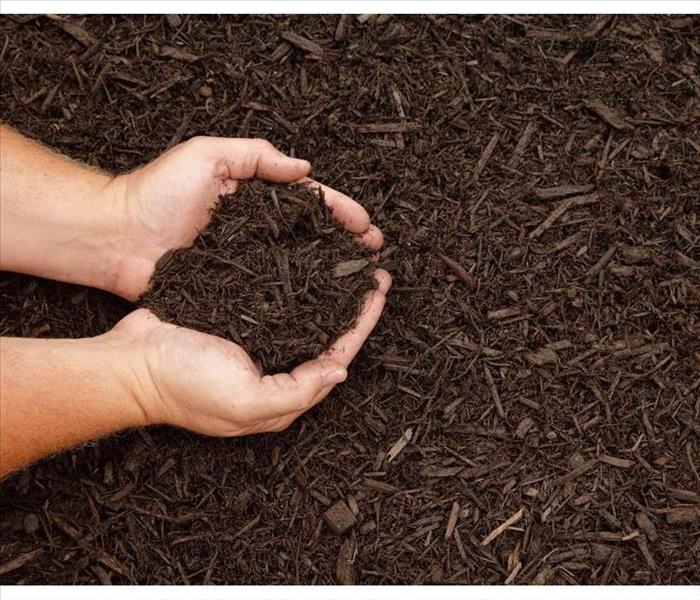 Mulch is a great way to keep the soil cool and damp, keep weeds at bay, and keep your foundation dry
Mulch is a great way to keep the soil cool and damp, keep weeds at bay, and keep your foundation dry
Four Ways To Use Landscaping
A wet basement can do more than ruin your weekend plans in Spring Hill, TN; it can lead to soggy heirlooms, unexpected repairs, and a date with your water damage mitigation company. Here are four ways to use landscaping to keep outside flooding where it belongs.
1. Rain Gardens
A garden is a beautiful way to soak up a rainstorm and keep water away from your foundation. Stick to native plants for the lowest maintenance garden project, and be sure to plant the thirstiest plants in its center. That’s where the most water will accumulate, so flora that requires less water should be placed along the outer edges to avoid oversaturation.
2. Swales
A swale is essentially a valley on your property that’s used to direct rain drainage to a more desirable location than your rec room. This lowland doesn’t stop outside flooding, however, so it’s critical to make sure your swale moves that flood water toward an area that can make use of it, such as the rain garden described above.
3. Heavy Mulch
Mulch is a great way to keep the soil cool and damp, keep weeds at bay, and keep your foundation dry. If your mulch material is too light, however, flood water will simply carry it away. This not only means an increase in flood potential, but also more raking for you. Opt for heavier mulch materials, such as stones or hardwood chips, and be sure to keep it at least six inches away from your siding to prevent moisture wicking.
4. Grass
Large, empty patches of dirt in your yard aren’t just an eyesore; they’re a liability. Your lawn needs grass — more specifically its roots — to drink up water and prevent flooding. For superior protection, don’t cut your grass too short, either, as it can weaken those thirsty roots.
Landscaping is one of your home’s best lines of defense against outside flooding. Use the contours of your yard and clever planting and planning to prevent water from entering your home.
What You Can Do To Protect Your Business From Fire
4/21/2020 (Permalink)
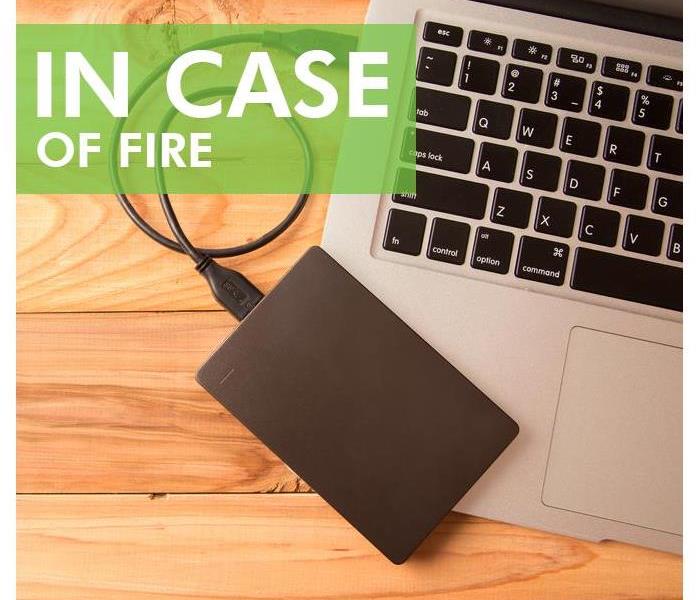 Begin to back up your paperwork to a server
Begin to back up your paperwork to a server
What You Can Do To Protect Your Business From Fire
You invested heavily in your business. It's been countless hours, days and years of building up clients and training staff. You've created a product or name that others respect. You don't want to lose it all overnight. As proprietor's in Columbia, TN, you're very much aware that fire preparation needs to be a priority. Your decisions may not stop something from starting, but it could make the road to recovery smoother, reducing the total amount of destruction.
1. Have a Plan
Knowledge won't stop a blaze, but it certainly can assist in keeping people calm and handling the situation. Therefore, create a disaster preparation plan for various emergencies. With a team, walk through the structure, thinking about how to evacuate, improve the walking paths and minimize vulnerable spots. Then, design several escape routes, including paths for those with disabilities. Designate leaders, gather personal numbers for contact and pick a location for others to gather. Also, review insurance policies, and have the name a of reputable fire restoration company on hand.
2. Backup Records
While losing merchandise and fixtures is hard, many often neglect to think about the impact of losing files. Financial records, contracts, and insurance policies are pivotal. Therefore, as part of the fire preparation stages, begin to back up your paperwork to a server, accessible from somewhere other than the building.
3. Install Preventative Devices
Because flames are unpredictable, fire codes were established to assist in mitigating fire damage. Thus, it's essential to consistently remain up-to-date on the current requirements. Hopefully, they'll keep the loss low as well as buy enough people time to leave. Your first line of defense is the sprinkler system. Consider having someone look at them periodically, at least once a year if not more than that. Along with this, have fire extinguishers within visible and accessible areas and run through fire drills a few times a year.
Take fire preparation seriously. Proactive choices could reap major rewards in the time of a disaster.
3 Things Your Business Can Expect During a Storm Damage Restoration
4/12/2020 (Permalink)
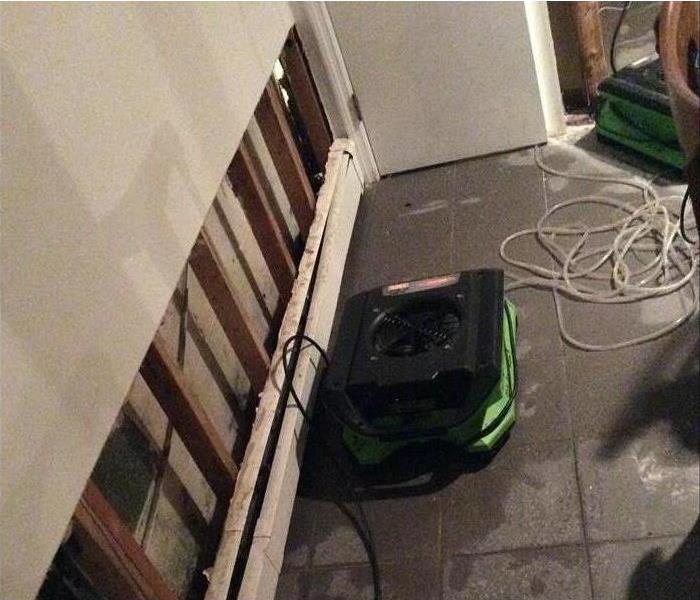 Perform a flood cut in Lynnville, TN
Perform a flood cut in Lynnville, TN
Three Of The Most Common Services
If your business in Lynnville, TN, has experienced storm damage you may be wondering what you can expect to see during the restoration. The damage restoration team working on the property may do a variety of things from water removal to a tear out of damaged materials. Here are three of the most common services you may encounter during the process.
1. Water Removal
If you have water from the storm, or other flooding, in your business the first thing you may see your local storm restoration service do is remove the water from the affected space. They may use pumps to get the bulk of the water and then squeegee the remainder away from the walls to be cleaned up with an absorbent cloth.
2. Wall Replacement
Another service you may see the restoration team perform is a flood cut or tear-out. This is a process in which wall space damaged by flooding is removed and replaced with new material. Typically the wall is cut a foot above the damaged area. Once the new wall portion is in the wall can be seam taped and repainted to look as if the damage never occurred.
3. Item Cleaning
One important thing to remember is that even items with water damage can be restored. This includes important office files and electronics. Mechanical items may need a professional to look them over but furniture or cloth items can be washed with a special cleaning solution and inspected for damage. Your restoration team may offer these item cleaning services, and may find that many more of your office items can be salvaged then you may originally have thought.
The restoration service working on your company property will most likely start with removing any remaining flood water. They may then perform a tear out to remove damage portions of any walls. Once repairs on the damaged space have begun you may also see them begin item cleaning. With a little time and work your business can be restored to pre-damage conditions.
Your Home In Columbia Can Be Restored By Our Skilled Flood Damage Specialists At SERVPRO
4/7/2020 (Permalink)
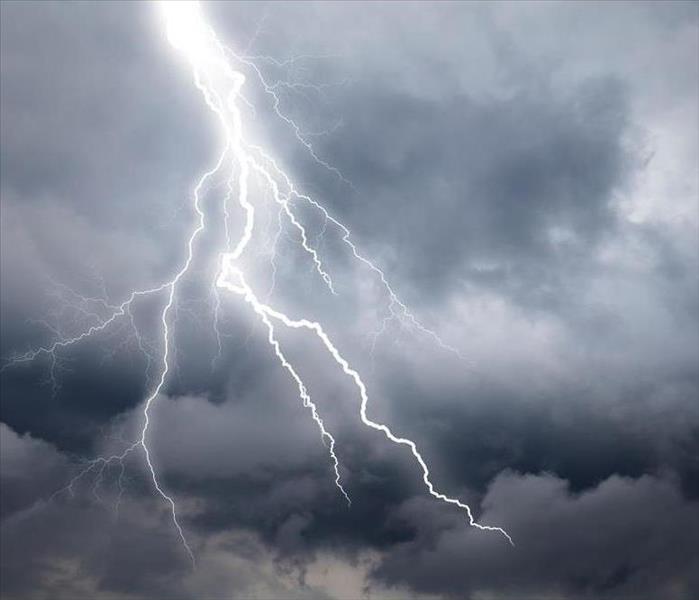 We can handle any sized storm damage
We can handle any sized storm damage
Fast Extraction For Floodwaters In Your Columbia Home
Natural disasters like flooding present several unique risks to your Columbia home and those that live inside it. Preventing these disasters can often be impossible, especially when conditions get met for creeks and streams around your home to rise beyond their banks and affect entire communities at once. The only choice that you have is to work as quickly as you can to get the right personnel to your property to begin mitigation work and the necessary steps to minimize the length and cost of time it takes to restore the damage occurring.
While you might have numerous concerns when floodwaters penetrate your Columbia home, the most pressing of these is removing the pooling water from the exposed areas of your property as promptly as possible. The longer that floodwater rests against materials and contents of your home, the greater the risk of contamination, bacterial growth, mold growth, and other biohazardous effects to occur. Our SERVPRO professionals are available 24/7 to respond quickly amid an emergency with extraction strategies that work.
Depending on the seriousness of the damage, our technicians might use one of several different types of extraction equipment to remove the excess water from your property. For severe situations, we offer truck-mounted pumps along with our SERVPRO Green Fleet of response vehicles to quickly remove this threat at a rate of 300 psi. Additionally, tools like our extraction wands, portable sump pumps, and weighted extractors can help to pull moisture away from vital structural components.
Removing the excess water from exposed areas of your property is important to allow the drying efforts to follow to happen quickly. Materials like drywall and carpeting must get removed from flood-damaged properties, but effective drying of structural elements like framing, studs, and beams can help to ensure that reconstruction takes less time and is less expensive overall.
While there are many concerns that a homeowner has when floodwaters begin to breach their property, the first reaction that you should have is to reach out to our SERVPRO of Maury / Giles Counties rapid response team. With our experience and industry-leading equipment, we can make flood damage “Like it never even happened.” Give our crew a call 24/7 at (931) 388-4248.
Click here for more about Columbia.
Understanding Your Homeowner's Insurance When You Have Mold
3/27/2020 (Permalink)
 Protect yourself and your family by purchasing a homeowner's insurance
Protect yourself and your family by purchasing a homeowner's insurance
When you purchase a homeowner's insurance policy, you do so to protect yourself and your family in case of emergencies. You hope to never use it, but you're relieved that it's available when you're in need. Despite your best efforts to keep fungus growth out of your home, you may spot this issue at some point. This can damage materials and pose challenges to you and your loved ones. Plus, cleanup costs can be expensive. Make sure you review your insurance policy so you'll know what the company covers.
How Mold Gets Into Your Home
No one in Mount Pleasant, TN, wants to discover fungus growth in any part of their home. Mold brings an unbearable smell and may even diminish the value of your home. Here's how mold appears in your house:
Mold spores in the air get into your home through doors, windows or on the people or pets coming in.
Mold begins to grow in humid wet areas.
Mold continues to unspread if not identified, contained and cleaned.
When Your Policy Will Cover Mold
There are times when an insurance plan will have mold coverage. If mold grows due to some type of peril, you should be able to file to a claim. This means if something such as fire, lightning, theft, vandalism or frozen pipes causes mold to appear and grow, your insurance company should pay for the damage. The company will also coordinate with a professional mold cleanup organization to remove the mold and restore your house.
When Your Policy Won't Cover Mold
There is no mold insurance if mold grows in your home because you failed to properly maintain it. For example, if you don't have proper ventilation in the bathroom or put off fixing that broken pipe, you'll be on your own to pay for cleanup.
Make sure you have a good handle on what your policy cover. Take preventive measures to stop fungus growth.
We are Cleaning Experts
3/20/2020 (Permalink)
 We can sanitize commercial and residential properties.
We can sanitize commercial and residential properties.
SERVPRO is Here to Help during this time of need
During this unprecedented time caused by the global pandemic of coronavirus, this is a reminder to our customers that we are specialists in cleaning services, and we adhere to the highest cleaning and sanitation standards.
Specialized Training
We are prepared to clean and disinfect your home or business, according to protocols set forth by the Centers for Disease Control and Prevention. We have years of experience in dealing with biological contaminants, and we will go beyond the scope of work that regular janitorial staff perform on a daily basis.
The CDC encourages cleaning of high-touch surfaces such as counters, tabletops, doorknobs, light switches, bathroom fixtures, toilets, phones, keyboards, tablets and tables. Other spaces mentioned in the CDC’s guidance for commercial spaces include:
- Kitchen/Food Areas
- Bathrooms
- Schools/Classrooms
- Offices
- Retail Spaces
- Water Fountains
- Shelving/Racks
- Sales Counters
- Carpets and Rugs
- Stair Handrails
- Elevator Cars
- Playground Equipment
- Fitness Equipment
Specialized Products
The CDC recommends usage of a labeled hospital-grade disinfectant with claims against similar pathogens to the coronavirus. Multiple products in the SERVPRO product line carry the EPA-approved emerging pathogens claims. While there is currently no product tested against this particular strain of the coronavirus, we are following all guidelines as provided by the CDC and local authorities.
Call Today for a Proactive Cleaning
If your home or business needs deep cleaning services, call the experts today – SERVPRO of Maury/Giles Counties, (931) 388-4248
4 Steps to Ease Storm Repairs
3/9/2020 (Permalink)
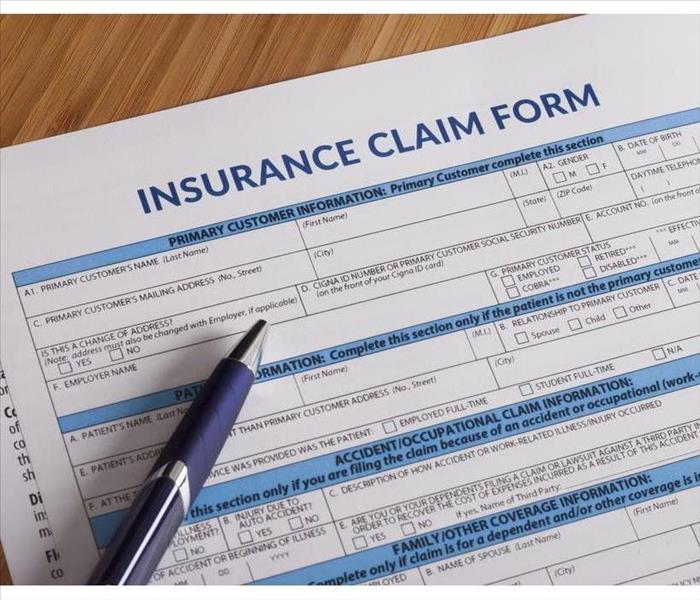 The sooner you make a claim, the sooner the storm restoration process can begin
The sooner you make a claim, the sooner the storm restoration process can begin
4 Steps to Ease Storm Repairs
Nature has a way of making a smooth-sailing business in Pulaski, TN, being forced to deal with water damage and other issues after a storm. In these cases, time is always of the essence, especially when water is concerned. Having to tear out saturated drywall, carpeting, and other porous materials may be key to prevent ongoing issues. After the storm passes, the following tips can help ease the process and get your business back on track.
1. Inspect the Property
Once it has been determined that the building is safe to enter, check the property for broken windows, flooding, leaks and other damage. If possible, board up windows and remove unaffected items to keep them from becoming damaged. The process of removing excess water should begin right away.
2. Document the Damage
Take photos of the interior and exterior. This includes detailed photos of equipment, furniture and other valuables that have been damaged. It is important to document any missing shingles, siding damage or other structural issues, as well as HVAC systems.
3. Make a Claim
The sooner you make a claim, the sooner the storm restoration process can begin. It is a good idea to keep your insurance representatives number saved in your phone for quick, immediate access. If other businesses or homes in the area received significant damage, an immediate call can help you be at the top of the list. When the adjuster comes, be onsite to assist with any questions.
4. Get Professional Help
Contacting a water remediation and restoration expert is key to getting your property back to “Like it never even happened.” They will perform a diligent inspection, including what isn’t always visible, and complete the necessary cleanup. During the restoration process, the experts have industrial tools to eradicate excess moisture, tear out damaged areas and replace what needs to be replaced. While they may have to tear out some portions, a trusted professional will do their best to salvage what they can to reduce your losses.
While dealing with storm damage can be an unexpected headache, having a plan and getting the right help can make it easier.
How Our Specialized Equipment Can Restore Your Home In Columbia
3/9/2020 (Permalink)
 If you ever need moisture extracted from your home, call SERVPRO of Maury / Giles Counties at (931) 388-4248 any day of the week.
If you ever need moisture extracted from your home, call SERVPRO of Maury / Giles Counties at (931) 388-4248 any day of the week.
Water Cleanup Experts In Columbia Talk About Different Extraction Tools
If excessive moisture ever happens to find its way into your Columbia home, it is wise to call in the professionals. Our highly trained team at SERVPRO is experienced in working with water cleanup projects both big and small. During any moisture-related damage scenario, it is easier to remove moisture while it is in liquid form. We know that the more liquid H2O we can extract the quicker the drying process will be. We conduct water cleanup quickly by using advanced technology and industrial extraction equipment.
Whenever moisture gets inside your dwelling, the problems get worse the longer items inside your home stay wet. Conducting water cleanup in Columbia quickly can help prevent secondary damage like humidity and mold issues. Once materials inside a house get wet, the humidity levels rise which can cause problems with items that didn't come into direct contact with moisture. Humidity levels can also create an environment that is ideal for fungal growth. All mold needs is an organic food source like paper or wood, moisture, the correct temperature, and time.
Since problems can get much worse over time, our SERVPRO team provides fast 24/7 service. We are available all of the time to answer the phone and arrive at your residence promptly. As soon as our IICRC certified technicians arrive they set up equipment and begin extraction.
Depending on what inside your home gets wet our SERVPRO technicians can use different types of extraction tools and vacuums. The advanced technology our experts have at their disposal allows us to use a combination of specialized extractors and tools to pull out moisture. For example, we can use a portable extractor and a small handheld water claw tool to get into tight spots. If your carpet gets saturated, then we can utilize a truck-mounted extractor and a heavy-duty weighted extraction tool that compresses your carpet to pull out as much water as possible.
If you ever need moisture extracted from your home, call SERVPRO of Maury / Giles Counties at (931) 388-4248 any day of the week.
Click here for more about Columbia.
Our Experts Will Save The Day After A Flood
2/25/2020 (Permalink)
 Our SERVPRO of Maury / Giles Counties water restoration technicians have the training and the tools to clean and dry up the mess.
Our SERVPRO of Maury / Giles Counties water restoration technicians have the training and the tools to clean and dry up the mess.
Broken Sprinkler System Can Flood a Columbia Plaza Construction
During the construction of new buildings throughout the Columbia area, investors and business owners alike work to see the job through to completion without unnecessary delays. Human error might account for many of these potential problems that push back opening dates for businesses within a newly constructed plaza, such as the improper installation of utilities or damaging overhead sprinkler units attached to active water lines.
With many sprinkler networks directly connected to the main supply of water to the buildings, your mid-construction Columbia plaza can quickly become flooded. In these situations, responding to the situation immediately is critical to help preserve affected materials as much as possible and prevent the spread of water damage throughout the property more than has already occurred. Our SERVPRO professionals can arrive fast to help slow the progression of this water as we get mitigation tactics underway to extract and dry the damaged areas.
Our rapid response team arrives with our industry-leading equipment designed to remove excess water from your buildings quickly and efficiently. From truck-mounted pumps to portable extraction machines, our technicians on site can effectively remove all of the pooling water fast to make our drying efforts to come more successful.
Flooding within your new construction can leave your investors and future business lessees uneasy. Taking care of the damages to the facility as promptly as possible is vital to re-establishing control of the situation and ensuring that with the help of our SERVPRO professionals, that these prospective businesses and franchise locations can open as planned. This assurance begins with a prompt response from our trained professionals equipped with the knowledge and equipment to make a difference fast.
While you cannot account for the likelihood of human error throughout the construction of a plaza, you can choose the right professional restoration team to overcome potential hazards and damages resulting from flooding. Our SERVPRO of Maury / Giles Counties water restoration technicians have the training and the tools to clean and dry up the mess. Give us a call anytime at (931) 388-4248.
Check out the Columbia Arts District for more information click here.
Spring Hill Stores Get Rescued from SERVPRO Water Loss Mitigation Services
2/25/2020 (Permalink)
 Commercial damage is our specialty
Commercial damage is our specialty
Fast Extraction Techniques for a Spring Hill Coffee Shop
When water loss incidents threaten your coffee shop, even isolated events like considerable spills can spread too quickly for your staff to keep up with and manage. The last thing that your shop needs is mold growth that shuts down your business until the appropriate personnel and inspectors can affirm that you are safe to rejoin the food and beverage industry. It is wise to reach out to professional restoration technicians like ours to help you limit loss and return the property to its original condition fast, whenever possible.
As the owner of the coffee shop in Spring Hill, you have many concerns that follow your need for water removal in the building. The first of these is all of the structures and woodwork that make up your counters, storage, and flooring. Our SERVPRO professionals have drying equipment that can keep these elements safe from necessary tear out and reconstruction if we get notified of the emergency quickly enough.
With water removal, extraction is the vital element that ensures that our technicians can begin the necessary restoration work as promptly as possible. We arrive with many different tools for this step, including gas-powered pumps, extraction wands with wet-vacs, and even portable electric sump pumps that can run off of generators we provide if your building has lost power.
Restoring elements like hardwood flooring, even high-quality laminates intended to look like hardwood, is often an intricate process. For preventing the excessive drying of these materials, our SERVPRO team installs large drying mats to slowly draw moisture out of the seams and planks until the desired moisture level gets reached. Overly drying materials like wood flooring can cause as many damages as allowing them to become oversaturated and distort.
Protecting your business after a water loss incident does not have to be complicated when you reach out to the right professional team. Our SERVPRO of Maury / Giles Counties technicians are standing by to help, 24/7, at (931) 388-4248.
Click here about our public library
Flood Damage In Your Columbia Home Does Not Stand A Chance Against Our Team At SERVPRO
2/21/2020 (Permalink)
 Handling flood damage is challenging but enlisting the help of a professional eases the process.
Handling flood damage is challenging but enlisting the help of a professional eases the process.
Tackling Different Challenges After Flood Damage In Columbia
Flooded properties present several challenges including contamination because floodwaters collect all sorts of wastes including raw sewage and industrial chemicals. Depending on how high the water rises, they might affect parts of the structure and contents like upholstery. Restoration, therefore, involves different actions including teardown, cleaning, and drying of the affected areas.
Dealing with contamination after incidents of flood damage in Columbia is a matter of priority because the toxic wastes and microorganisms involved can lead to health issues. Our SERVPRO technicians rely on different resources to counter this problem. We spray an EPA-registered disinfectant immediately after arriving at the loss site. Our crews are also equipped with necessary PPE, personal protective equipment, eliminating chances of contact with the floodwaters. We have high-speed truck-mounted water extractors and pumps to remove standing water from the loss site fast.
Salvaging items after property floods is a race against the clock because when items remain submerged for long, the likelihood of saving them dwindles. Some materials, especially the porous ones, cannot be saved because contamination spreads beyond the surface where cleaning action may not be sufficient. Our SERVPRO crew separates items into different categories establishing what to salvage or throw out immediately. We clean the non-porous items using professional cleaning agents to eliminate soiling and contamination.
Proper drying of the affected structure is necessary to prevent secondary problems like mold, rot, among others. The threat of mold is remarkably high because it starts growing within the first 48 hours of exposure to excessive moisture levels. Our SERVPRO teams utilize different techniques when drying the structure. We have high-speed air movers to direct airflow because air circulation is one of the most critical aspects of drying a structure. We also have a variety of dehumidifiers to handle different stages of the drying process. Our crews also bring portable generators to supply power to the drying equipment ensuring that the process continues even if there is no power from the mains.
Handling flood damage is challenging but enlisting the help of a professional eases the process. Call SERVPRO of Maury / Giles Counties to help. You can reach us at (931) 388-4248 any time. We’re Faster to Any Size Disaster!
Click here for more about Columbia.
Reducing and Assessing Damage from Kitchen Water Disaster
2/20/2020 (Permalink)
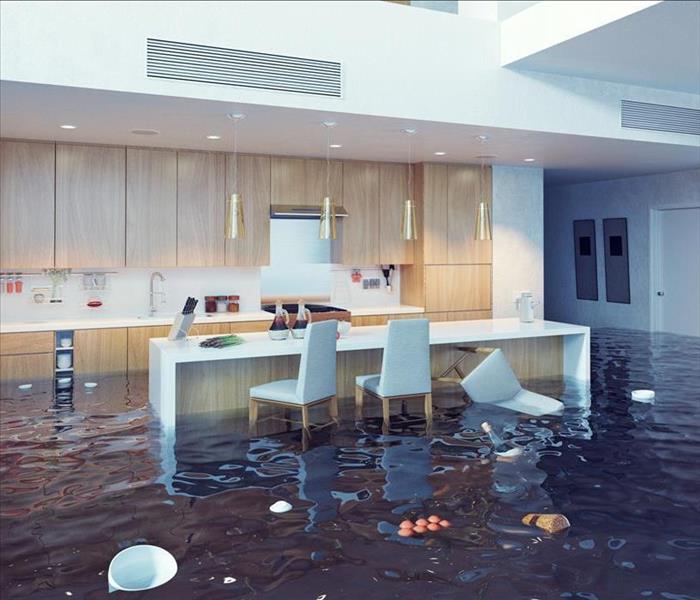 Flooded kitchen in Spring Hill, TN
Flooded kitchen in Spring Hill, TN
After a Kitchen Flood Take The Following Five Actions
When most people think of flooding in their homes, they think of basements and bathrooms, but kitchens are also contenders when it comes to water damage. While plumbing may be limited in the kitchen, broken lines, pipes or appliances can lead to significant damage. Therefore, if you come home to a kitchen flood, then take the following five actions.
- Shut off water
- Call for help
- Call insurance company
- Dry surfaces
- Repair plumbing and damage
Shut Off Water
The first thing you need to do when you find water in home is shut off the supply. If your issue is stemming from the sink or dishwasher, then the shutoff valve is likely found under the sink. However, if it's coming from a refrigerator, then the supply may be located behind the appliance. If you are not sure where to find the supply, then turn off the main water line in the home.
Call For Help
If the damage is extensive, then call a water mitigation company in Spring Hill, TN. These businesses often have quick response times, usually within 15 to 20 minutes. A team will arrive at your house and assess the damage, coming up with a recovery plan for your approval.
Call Insurance Company
Next, if the flooding was significant, then you should call your insurance company to file a claim and get assistance paying for any repairs. However, if the damage is minimal, then it is possible to clean up the mess without risking your premiums.
Dry Surfaces
If you hired a remediation company, then they will begin drying the affected area. Also, once the space is clear of excess water, the company will typically set up dehumidifiers and air movers to dry the space thoroughly.
Repair Plumbing and Damage
Last, the company will perform the necessary kitchen repair. The restoration also includes the removal and repair of any extensive water damage.
While in-home flooding typically occurs in basements and bathrooms, kitchens are also susceptible. Therefore, know the steps above, so you are prepared if you ever face a kitchen flood.



 24/7 Emergency Service
24/7 Emergency Service










